
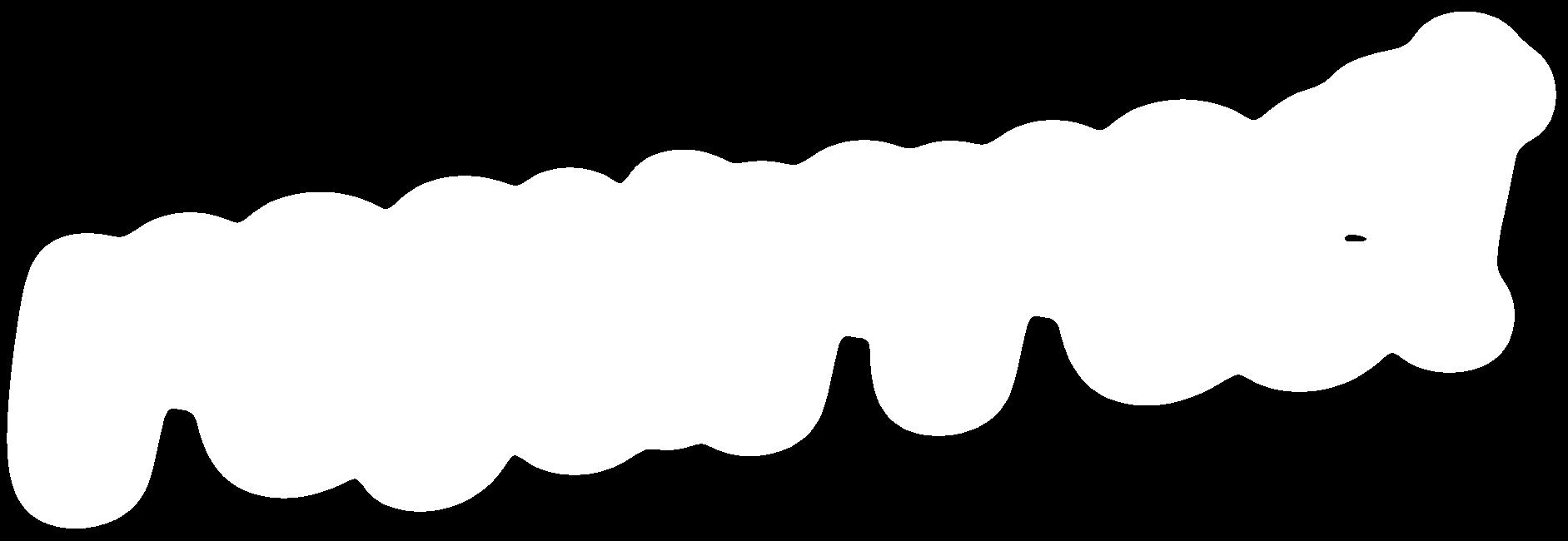
foundingeditor&co-editorinchief addie tsai
co-editorinchief
sarah sheppeck
disability&accessorganizer
sky cubacub
editor,themaneattraction
sarah sheppeck
editor,theglowup&afrodisiac
sarah sheppeck
editor,solemates&(getyour)threadinthegame jen st. jude
editor,noscrubs
jo davis-mcelligatt
editor,sewwhat¬whatitseams
jj rowan
editor,triplethread(s)
kirin khan
editor,cancel&gretel
sky cubacub
editor,features&fat+furious addie tsai
coverart
crystal vielula
issuedesigner
keet geniza
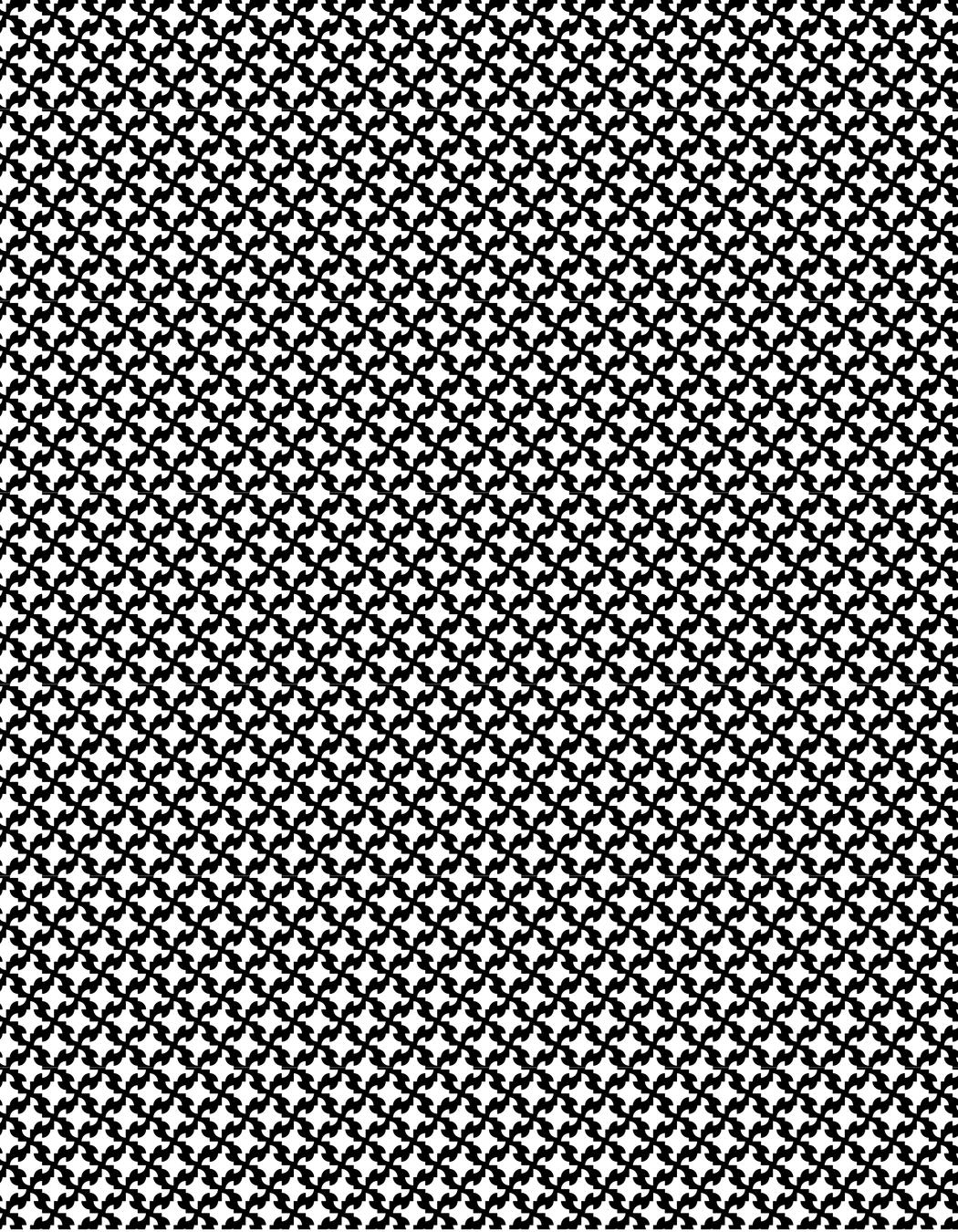
just femme & dandy is a biannual literary & arts magazine on fashion for and by queer, trans, two-spirit, nonbinary, and intersex people. We are an anti-racist, pro-Black publication and aim to centralize and celebrate work from Black and Indigenous people of color. We encourage submissions about fashion and “in”/visible disabilities, fatness, chronic illness and pain, poverty, neurodiversity, mental illness, and other forms of intersectional marginalization.
We believe in equal access to collective joy, so all art in this issue can be found on our website in plain text with image and audio descriptions and captioning. For additional access needs, please contact our disability & access organizer Sky Cubacub.
vol.05:summer2023
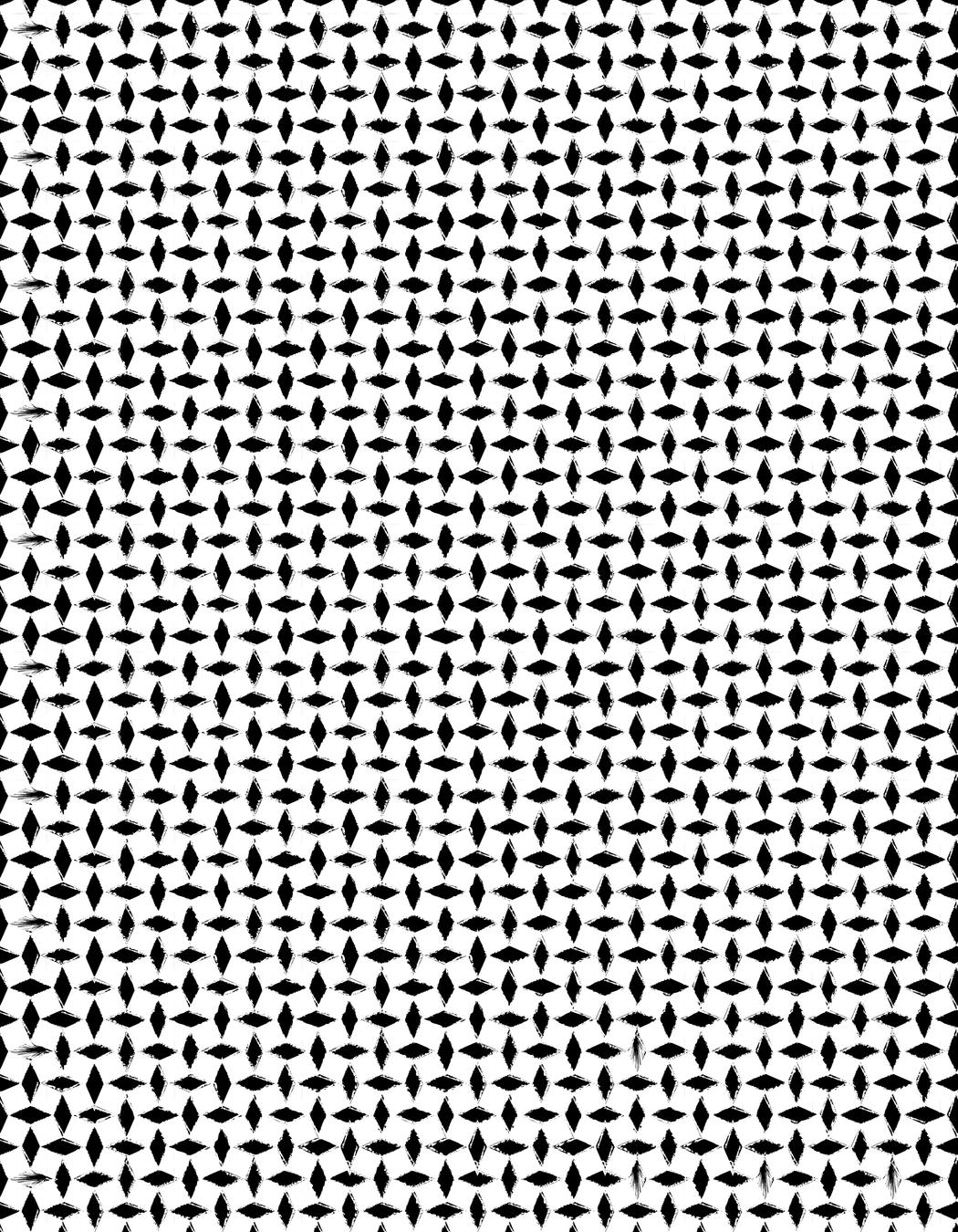
©2023justfemme&dandy
justfemmeanddandycom
tableofcontents letterfromtheeditor|6 anoteonaccess|7 cancel&gretel michellezacariaslosingmylegandfindingmyfooting|9 nickvanzantenmyformfits|12 marta“elena”cortez-neavelthingsstartedfallingapart|17 fat+furious sghuertacrowdedcloset:crawlingtowardsselflove|28 theglowup alisonlubarMANI-CUREforthenewlyassembledthankstovoguevoid|31 ashishkumarsinghnailpolish|32 carapleymthewayyoushouldalwayshavelovedyourself|33 aubrythrelkeldmyaunttheresa/mygiacarangi[killedherself–she visitedthreetimesaftershedied]|34 themaneattraction erikfuhrerreachoutandbrushfaith|37 afrodisiac davinmakokhacottonballsforthelonelyfloor|43 noscrubs dandy-liaccothemaskasfashionaccessory|46 ethanwoodroom448b|51
tableofcontents
sewwhat
laurensamblanetwebsspunbysmallcreatures|61 giondavisthisbarbieisaken|68
t-boyswag|71 pimhalkaglitterbeard|74 notwhatitseams
howglitterwasinvented|78 jfrausto@the.thrifted.gay|79
solemates
angelleybaicrywhenirewatchrupaul’sdragraceseason9|83 stephscottfindingmyselfinmysneakers|84
triplethread(s)
alisonlubarfemmedragon|90
j.d.gevry“canihelpyoufindanything?”:myhuntfortranstastic weddingattire|91
alexcarriganblackisthecolor|98 riverbarefootonabalustrade;beaded|99-100
maggiechirdolikebones,likeskin:agoldenshovelafterkimaddonizio; florals?forspring?groundbreaking;intricateritualsfortouch; billcunningham'sghostleadsme;selkiestatisticaloutliers|101-105
106
108
111
123
maxstone
brodyparrishcraig
features
hollygenovesetheotherside|
gabemontesantikingsandnotgirls|
alisonlubarthegender-affirmingcloset|
claraotto
abouttheartists|
abouttheteam|
luckygirl|114
118
letterfromtheeditor
When the late, great Nina Simone an icon in the truest sense of the word died in 2003, she left behind a legacy that met at the intersection of art, civil rights, and Black excellence. Though April marked the twentieth anniversary of her passing, her impact continues to be felt in art of all genres and mediums, as if the parts of her she chose to share with us are still brimming with life.
This volume’s theme, Resurrect, was selected in Nina’a honor. Addie and I hoped to inspire pieces about rising from ash, about building a new life from rubble, about standing up for the final round just when everyone else thought it was over. And, of course, we wanted it all captured through the lens of queer fashion.
This volume’s submissions did not disappoint, and our sections are packed with pieces that span style, format, meaning, and message, much like the work of Ms. Simone herself.
Our stellar team of editors selects each submission with love and care, and none of them are to be missed; however, there are some personal favorites that I hope you’ll spend some extra time with. This volume’s cancel & gretel section is packed with exceptional work, like Michelle Zacarias’s essay, “Losing My Leg and Finding My Footing.” afrodisiac features a striking poem about the proverbial Big Chop, by South African writer Davin Makokha. And of course, I’d be remiss not to give a special shout-out to Ethan Wood’s important piece on age gaps in relationships among gay men, which was illustrated by our own Jo Davis-McElligatt.

As you explore the issue, you’ll likely notice that things look a little different. We figured that while we were on the subject of resurrection, we’d breathe some new life into just femme & dandy with a completely new layout and design, courtesy of our incredible graphic artist Keet Geniza. We have big plans for our little passion project and are honored to have your support along the way.
We are, as always, deeply proud of this volume and the work of our contributors. We hope that as you make your way through the issue, something you once believed was long dead in you is resurrected as well.
Feeling Good,
Sarah Sheppeck Co-Editor-in-Chief
anoteonaccess
I am Sky Cubacub, the creator of Rebirth Garments, a clothing line for queer and trans disabled folx of all sizes and ages, the writer of “Radical Visibility: A QueerCrip Dress Reform Movement Manifesto” and just femme & dandy's cancel & gretel editor! I will share my identities with you all so that you understand where I’m coming from and who is in charge of accessibility for this awesome magazine! I am queer, nonbinary xenogender, and I use they/them/their and xe/xem/xyr pronouns. I’m half Filipinx-American and half white, and I am in my early thirties. I have non-apparent disabilities including lifelong anxiety, panic disorder, depression with a still undiagnosed developed stomach disorder I acquired later in life, C-PTSD (I am a survivor of DV), and newly diagnosed Chronic Fatigue Syndrome that developed after having Mono.
For this issue & going forward for all future issues, we asked contributors to write make their own image descriptions! Image descriptions and audio descriptions are always incomplete because you can endlessly describe anything. If you are interested in learning how to make internet content accessible, follow my friend Alex Chen on Instagram. You can also check out the Alt Text as Poetry project, a collaboration between artists Bojana Coklyat and Shannon Finnegan, supported by Eyebeam and the Disability Visibility Project.
Access can always be improved, so please contact us to request specific accessibility accommodations you need, and I will do my best to make it happen!
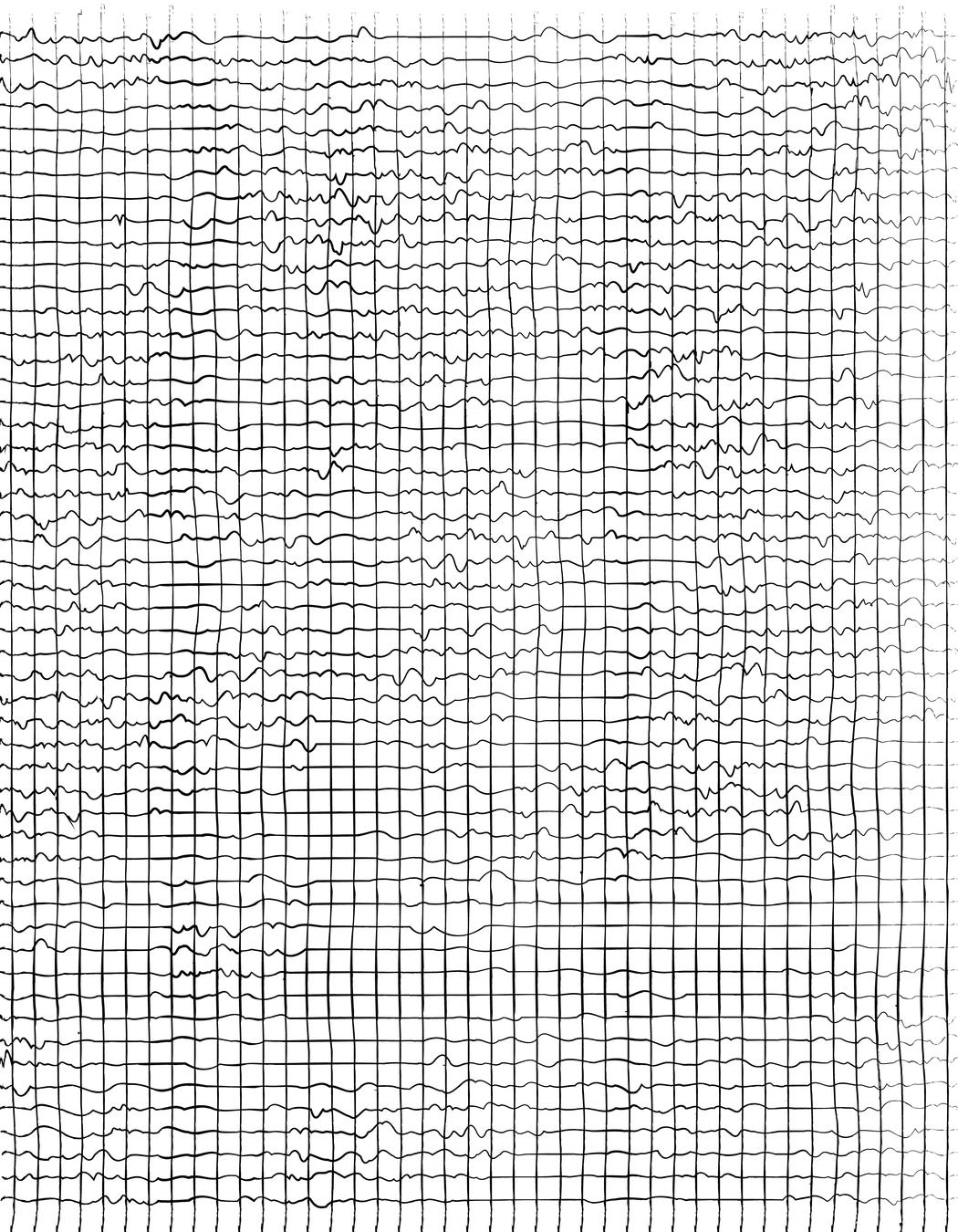
cancel&gretel
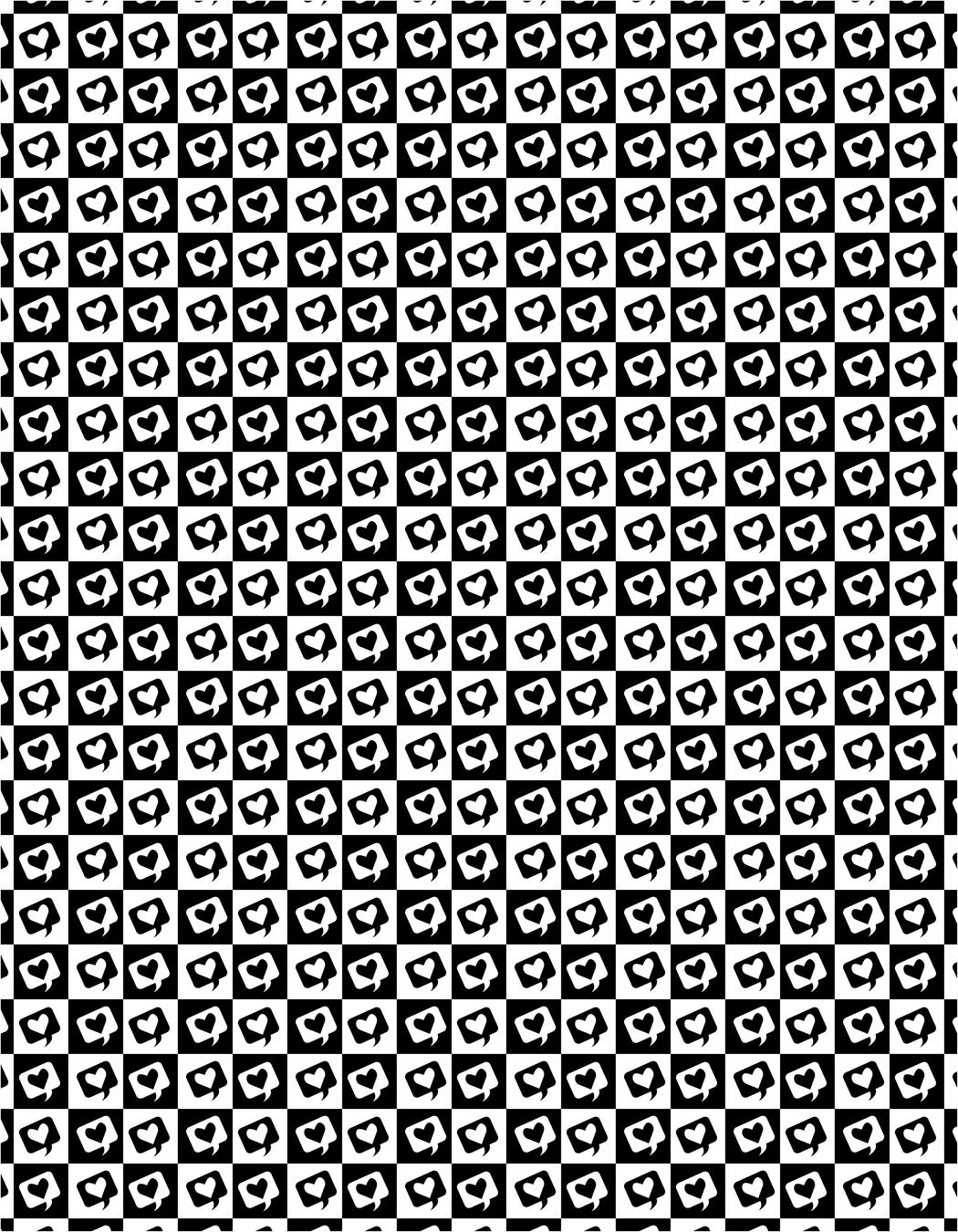
losingmylegandfindingmyfooting michellezacarias
I lost my leg when I was 9-years-old, which is honestly a terrible age to become an amputee.
Not that there is necessarily an “ideal” moment to lose a fourth of your body, but at 9years-old I was still learning so much about my “brand” and identity. Was I an alternative chick? Was I a tomboy or was I defying gender norms because I was very gay? Was I the artsy nerd who took down her ponytail and took off her glasses to then become an overnight prom queen? Could I be the beloved “hot Cheeto” girl who rocked oversized hoops and Cookie Monster pajama pants - successfully setting the bar for peak 2000’s middle school aesthetics?
I was none of that. I was an awkward pre-pubescent Latina girl who was one leg short of having a shot at being popular.
I never considered myself “fashionable” growing up. Partly because I had no sense of “style” but mostly because my disability made it impossible to find comfortable, cute and accessible brands. Nobody ever tells you that when you become disabled your clothing and shoe options become severely limited which is also the case for fat folks, trans/nonbinary folks and pretty much anyone who falls outside of fashion brand’s target demographics.
I, on the other hand, never even got to even establish how I wanted to be perceived before I was shoved into oversized jeans and black slip-on orthopedic shoes. Good shoes are imperative for lower-limb amputees; your shoes must support the entire weight of your shifting and wobbling body as you’re re-learning to walk. Shoes must withstand the wearand-tear of the impact that the prosthetic foot has on the ground. Shoes should make it easier to navigate an already ableist society.
09
I was always stuck with ugly brown or black Velcro sneakers that clashed with practically everything I wore. This was my abled-bodied mother’s way of dealing with the difficulty of working my prosthetic foot into shoes. I don’t particularly blame her sensible cute shoes were expensive. Orthopedic shoes are also necessary for various types of people, but we are hardly presented with a variety of options. I wish we were allowed to take up visual space, even if it means less money for corporations.
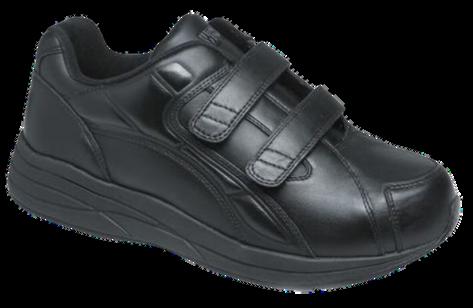


That’s the thing nobody talks about, although we make up about 27% of the U.S. population, disabled people are not seen as “profitable.” Instead, we are conditioned to shrink ourselves and hide our disabilities… or otherwise “pass” in society. After all, we are already “inconveniencing” people with our ACCESS NEEDS, God forbid we demand comfortable shoes that are reasonablypriced and look amazing with our various bodies.
I dressed in camouflage for many years, figuratively speaking. I wore whatever it was that made me disappear into the background. It was either blend in or get relentlessly bullied. In 7th grade I had a middle-school bully named Kyle who made my life a living hell. He wasn’t the only one, but he was definitely the ringleader of the group and I was his favorite target.
The first time that I recall having normal conversation with Kyle was when I showed up to school in Timberland boots. I asked my mom to buy me a pair because they were durable and easy to slip on my prosthetic foot. Unbeknownst to me, they also happened to be one of the most popular shoe brands out at the time (I was very sheltered lol). Timberlands had the structural makings of a combat boot but with a cool suede exterior and were being frequently worn by rappers like Jay Z, DMX, and members of the Wu-Tang Clan. Cam'Ron famously owned customized pink Timberlands and R&B singer Aaliyah (RIP) always wore the traditional beige ones.
10
Afterall,wearealready "inconveniencing"peoplewith ourACCESSNEEDS,Godforbid wedemandcomfortableshoes thatarereasonably-priced andlookamazingwithour variousbodies.
I distinctly remember arriving at school that morning, putting my backpack down on my desk and hearing Kyle from behind me ask, “Are those Timberlands?”
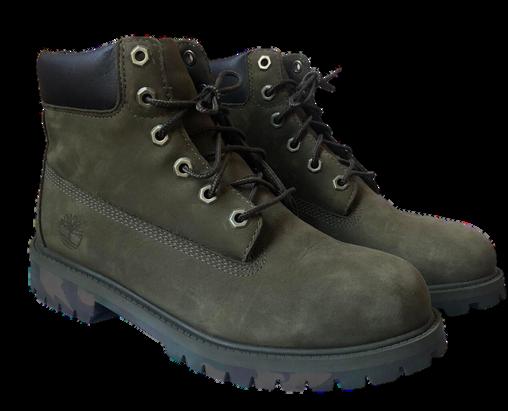


I was too flustered by the lack of hostility and genuineness of the question to answer right away, “Um…yeah I think so.”
He looked me up and down, calculating how to respond. Meanwhile, I held my breath.
“They’re cold.”
That was probably the first and last time we ever had a conversation that didn’t involve him berating me (although honestly fuck that kid, I hope he ended up becoming a better more empathetic adult lol). The interaction left an impression on me though it allowed me to feel seen in a world that typically made me feel so invisible. At 33-years-old I still don’t consider myself “fashionable,” but I do feel confident and affirmed in my body. I don’t shrink myself anymore.
Who knew fashion could bring out the humanity in people? ■
11
myformfits nickvanzanten
When at age 18 I left Evanston, Illinois, just outside Chicago, to go to art school in New York, I didn’t expect that I’d ever return. So years later when, feeling stuck in my art and my life, I applied to MFA programs, I was ambivalent to find that the only one that would take me was in Chicago. Convinced though I was that graduate school would be the change I needed, I was still afraid to move back. I eventually decided to go under the premise that returning to my hometown was how I would discover what it was that felt so wrong. I would take a little trip to Chicago to rectify myself so that I could come back to New York able and ready to really live. I thought of it at times as a pupation, as in how a caterpillar becomes a butterfly.
It took the better part of a decade but I actually managed to do it, or at least to start. I didn’t know consciously at the time that what I needed to do was come out as bi, kinky, and trans nonbinary. At some level, not even all that deep, I knew I was all those things, but at the time I’d thought I’d keep on pretending not to be forever. I’d been making bad art, and wrecking relationships and friendships and just generally being unhappy in New York because I’d been committed, since my teenage years, to closeting myself in almost every way that mattered, and nearly everything that I did was a lie told in service to that. The art that I applied with - which was well enough received to get me waitlisted at some fancy schools - was all about taking something and painstakingly making it look like it was something it wasn’t. Packing peanuts that are cement instead of styrofoam, that sort of thing. They must’ve seen promise in my winking at them, but worried, not unreasonably, that I was too timid to fulfill it. Over the course of my time in Chicago, though, I grew to be more honest with myself and in my art. Coming, as it did, from a place of sly reference it provided me with a way to slowly, sheepishly introduce the real me to myself and to the world, and to imagine and experience myself as I really wanted to live.
12
I started sewing right around the time that I moved, teaching myself through YouTube videos and with help from my mom and some friends who worked in fashion. I admired Leeza Meksin’s fiber work, and she inspired me and told me where to shop. I was lucky enough to live across the street from a store - Discount Textile Outlet, in Pilsen, Chicago - that had an irresistible selection of loud, garish fabrics. Not even knowing what to do with them I loaded up on shiny and iridescent lycras and vinyls. I began with underwear made out of woodprint spandex, then moved onto leggings and skirts. Despite being in an MFA program my art wasn’t nearly as exciting, so I started folding the clothes I was making into my paintings, making them partially wearable. I called these pieces Formfits, which worked on many levels but also happened to be the name of
the lingerie company that had originally occupied the building my graduate program was in. A formfit comprised a garment, which I might wear, and an abstract construction sewn of the same fabric which would receive the garment when unworn and hold it on the wall to be displayed. They were couched in language of potential, and contingency, but also privacy and exclusivity - if I wore the piece, it would come apart, and so it couldn't all be seen at once. They pointed towards my gender nonconformity without my actually living it. As time went on I became more confident and my personal fashion began to follow what I was doing with my Formfits, becoming more genderqueer. Sewing was incredibly freeing to me because I could wear vinyl skirts without having to worry about sizing or shopping in person and having to brave the women’s
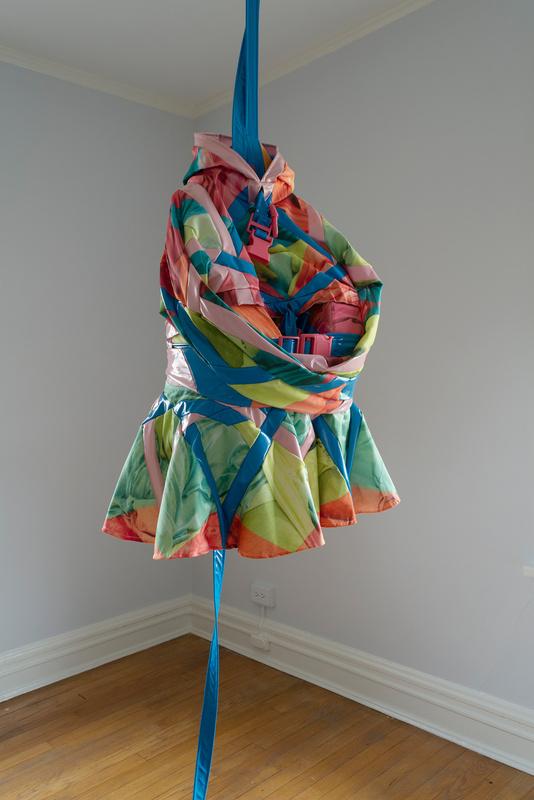
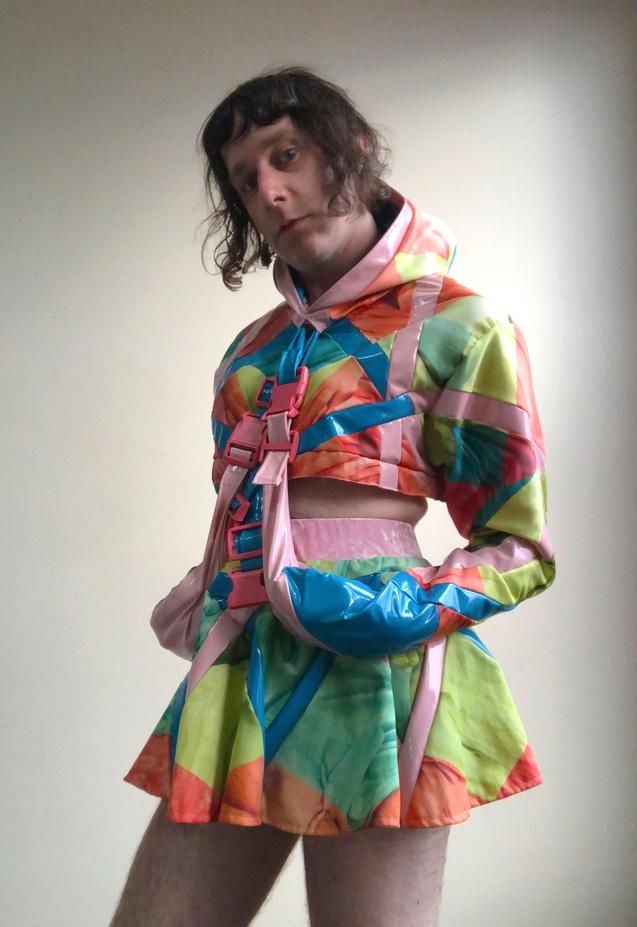
13
section while being read as a man. In time I shaved my beard, grew out my hair, and started using they/them pronouns, and with each of these little steps became happier with myself until gradually something had fundamentally changed inside me, and I became aware of a sort of comfort with myself that I’d never realized I could feel so continuously and publicly.
My final Chicago Formfit, no. 24, is alternatively titled The Parental, and served as a sort of culmination of my whole time in Chicago, completed just before I left. It was as explicitly about being trans as I could get at that moment (having already made artwork incorporating dresses, bralettes, and skirts), and was designed to be shown in my childhood bedroom in Evanston. In late 2021 my parents left town for three months, giving me access to the
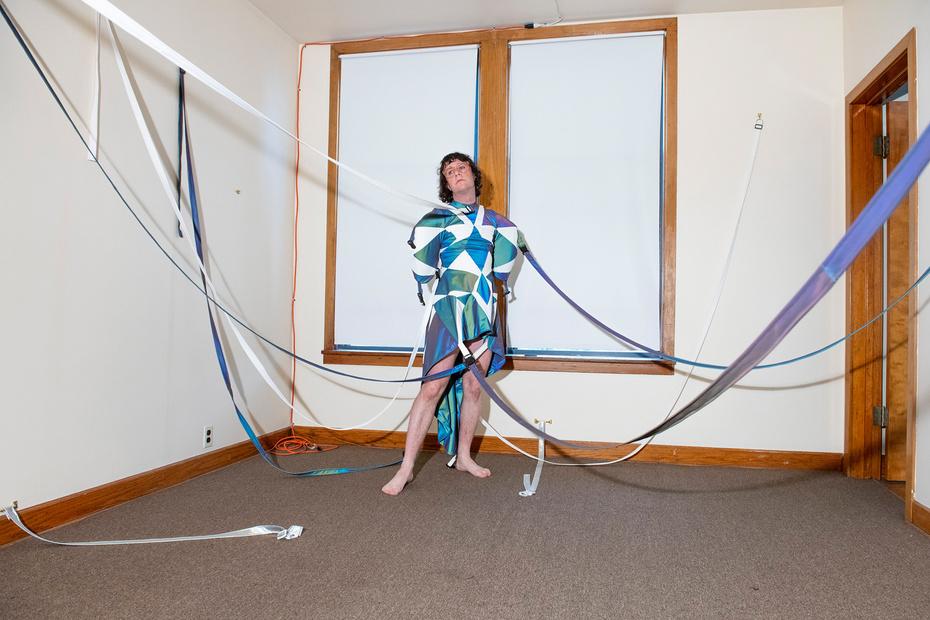
house I grew up in without their presencesomething I’d never had except for one time in high school, when I tried to have a party and somehow both failed and had the cops called. When I’d been debating moving back to Chicago friends had told me about the DIY gallery scene there, where people would have art shows in their garage, or on a telephone pole, and I had thought it would be fun to run a gallery (the Parental) out of my childhood bedroom in an iconic middle-class suburb where John Hughes movies had been filmed. My parents, however, had quashed the idea. When they left town I had already decided I was returning to New York in a few months, but the idea came back to me, though now it would only be a single piece, with the room retaining the few traces of my childhood that remained, rather than becoming a bare white cube. I still wasn’t sure what to make for the room, but after much deliberation I gave in to the memories of the meditations that I’d had in that room long ago, and the desires that I had felt while living there and for so long suppressed and denied.
I sewed a padded bra and gaff out of pastel pink and blue velvet, made matching bedsheets, and photographed myself on my childhood bed. I then edited the photos to fit my garment patterns, dropping out cyan in some parts and magenta in others, and sewed a short circle skirt and hooded straightjacket out of them. Wearing these and with new vinyl bedding I shot more photos in my room, which I used to make a fabric-covered foam support on which the clothes could be displayed. The top and the mannequin had straps and buckles,
14
allowing my arms to be held tight around my sides and the square mannequin to fold up, like a taco, and so hold the skirt and top. The straps also connected with attachment points that I installed in my old bedroom, so that the whole piece could hang there. About a month before leaving town I installed it, documented it, and showed it to my mom and dad. I had to pack it up after, because it isn’t my room, and hasn’t been for years. Now it hangs in my studio, a reminder of how far I’ve come, and a nice fit to put on when someone comes by and can help me with the buckles.
Later that year, when having a serious talk about my being nonbinary, my mom raised a question: what would my art be about now? For so long it had been my way of exploring gender nonconformity without
quite committing to being nonbinary. If I were to simply accept myself and live this way my art would have to change dramatically. The Formfits were how I finally found a way to indulge in dresses that folded my arms up at my shoulders and left me helpless. But at the same time, they were premised on there being a boundary between me and my art. By making these clothes as art I’d gotten to try them on, but I also kept myself from wearing them out into the street. I’d done it in part because I felt alone, and that it was the only way I could do what I wanted, but now that I was finding a community of people like me it didn’t have to be my only outlet. All along my art practice had been a reflection of my life, and had gone from being a reflection of my self-denial to a tool that I used to embrace my true spirit.
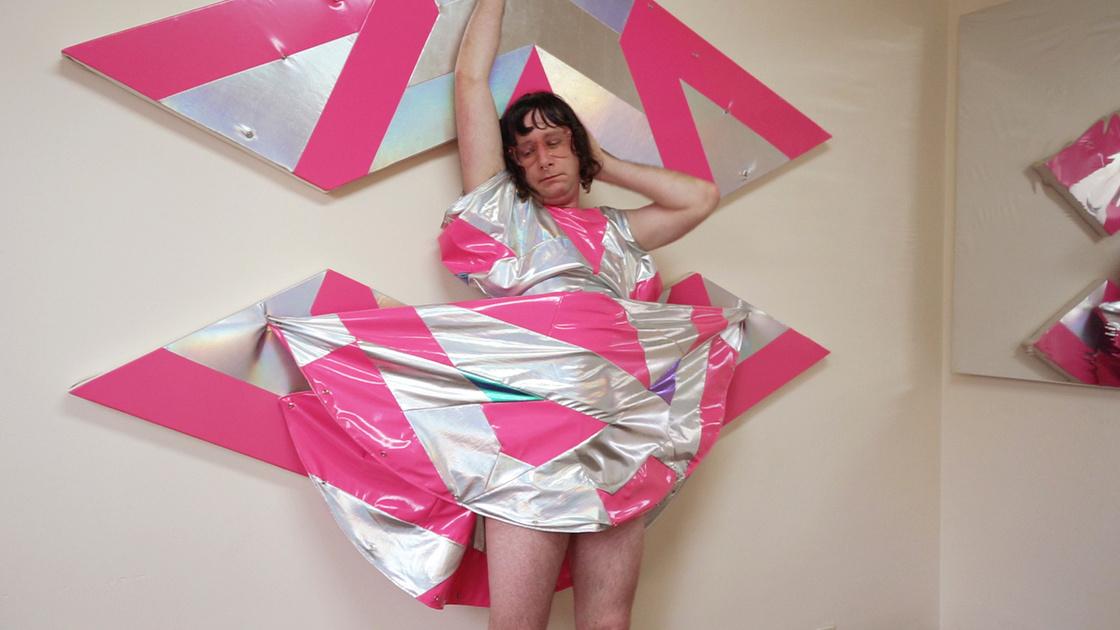
15
It wasn’t that she thought I’d have nothing to make, just that what I was making would have to be different once I accepted myself and began to live a life that was an actualization of the one I’d tried out in my artwork.
And my art has changed; my purpose in making it has shifted because what I’d captured in it isn’t solely confined to it anymore. I’m still making clothes for myself, many of them with bondage in mind, quite a few of them dresses, but for now I’ve stopped making supports to display them on. Instead of being too precious to wear and sticking them on a wall in a gallery, I’m hanging them in my closet when I’m not wearing them to other people’s art openings. I get a lot more satisfaction out of them now. It isn’t that I didn’t want to do this before, but that I wasn’t ready. I’m past hiding who I am and I don’t need to stand aside from my work as it hangs behind on the wall. My work is me and I can be in it and take it wherever I go. My transness isn’t abstract or contingent - it never really was - and so neither is my art. Rather it is a crucial part of my ongoing self-creation and fulfillment as the trans person I was all along but was too afraid to admit to being. My practice must and will change, as will I, but only for better. It helped me get to where I am now, but I still have a long way yet to go, and a lot more garments to not only make but to wear out, and wear out. ■
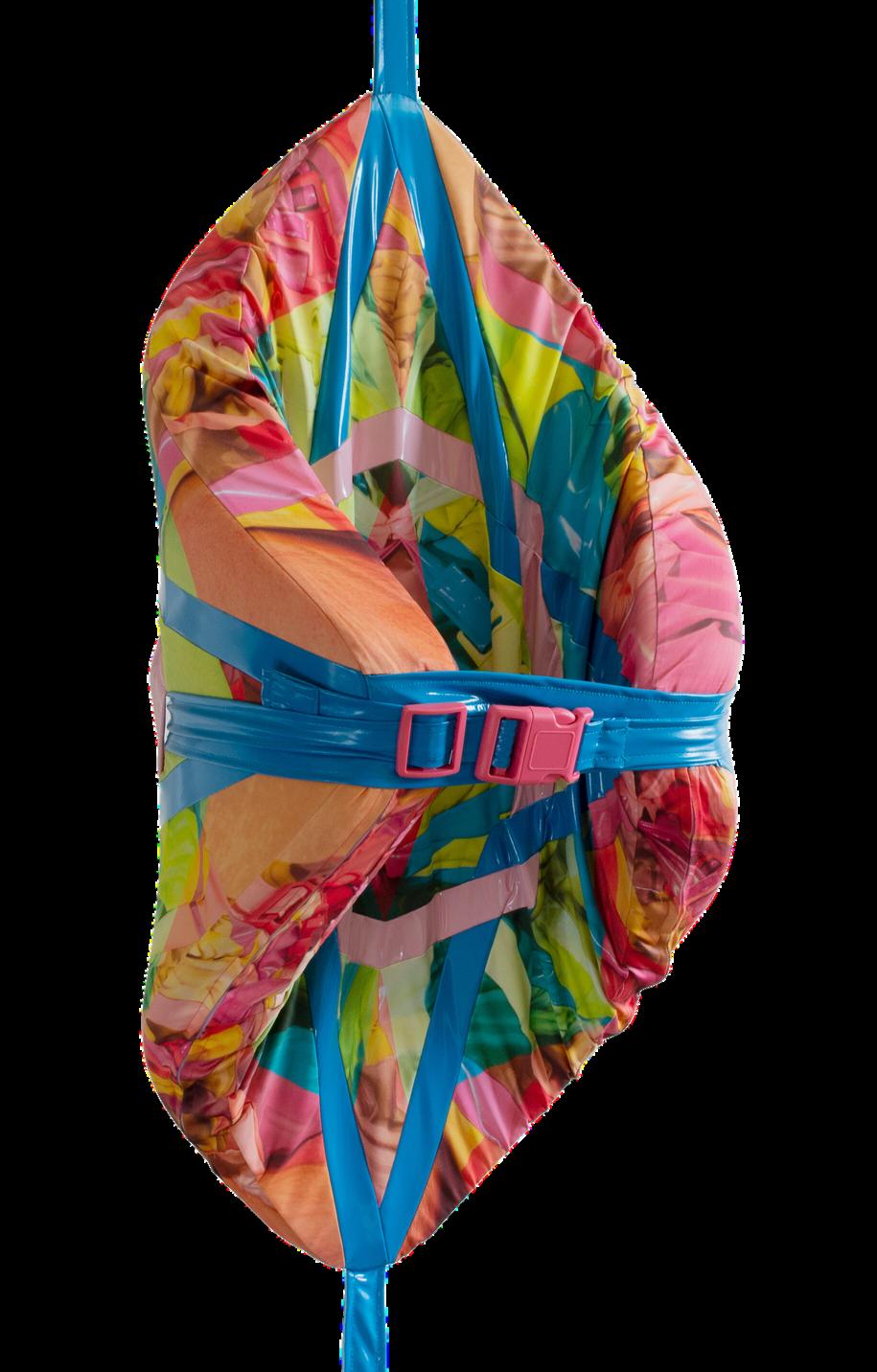
16
"I'mpasthidingwhoIam andIdon'tneedtostand asidefrommyworkasit hangsbehindonthewall."
thingsstartedfallingapart
martaelenacortez-neavel
Content Warning: Includes mentions of intimate partner violence
I graduated from college in 2014, with academic awards, artistic recognition, a handsome boyfriend, and a small business designing adaptive clothing and accessories for pediatric patients with medical devices. Over the next few years, my business, Abilitee, grew in size and popularity, and I was accepted into half a dozen U.S. medical schools. Everything I thought I wanted for myself was coming to fruition. My life looked fantastic. But it didn’t feel right.
Not wanting to give up my newfound passion for designing adaptive clothing just yet, I put off medical school for a year. Then another year. When I finally started school in California, it didn’t go well. I was anxious, severely depressed, and couldn’t get my mind off my creative work. Instead of studying, I was researching medically-safe materials, talking to parent support groups for medically complex kids, and sewing adaptive prototypes for families to test out. This work brought me enough joy to get me out of bed in the morning, but every time I got to campus for class, I felt like I was in prison: totally understimulated, in a bleak, sterile environment, and wearing an uncomfortable “business professional” uniform.
During this time, I also became more and more involved in the growing online disability community. I had formed friendships across the world with other neurodivergent and disabled activists, and I began to hear more and more about the near-universal experience of medical gaslighting and other medical trauma, including PTSD. I collected stories of physicians and the healthcare system repeatedly, and almost predictably, failing their most vulnerable patients. I have friends who’ve been thrown around from specialist to specialist with no physical improvement, friends who have been fired by their doctors for “being too complicated,” friends who have been denied care because they are fat. But when I inquired about what physicians are doing to address these significant issues, I found nothing. When I brought up the phrase “medical gaslighting” to my physician parents, they had never heard it before. When I looked at online medical journals to see who was researching these issues, there was next to nothing. I thought, “Why is no one listening? Why doesn’t the medical community care?”
17
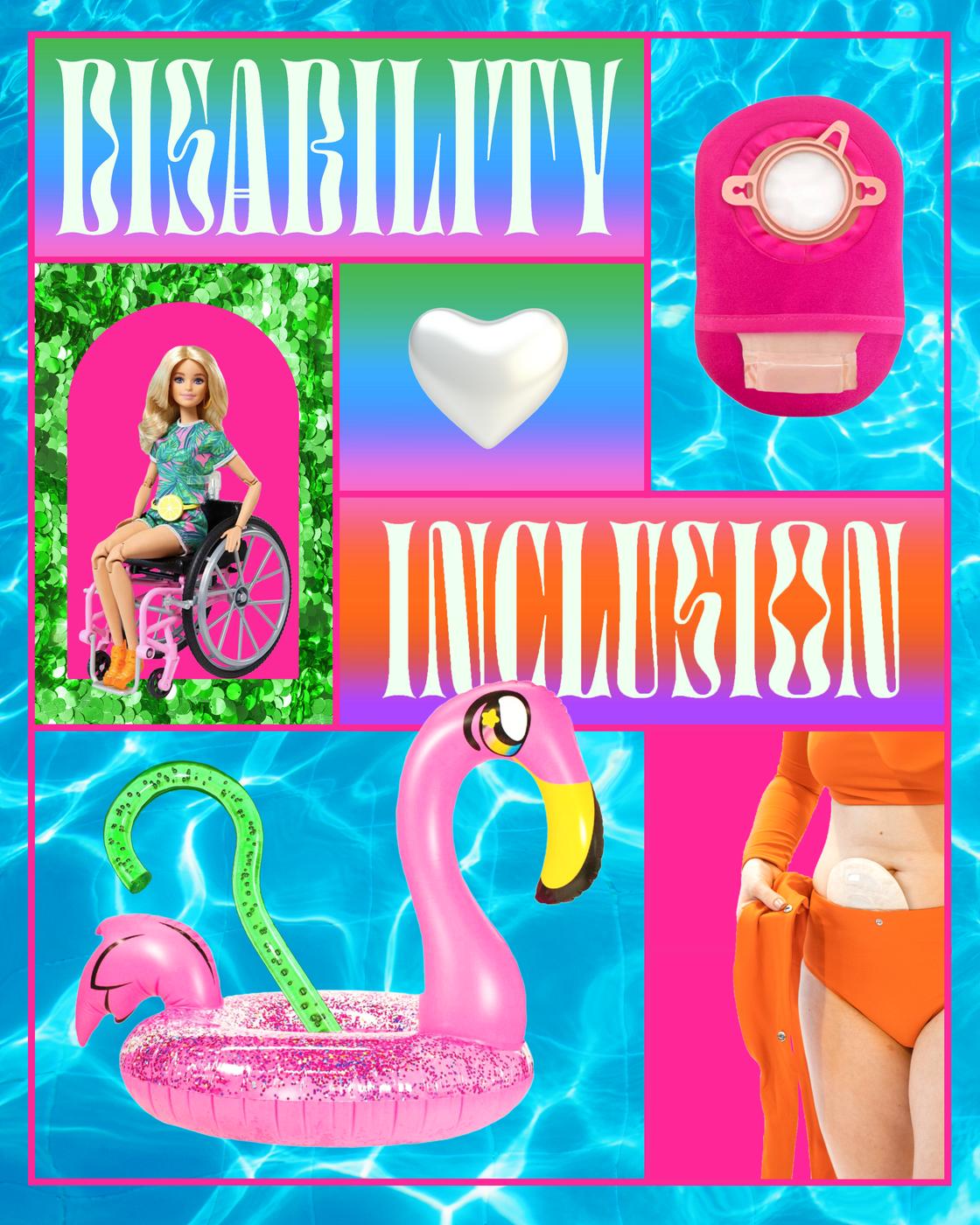
I was angry and disheartened, and became increasingly disenchanted with pursuing a career in such a fucked-up system. I felt like the work I was doing through Abilitee was making a difference. It felt meaningful, impactful, and much-needed. I heard how the g-tube pads I designed were reducing the incidence of accidental tube pull-outs in babies, which prevented excessive hospital readmissions. I heard of someone’s grandpa, who smiled for the first time since his colostomy surgery, after being gifted one of our “OH SHIT”emblazoned Ostomy Covers. And after our Insulin Pump Belts were released on aerie.com, as part of their first ever collaboration with an adaptive accessories brand, I read social media comments from Type 1 Diabetics around the world stating things like “This changes everything! I never thought I would feel so seen and supported by such a big mainstream fashion brand.” By then, I knew this was what I wanted to do with my life, at least for the next few years. So, I dropped out of medical school.
And then COVID-19 struck the world, and my life, like an asteroid. At work, we took extreme precautions, requiring our 8person team to work from home, or visit the office in staggered shifts, for work like sewing or packing and shipping orders. We required masks in-office, and allowed only one or two people to be there at a time. Every time someone came and left, we asked that they sanitize all surfaces they touched in the common areas. Our team switched to meeting over zoom and by phone. It was an incredibly tough year. I was co-managing a team remotely, while working on my own projects for upwards of 80 hours per week. Years into the business, I still wasn’t taking a salary. I just wanted to get the work done, and wanted to make sure our team stayed employed. I became increasingly anxious and isolated. My
My usual routine and support systems began to fall apart, which exacerbated the chaos and upheaval, as it did for many autistic, neurodivergent, and disabled people. I was talking with friends and family less and less. My boyfriend, who worked remotely as an attorney, started visiting more frequently, staying with me for weeks at a time. Just us two and my dog, Archie, almost completely isolated from the outside world. That year is when the fighting, gaslighting, and emotional abuse began.
In the past, he had violent blowups when things didn’t go his way, but the violence was never directed at me. I remember, after college, when he received a lower LSAT score than he thought he deserved, he blew up into a fit of rage: throwing objects into the floor and walls. Crying and shouting at no one in particular. It shook me, but I didn’t feel as if I was in any real danger. Later, during COVID, that would change. There were many red flags like this throughout our ten-year relationship, but I didn’t see them, or I ignored them, or I explained them away. Now, looking back, I see them everywhere. My personal experience was invalidated and disregarded, constantly. I was pressured into being intimate, convinced it was my responsibility to make sure he was satisfied, and there was little to no consideration of my pleasure.
At the same time, a professional relationship with an older mentor figure became increasingly toxic. Though we only met in person a few times that year, we spoke on the phone often. We would argue about facts. She would use her status and degrees to demean me and diminish my skills, intelligence, and creativity. She would threaten my future, and I began to believe that she held the keys to my professional success. Many of our calls
19
ended with me on the floor, crying and pleading for the yelling to stop. I didn't understand why so many of our conversations went in this direction. To make things worse, my boyfriend grew increasingly jealous of my time spent on work, furthering my career, and speaking with friends in the online disability community. So much so, that by mid-2020 I was not allowed to bring those things up in conversation. In the evenings, if I tried to share something about work, or talk about a conversation I had with a friend that day, he would get angry with me. I began to feel, more and more, that there wasn’t – and maybe hadn’t ever been – room for my “full self” in this relationship. The only version of me that was deemed "acceptable" was the version of me that tended to his physical and emotional needs above all else.
And then, Abilitee split apart. My former business partner, who funded the operation, went their own way. They started a new brand, and I kept the Abilitee name along with all of my research, designs, and ideas. But I was in a horrible place, mentally, emotionally, relationally, and physically. I had stopped taking care of myself, in nearly every way. I was doing what I could to feel safe from further abuse. I was self-medicating to cope. I was surviving, nothing more.
And things just kept getting worse. My boyfriend and I rented our first apartment together in a sketchy neighborhood of East Los Angeles. We didn’t have a yard, and I couldn’t walk my dog around the block at night without worrying for my safety. Everything in LA was still closed down. We both worked from home. He would be on the phone all day, talking to clients, his voice echoing through the apartment for hours on end. The neighborhood was loud,
too: there was constant commotion in the apartment complex, police and fire truck sirens blaring every other hour. At least once a week, helicopters boomed through the night sky, circling the area with spotlights and looking for suspects on the run. One night, around 2am, I heard gunshots nearby. For the next two hours, I watched as our street lit up with police lights, a crime scene was taped off, neighbors would be interviewed, and an ambulance came and left. I couldn’t escape the noise. It was sensory hell.
We started fighting more. He started screaming louder. Stalking me around the apartment, looming over me while tearing me down. I grew more and more confused and disoriented in my relationship, which affected my grasp on reality and the outside world. I had many meltdowns that year. My emotions were everywhere. I was so overwhelmed. I stopped achieving any level of productivity in my work, and we missed several of target re-launch dates for Abilitee. My life felt completely out of control. I felt worthless – like I was letting everyone down, including myself. And then, towards the end of 2021, right as our apartment lease was about to expire, I got dumped, and it sent me reeling.
Confused, terrified, hopeless, helpless, traumatized, I went home to Texas. With no one left in Los Angeles, it just made sense. My dad helped me pack up my life in California. At 30 years old, I moved back into my childhood bedroom. There, for the first time, I was forced to confront everything that had been my world and my life for the past 30 years. Because, clearly, it wasn’t working. Everything had to change. And for me, the first step forward in this process of healing, was figuring out how the fuck I ended up here.
20
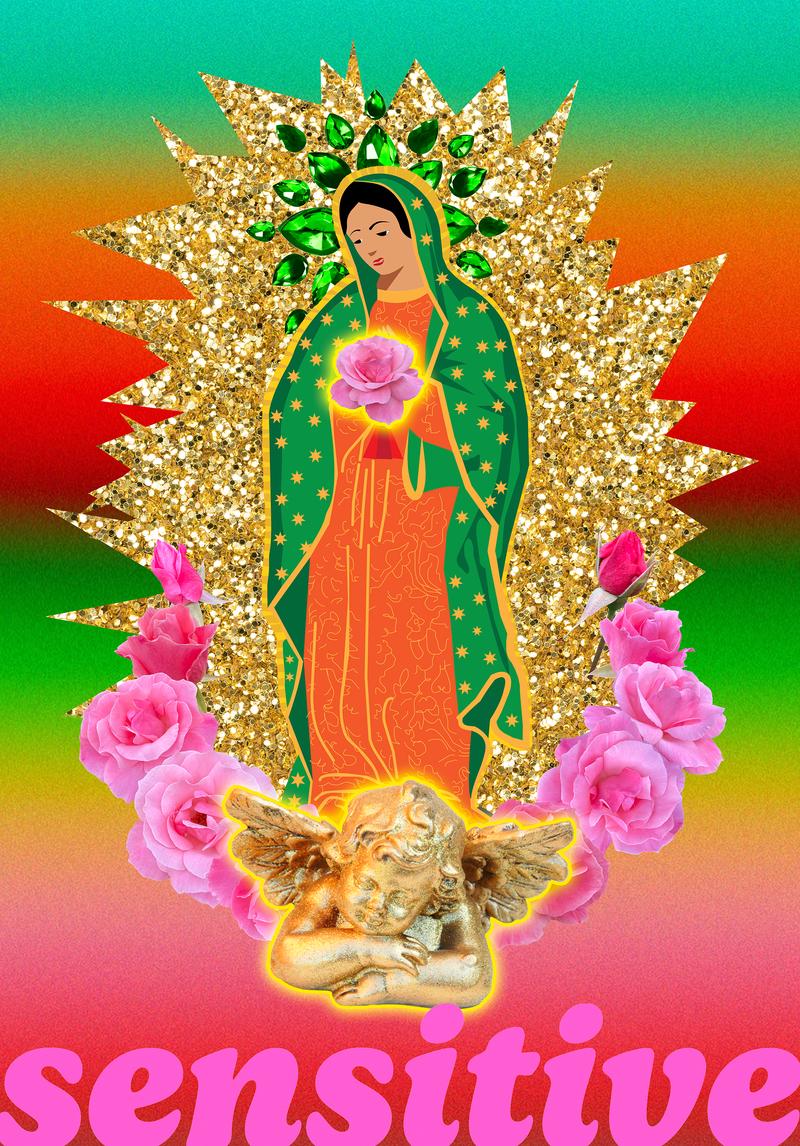
Butterflies&Goo
As children, we learn that caterpillars become butterflies through a transformative process known as metamorphosis. When it’s ready, a caterpillar finds a nice little spot to park itself on a twig, where it builds a protective chrysalis around its entire body. Days to weeks later, the chrysalis breaks open, and a fully-formed butterfly emerges. But only relatively recently did scientists discover what happens in-between. As a child, I believed that – over time – the caterpillar would sprout the legs, wings, antennae, and other morphological structures we observe in fully-formed butterflies. Many people thought this. But that’s not what happens at all. Before a caterpillar becomes a butterfly, its body releases enzymes into the enclosed chrysalis, which effectively digests (i.e. disintegrates) itself until the insect becomes an unrecognizable glob of goo – something slimy and gross that resembles neither a caterpillar nor a butterfly. And yet somehow, as the process continues, the molecules that make up this goo figure out how to reassemble themselves in an entirely new, incredibly beautiful way. A butterfly forms, like a phoenix rising from the ashes. It seems magical, but it’s simply part of their programming. And the most wonderful thing – I believe – is that we are like this, too.
Just like caterpillars, I believe that children possess an innate wisdom about who they are and what they can become. And with the right nutrients, environment, and support, a beautiful future can be made possible. But unfortunately, for so many of us – especially for those of us who are queer, disabled, neurodivergent, nonwhite, or from any other marginalized community – we don’t always get that support. We’re taught to suppress and
fight that inner wisdom and our understanding of our own wholeness by a society that continually, violently chooses to do the same.
Growing up, I always felt different. And others’ reactions to my tiny bursts of authentic self-expression confirmed this for me, over and over and over again. I would ask questions for clarification, when I really wanted to understand something; I would share unique takes on things, perspectives others hadn’t considered; I would wear something that felt affirming of my identity; I would come at a problem or challenge from a very different direction. And the world told me “no,” over and over. “It doesn’t work that way. Why are you making things more complicated than they need to be? Why are you asking so many questions when everyone else seems satisfied?”
So, as I got older, I learned to bypass my own internal compass. Clearly, my needs were wrong. Clearly, I didn’t know what was best for me. (/s) So I looked everywhere but inwards for validation and acceptance. Instead of trusting my own instincts, I spent an incredible amount of energy observing and analyzing everyone else. I absorbed everything everyone around me was doing – what other kids talked about, what they wore, what made them laugh, what movies they watched on weekends, what their parents put in their lunchboxes. And I tried my best to be like them. There was safety in “sameness.”
Masking became an armor for me. Every morning, from grade school through college, I put on my armor before leaving the house – carefully, intentionally, and painstakingly. I straightened my long wavy hair to look “less Mexican.” I learned to
22
camouflage my quirks – to hide any part of me that stood out “too much” in my wealthy white conservative neighborhood.
I fell in love with fashion the moment I was able to dress myself. To this day, one of my favorite activities is playing dress-up. Bright colors, soft fabrics, and beautiful shapes provide such satisfying sensory stimulation. Growing up with undiagnosed ADHD (a developmental disability) and Generalized Anxiety Disorder (a chronic mental illness) meant I was constantly trying to keep up with those around me, without the proper support. I often found it difficult to express myself with words. Even when I knew what I wanted to say, social anxiety got in the way. Fashion became a tool I relied on to communicate with the world it was a language I became proficient in very early on.
I grew up with specific options for how and who to be. How and whom to love. Which careers were “worthy” of my intelligence and economic class. Boxes offered to me by distracted adults. By celebrity role models, by friends’ parents, and by the opposite sex.
I learned it was my job to satisfy men. To make men comfortable, to make them look good – but never overshadow or outshine them. It was my job to keep others’ fragile egos intact (only it really wasn’t, but how was I supposed to know?). I learned to be pretty, but silent. To be accommodating. To manage others’ emotions especially men’s.
I thought I needed to land the most lucrative job to be a valuable human. I thought I needed to be popular. I needed to be not only accepted, but praised by those around me, as a means of determining my
own worth. But that just led me to stifle my individuality. My personhood. I watered myself down to meet others’ expectations of who I was and who I could be. I let others determine who I was allowed to be.
And for those of us who are lucky – I do feel I am lucky – maybe the goo is a necessary, unavoidable, uncomfortable stage, if we are to continue transforming into who we’ve really always been. The goo is part of the transformation. For me, everything had to fall apart, in such a catastrophic way that I became so unrecognizable to myself, that I would eventually be forced to stop, take inventory of all of my pieces, and start rebuilding my life anew.
I like the idea that I’ve been incubating, germinating, thinking, considering, making connections, identifying patterns, and integrating all of that learning into developing a better understanding of myself and how I might safely and authentically live in this world.
Out of necessity and curiosity, and with guidance from queer neurodivergent friends, I began to venture down many rabbit holes. I devoured everything I could learn about abuse, autism, and compulsive heterosexuality. Piece by piece, I interrogated everything I thought I knew about myself and the world around me. I began deprogramming the “good girl” mentality, and no longer placing others’ opinions about my life above my own.
23
“IntheworldthroughwhichI travel,Iamendlesslycreating myself.”–FrantzFanon
In many ways, I feel I have come full circle by meeting and embracing my childhood self again – who I was before all of this conditioning and societal pressure crusted over me like a cocoon.
Most importantly, I believe, I made the decision to simply begin this process of evolution. To me, this resurrection wasn’t about re-emerging as someone new, all at once, with all of my trauma healed and my future life figured out. I now understand that the process of metamorphosis isn’t about a sudden, fantastical transformation. It’s an entire lengthy process of unbecoming, of sitting in all of that goo, and then making the decision to trust my innate programming, as uncomfortable as that may feel, over and over again. Lasting transformation, in this way, is necessarily slow and deliberate.
It requires questioning everything: tearing down our internal systems and constructs, breaking our lives into a million little pieces, and then creatively, fearfully, forcefully, and optimistically piecing things back together in a way that is more in line with our inner selves and what we want to see in the world. We simply must begin. Again and again, as needed. And if we’re lucky enough to have the resources and support, and we choose to put in the work, we can build a better life for ourselves each time. And if we’re loud about it, I believe –I hope – we can build a better world for others, too.
In a similar vein, I believe the purpose of a studio is to serve a safe, nourishing home for those who wish to continue evolving and improving their lives and the world around them.
Through Futurekind Studio, I’m building a creative home for myself. But hoping to build a creative home for others as well. Art heals. Community heals. Design has the power to shape people’s lives, for better or worse. I’m happiest when I’m in my studio. Unstructured creative time. Or when I’m talking with others – ideating about what could be.
Even decorating the studio has become a process about taking ownership over and responsibility for loving and cherishing my own special interests, while building potential for others to come in and do the same.
FindingMyWings(Again)
Queer fashion is healing. For me, over the past year, fashion has played an incredibly significant role in my “becoming,” and at the same time, I often feel that I have spent much of this time revisiting who I was and what I loved to wear as a child.
Growing up in Austin, and away from my Mexican relatives, I tended to identify more with my white, “gringa” family and heritage. But interestingly enough, the times I spent immersed in Mexican culture were always more salient, more memorable. Only now, as I’ve begun to explore myself, my tastes, and my passions, have I come to understand how very deeply Mexican I am. As uncomfortable as it is to say, I always thought of my caucasian-American heritage as “boring,” and my Mexican heritage as exciting: warm, welcoming, vividly colorful, and something that set me apart from my peers. Different in a good way. Something I was proud of, even as a child. I saw this part of my history as a sign of strength and perseverance against all odds. From this
24
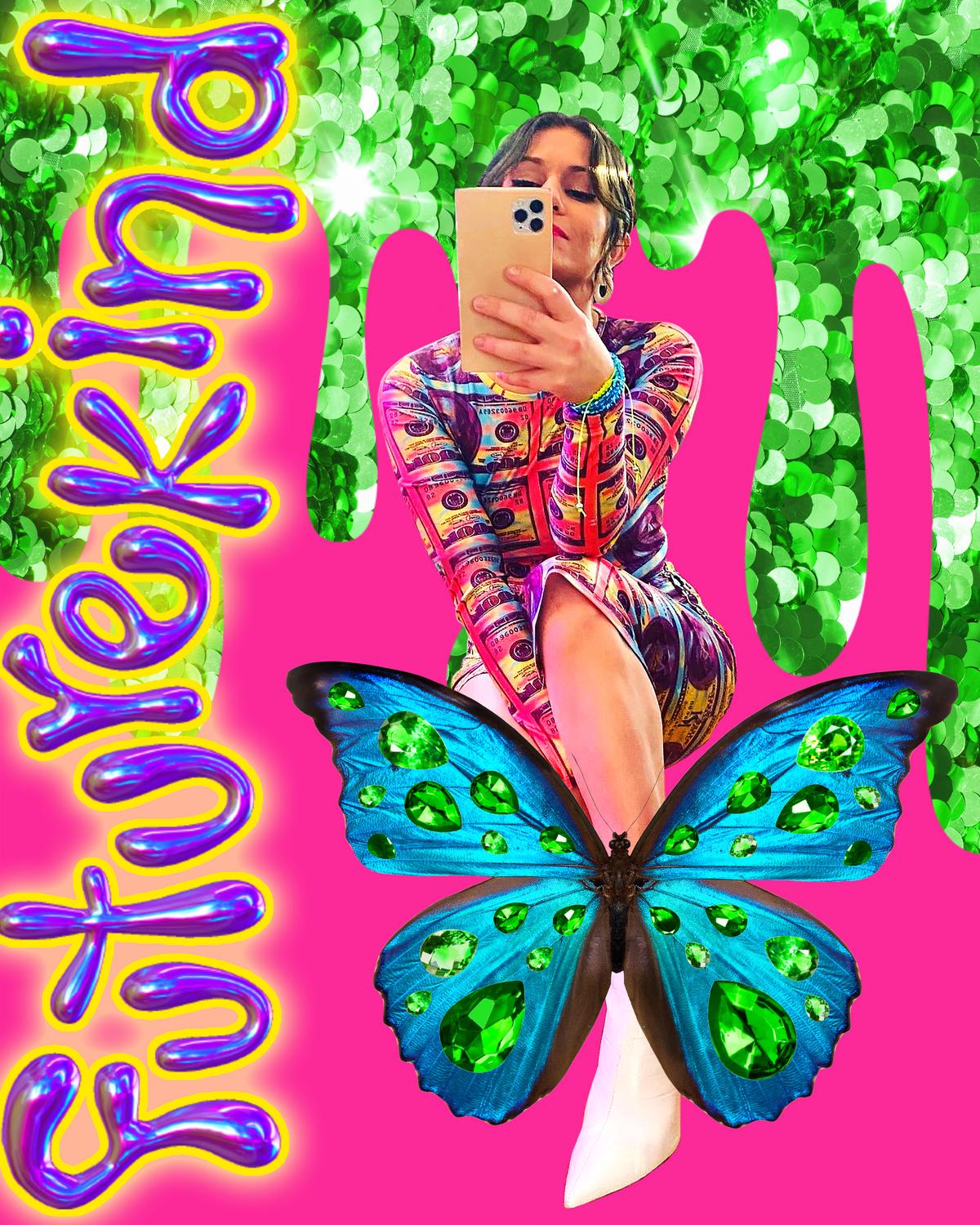
side of my family, I witnessed a shared emphasis on the experience and exploration of being alive: feeling, loving, cooking, eating, dancing, joking, kissing, singing, painting, creating.
In recent years, I had forgotten these things were a part of me. I deprived myself of all these things perhaps as a form of selfpunishment, for failing to meet the norms and expectations of the very non-Mexican community I lived in for most of my life. I had learned in so many ways, and from so many outside sources, that the meaning, purpose, and value of my life was my ability to achieve and produce. Not to feel, enjoy, love, or create.
I have such fond memories of visiting my Abuelita where she lived near the border. My siblings and I would stay with her, usually for a week at a time, during summer break. We’d cross the border to Matamoros, Mexico and spend hours with her at the small tuxedo and formal wear shop that she owned and ran. She was a skilled seamstress, and as I got older, I learned she was a talented artist as well. I believe I have her to thank for these wonderful gifts that I seem to have inherited. And the more I remember my visits to Mexico, and my time spent in her shop, the more I recognize how much of her life and culture I absorbed.
Now, as I am rediscovering my taste for vibrant, warm, saturated colors – compared to the cool blacks and grays and neutrals I wore for much of college – I am realizing how fondly I remember those times spent in the streets and markets of Matamoros, just wandering around as child and taking everything in: excited by the bright colors of traditional Mexican art and the textures and craftsmanship of the woven textiles that were everywhere. And I have certainly noticed, over the past year or so, how
wonderful, and light, and optimistic, and free I feel when I’m wrapped in clothing that gives me that same sense of comfort and awe and excitement that I felt as a child exploring the street markets of Mexico.
I think I understood very early on how color, shape, and design can change the way we interact with the world. When used thoughtfully, it can excite and inspire us –and now is such a ripe moment for using this to our advantage. Fashion, I believe, is an incredibly effective medium for changing cultural attitudes and encouraging social and political change.
Through Abilitee and Futurekind Studio, I want to help make the disability revolution irresistible: to make it visible, powerful, effective, authentic, relatable to use fashion to push for change. If I can help someone understand the importance of having clothing that fits different bodies and different modes of self-expression, then maybe that opens up the conversation to start thinking more comprehensively about disability inclusion and accessibility in other areas. I want to be part of a future where fashion is used to encourage and promote inclusivity, rather than exclusivity, as most of the industry does now. To me, such a future sounds much more interesting, challenging, and rich, with so much more room for all kinds of people to exist freely and joyfully and colorfully. I think it’s time for us to evolve. Will you join me in making the decision to begin? Not just now, but over, and over, and over again? ■
26
Iwanttobepartofafuture wherefashionisusedto encourageandpromote inclusivity,ratherthan exclusivity,asmostofthe industrydoesnow.
fat+furious
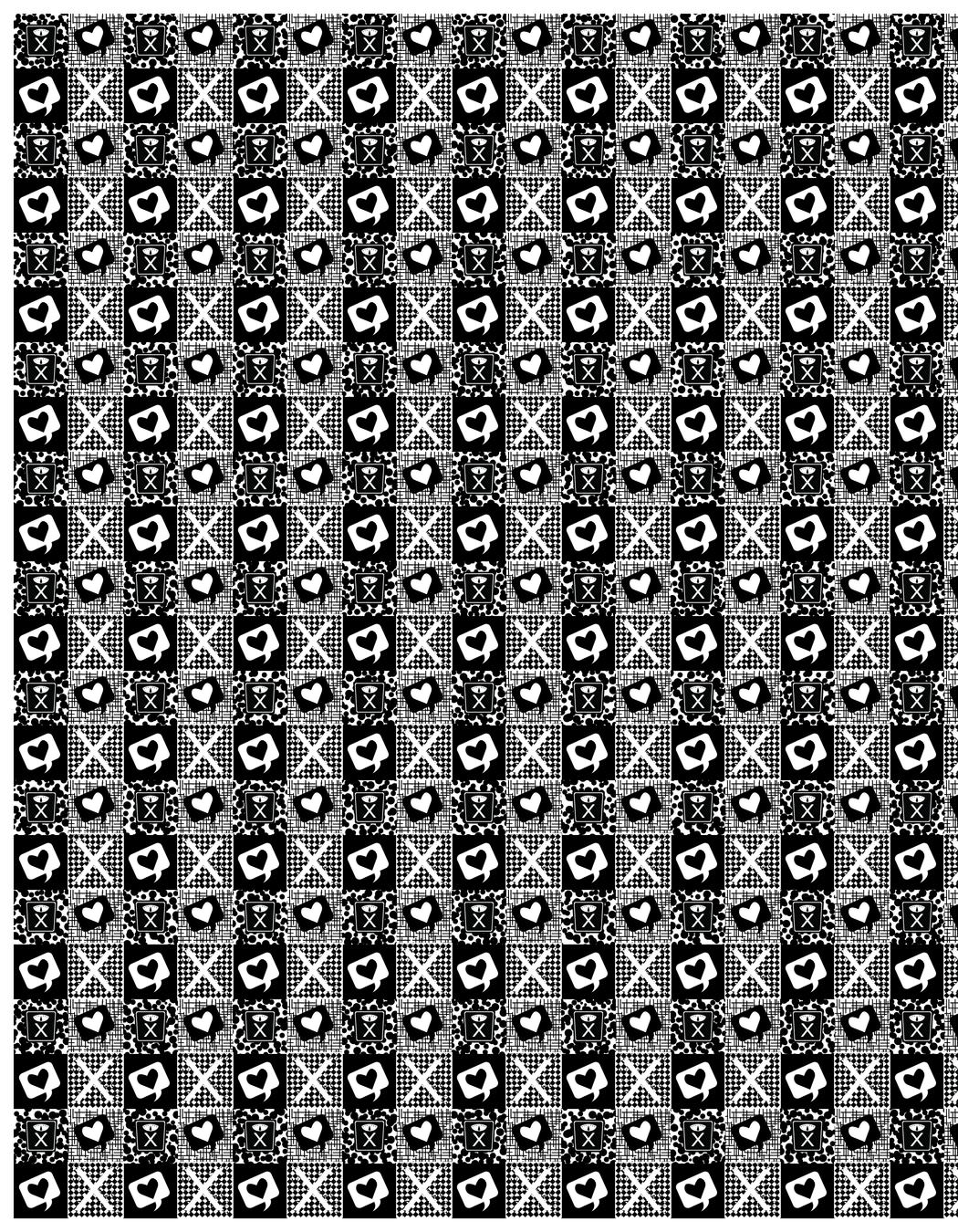
Three binders, two white and one hot pink. One is too small to even fit both tits. One day I decided that if someone takes issue with my chest, that’s sort of their problem. I bind on my own terms, which is to say, I’m not binding in triple digit Texas weather. I wear my REAL MEN HAVE TITS shirt with orgullo, and a little bit of fear.
Button ups! Every dyke needs them, yes? A blue and white striped one from the Old Navy outlet whose buttons don’t accommodate the existence of chests. A green and pink floral one from a random store in the same outlet whose buttons don’t accommodate the existence of chests. A navy blue one from Target two days before the funeral whose buttons don’t accommodate the existence of chests. A gray Star Wars one from the Plato’s Closet in Lubbock whose buttons don’t accommodate the existence of chests.
Too many Modern Baseball hoodies to count. Every era from Sports to Holy Ghost. Every color from green to gray to black. Procured from concerts before the band’s indefinite hiatus, and from Depop after it. The ultimate Dysphoria Hoodies for any closeted tboy 14 to 24.
28
crowdedcloset:crawlingtowards selflove sghuerta
Various artists’ merch. Specifically a white Kid Cudi t-shirt featuring an illustration of the artist wearing a wedding dress, smoking a joint, and flipping off the viewer. Before I met most of my chosen familia, I was hanging around a couple who were incredibly cis and incredibly prone to racial microaggressions. Neither of them responded to my excited texts about my favorite rapper wearing a dress on national television. !!! It was a huge deal for me to see an emo Mexican American man rocking a floral dress while singing and humming along to “Sad People.” Maybe I too can be sad and Mexican American and true to myself and masculine and wear floral things all at the same time. (I’d prefer to avoid national television though how could I stay authentic with so much outside input?) I wear the t-shirt when I need some of Cudi’s confidence.
Crop tops. I used to love wearing them to combat the summer heat when I was a teenage girl and sort of underweight. Now that I’m at my healthiest and heaviest, I only wear them at home or with chosen familia. Just because I love myself doesn’t mean the whole world will. I will wear one to the outdoor coffeeshop date anyways, though.
The mustard cardigan my father bought to match mine when I was in middle school. I wore mine for years over band tees and hand-me-downs and polo shirts to teach in until the armpits were a permanent overripe banana shade and the buttons no longer closed over my growing body. His fits me so snug now. I didn’t know he still had his until I was able to look through his clothes, two years after he left this world. We look so much alike now.
29
theglowup
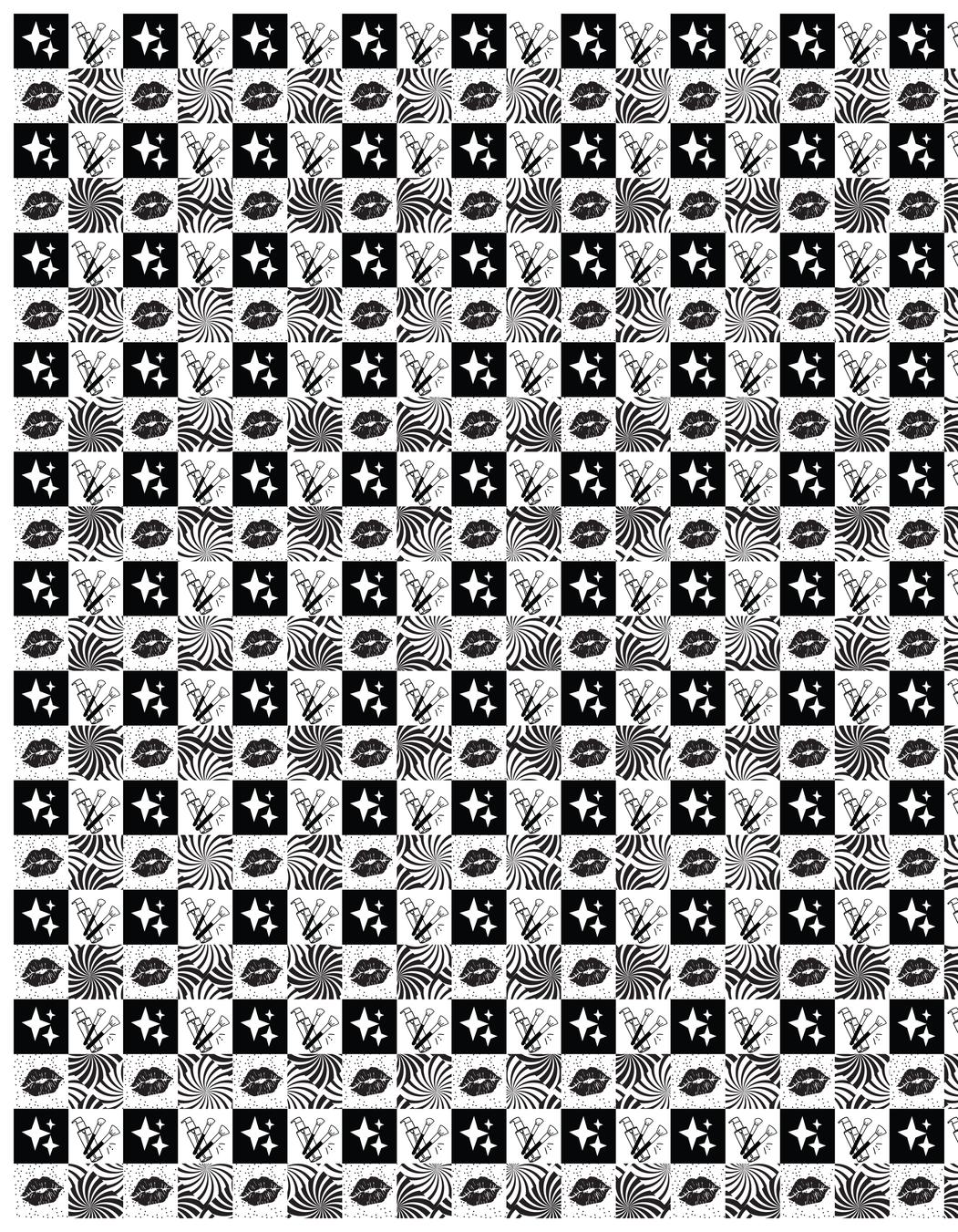
MANI-CUREforthenewlyassembled thankstovoguevoid alisonlubar
Secure an appropriate polish.* Lacquer, slick, still liquid. It will dry shiny. Do not drink. It does not taste like it looks. If your vision is monochromatic, any shade will do. Let the algorithm pick for you. Prepare the area. Refer to your assembly manual for compatible materials. Paint the tips of your appendages pink. Abalone, Bahama Sands, Cotton Candy, Skin InsideOut.
If you have one between your legs, make it blue. Cerulean, Chemtrail, Hyacinth, Robin’s Egg.
Choose any color for your tongue. Jazzberry, Ochre, Rust, Fire Engine. Wait for it to dry.
Speed up the process by heat or UV. Do not lick.**
Show it off!
Bedeck yourself with something to match. Or go naked. You have never eaten an apple to know any shame.
Let’s go, girls!***
*Not of a national origin. Not Polish. Also, “polish” is a misnomer. Do not take sandpaper to your tender metal. Buff with lambswool last. Each end is scorpion-sharp, or blunted and comforting like the end of a vintage Phillips-head. A cross to hex or bless. Anyone with nipples. Or not.
**Unless your tongue is made of light.
***As in Shania Twain. Not as in your accessories. Not as in anything physical. As in, even you have this sentience. Even if it’s binary or mere modem blips. Even the fragile carbonbased beings who will blink out even before they’ve chipped a nail. You’re alive enough to know for yourself.
1. a. b. 2. 3. a. b. 4. a. b. 5. a. b.
31
ashishkumarsingh
nailpolish
Desire was quieten by the unwanted shame and the nail polish I bought stayed for another week beneath the school books. The woman selling them looked at me as if I hadn’t asked for a product but stood soliciting sex like young girls on Red Road do. When she asked for what, I lied and said, it’s my sister’s birthday. Though I would have liked to try all the shades to see which suits my fingers the most, like my mother does each brushstroke carefully measured, I did not. In the end, I went for the red that shined with star glitters. My sister, if she were to see it, would’ve called it gaudy, red being the color that screams desperation. When walking all the way home, the bottle felt cold against the palm in the pocket of my trousers and guilt hot like the barrel of a gun pressed against the lungs. Weeks passed and it remained hidden like a stolen property until yesterday when I skipped school, settled in a corner of a park so far away it took almost an hour to get there. Tell me, what is the most daring thing a boy of 14 can do if not this stealing a moment to try to be someone else. I opened the bottle and the smell of my mother getting ready tingled my nose, her one hand extended towards me as I held a different bottle of the same colour, ready to show her the artist in me while the other near her maroon lips, blowing them to dry. I laid down, my ten digits spread on the green grass like ten red ladybirds, my face getting kissed in blotches by the afternoon sun. When getting late, I hurried, left myself asleep on the ground and like an exile finally returned home.
32
carapleym
thewayyoushouldalwayshave lovedyourself
The sharp edged feathers and cutting liner kills me.
It’s ferocity more than beauty but that’s what makes it stunning, in the truest sense of the word. It took my breath away.
I remember the first drag performance where I ended up doing improv on stage and it was so fucking freeing but I looked down at myself sadly with my twee day dresses and faded hair, what the fuck was I doing there amongst all that glamour and intoxicating glitter? The air was thick with it, embedding in my lungs like wings waiting to take flight.
It was another three years before I caught on fire, saw my skin as a canvas not for another but for a new identity. Every damn day if I wanted to.
I remember the first day I tried to leave the house with overdrawn lips and a shimmering cleavage, it’s ridiculous but I felt ashamed and small, I wasn’t big enough to pull this off. How could I dare to be loud with a voice so quiet from my trauma choked tongue? Then I watched her. Iconic, bold, unfiltered. How to be unafraid of the weight of her earrings?
Little did I know how a leaden choker could unlock my soul. How I could pour out a relentless kind of love with hair so perfectly wild, how could anyone deny her?
The first time I looked in the mirror and saw hope, it was cloaked in vicious black and harsh metallic, gothic and frantic and fucking beautiful.
I stole the ashes from my own urn and tossed them across my body, a reminder to create art from your very bones, sow your heartstrings into tapestries that play across your skin, tight and longing, the way you should have always loved yourself.
33
Content Warning: Includes mentions of suicide and gun violence
You bewitch me Theresa/Gia
That afternoon when my brother – cousin and I found red trails reconstructing – the last few moments in the kitchen – but that was not – where she shot herself in the bathroom – next to your makeup
Our love was unknown
I was a child And there was all too much abuse around us
Her powers limited but – extravagant – her tools eyelash curlers – a mirrored walk-in closet – replete with sequined gowns – Her firm knowledge of party drugs and 80's daytime television – a gunshot on Dynasty
old young Decadent! female male Who gives a shit!
She rode style for life – There was Studio 54 – beautiful but gay – a tongue – forefinger – up his ass – He’s yours! Try leather thongs – poppers – blue feather boas – pink plastic phalluses
Clip Vidal Sassoon hair advertisements – Wear v-shaped magenta dresses teased hair – rhinestones – below your breasts – a compass rose – in black and white shimmer – and red lips always red lips
on the path of interpreting post-traumatic stress disorder
34
myaunttheresa/mygiacarangi [killedherself–shevisitedthree timesaftershedied]
aubrythrelkeld
She needed blood – not suntan oil – mineral water – not predator prints just in time – for Falling – ill – It’s like it never happened – shooting – snorting up fucking your way to the top –She was on the cover of Vogue – once upon a time maybe a week – two she’ll get better – she won’t pass like this –not like this – alright – fine – She had Cosmo on the floor
After she passed she visited my bedroom three times and said everything must pass She was okay The hole in her head dark with oxidation a Kaposi’s sarcoma
35
themane attraction
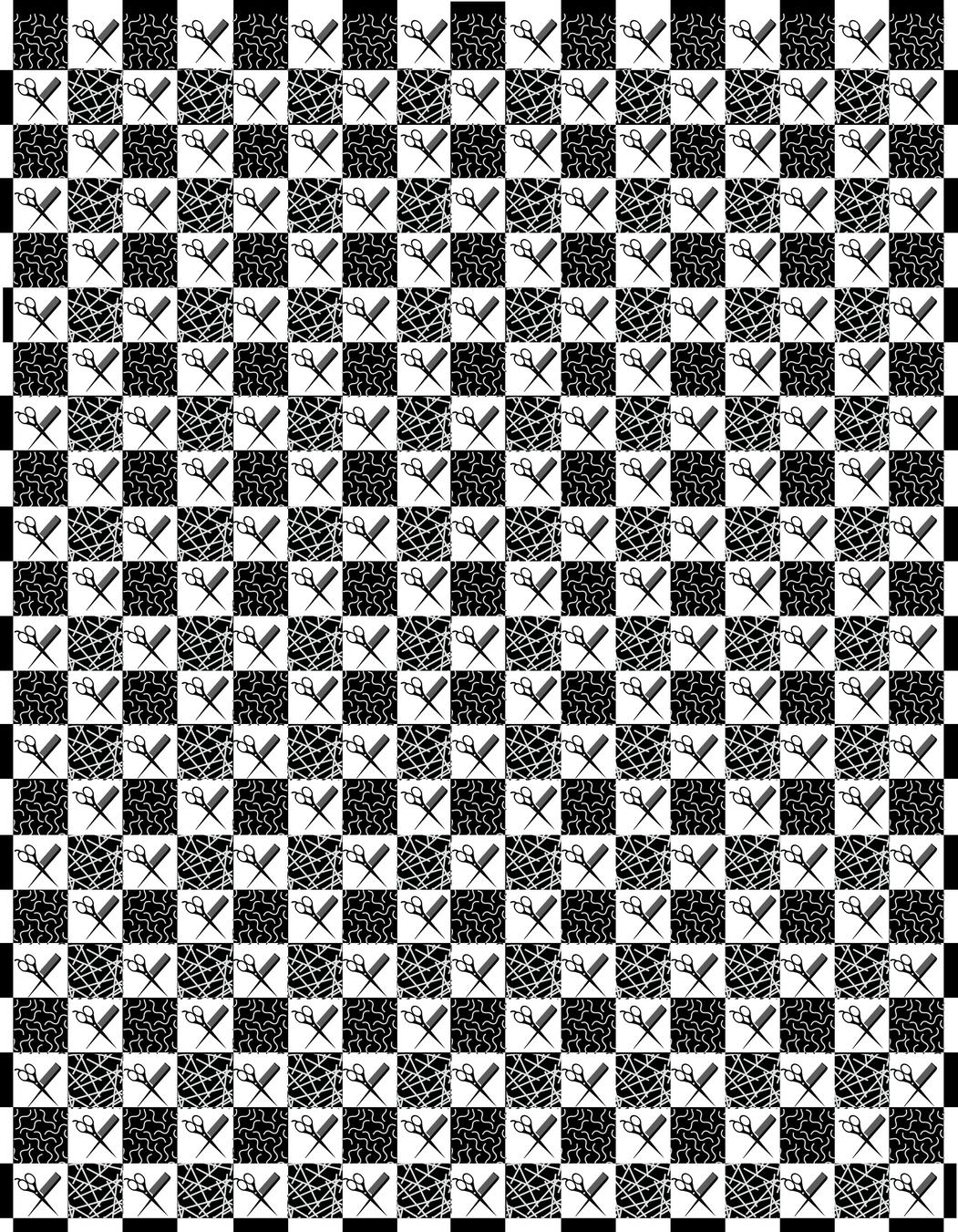
reachoutandbrushfaith erikfuhrer
While shopping with my friend in a Glaswegian Salvation Army on a crisp late Spring day in 2009, I found a cute pink low-cut V-neck tunic stashed away in the electronics section of the store. The tunic reminded me of Link from The Legend of Zelda. Link was one of my og hotties and fashion faves. He knew how to walk through hearts so that the love soaked him in. And he thwapped his hair long around his shoulders. He knew the power of gold.
“You have the same fashion sense as a teenage girl,” my friend laughed when she saw me holding it against my body. I hated the shame that statements like this made me feel but a giddiness still galloped beneath Epona riding through the fire untouched while Link wore a sexy tunic unscathed, long hair flailing, unsinged. “Do you think it will fit?” I asked, too worried to bother the cashier to try it on after my friend’s reaction. She nodded, “yeah, if you want to look like a teenage girl, then sure.”
Teenage girl is a look I denied myself during my own teens. Afraid people would call me gay as I ached for bodies that looked like my own while wishing my own looked otherwise. Ultimately, it came down to hair. A lot of my life I wished I was a woman so I could float a fountain of Auburn locks down my back without having to explain them. They’d just be “normal.” Girls would braid each other’s hair in high school and I’d sit and sigh, wishing I could twirl my finger around my locks and join.
Whenever I tried to grow my hair out in high school it was viewed as “redneck.” I'd have to live in that problematic shell because living in the pearl of beauty felt too dangerous. Embarrassingly, I leaned into the “redneck” narrative and performatively eyed pick-up trucks while taking driver’s ed. I hated that I was reinforcing and propagating a stereotype but it felt safer than admitting that what I really wanted was a purple Volkswagen Cabriolet convertible so my hair could blow in the wind while I blasted Elton John on the radio.
37
I tried growing my hair long multiple times in high school. Eventually, I ended up in the chair. You don't have to be a man, I wish I could tell myself. Each fallen lock felt like dropped blood.
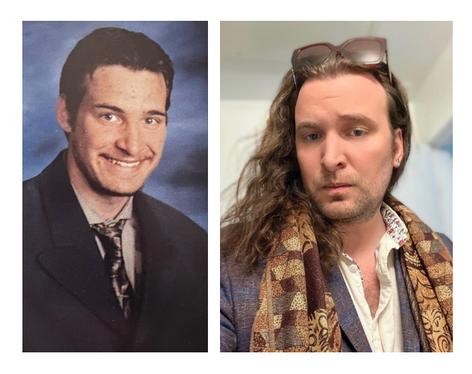
“It will grow back,” I’d be told. Sure, but who am I until then? “Does one day you will get to heaven” make waiting any easier for those who want to taste God? So was the Goddess within myself caught in the throat of limbo every shearing day.
Long hair didn't feel related to a gender, it felt like a resurrection. And now that it swings at my back, I am phoenixed into a new aura that spiders its light beyond a checkbox on an airwhite page, the sketch of me Pixared into a rainbow too bright to swallow.
“Long hair, like Samson!” I’d hear. That was one of the only approvals for my desire
That I'd grow into a brawny Biblical stud. But I didn't want to pull any pillars down. I wanted to soften. To ripen. And I also
wanted a beard. But only when it felt pretty. All the most beautiful fruits have some fuzz. Toss a Kiwi my way.
Listen, I’d whisper to myself, if I had another chance at my life. You can be beautiful in your own body and wear a tunic like Link. And wear a white dress like Buffy. Your body only has to ever look like your body. Whatever that looks like. Whatever that will look like. You are the most beautiful thing I have ever seen.
Let your hair down. Let it weep around you. If you drown the water will run from you and unfill your lungs. Like it did from Buffy. Like it has done many times from you when you thought you weren't going to survive.
Listen, I’d kiwi softly through my lips, these twenty years later, you are still here and your hair is long and you wear pink eyeshadow to parties and you carry your inhaler in a beautiful leather handbag.
38
Yourbodyonlyhastoever looklikeyourbody. Whateverthatlookslike. Whateverthatwilllooklike. Youarethemostbeautiful thingIhaveeverseen.
Listen, at your twenty year high school reunion you will scarf tie your way through the room and everyone will look. And this time you'll glitter out loud. Like a vampire in Twilight.
Only, my twenty year reunion is next month, and I’m not going because I know that I’d spark that room into a flame it couldn’t extinguish. Because I am now all the light that I was once eclipsed from. ***
I bought the pink tunic and wore it on a walk to my friend's house one early evening that summer. I pulled a light gray cardigan on top, despite the fact that Europe was going through a heat wave at the time. As I walked down busy Byres Road in Glasgow, I felt as if everyone was staring at me in disapproval of my shirt. Some people admittedly probably did, like my friend, hate my outfit, but my reaction obviously said a lot more about how self conscious I was in my own body than about what anyone was thinking about my outfit. I ended up buttoning up my cardigan, choosing sweat over shame.
I gave the shirt another attempt on my plane ride back to New York that September. It had been almost 9 months since I had cut my hair, and my curls and waves had started to drop closer to my shoulders than they ever had before. Even though the air conditioning on planes is always way too cold, I wore the tunic without any covering. I was Link in the tundras. I was closer to a version of myself that sparkled.
My grandmother hugged me tight at Newark Airport. Directly afterward, she frowned and said something to my mother in Swedish. My grandmother liked my hair short. “Handsome,” she’d say. I’d wince. She hated my longer hair. She tugged at it and frowned, “ you are so handsome honey, why do you make yourself look so stupid?” She was nothing if not blunt. Then she pulled at the string of my tunic and asked me whose shirt it was. “Mine,” I replied. She waved her hand in the air in disdain, “oh come on now, honey, it’s a girl’s shirt. Take it off.”
My grandmother in many ways was my real mother. My biological mother was too busy kicking me through metaphorical windows. The kicking was often not a metaphor. Only the windows. Except those I tried to escape through when she’d barricade the house from within. My mother is the reason I spent these past 3 years exercorcising onto the page trauma that could only be translated, let alone uttered, through the distance afforded by paratext and the safety of metaphor.
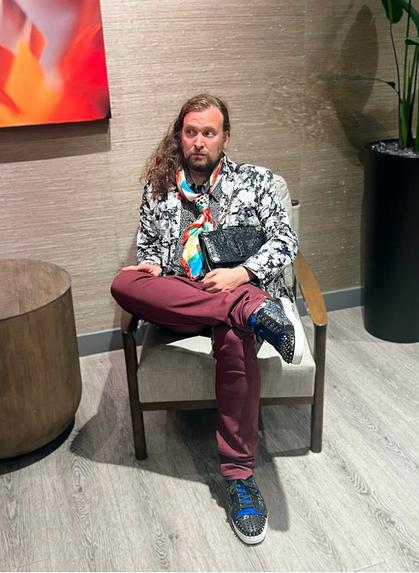
39
Now that my grandmother has passed, I realize that although my mother was often the one who pushed me, my grandmother was the one who kept placing me back by that goddamned window. I spent a typically violent couple of months living with my mother when I returned to New York complete with tantrums and attacks and the normal Fuhrer family fare. During that time, the tunic mysteriously disappeared from my closet. “I don’t know what shirt you are talking about,” my mom swore.
A year before my grandmother died, I started more openly identifying as nonbinary and wearing jewelry. I went to visit my family in New York that Christmas, 2019, for the last time, and my mother reluctantly gave me some of my grandmother’s costume jewelry, insisting I should be a “pretty man” rather than an “it or them or whatever.” At least she used the word pretty. I had to hold onto any positive moment or word with her. The jewelry did indeed make me feel pretty. A queen.
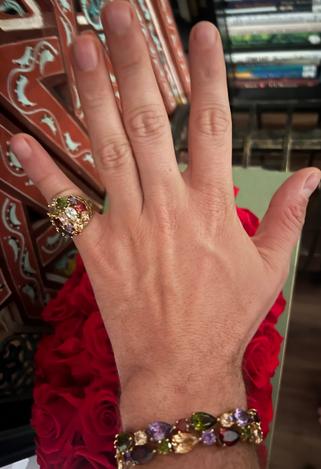
When I wear Mormor’s jewelry, I resurrect who I wished she was. I resurrect myself.
I have so many things to resurrect from.
I watch Michelle Pfeiffer fall out the window and get bitten by cats.
Selena, claw my face. The milk of me pours. How long until I feral my way out of this life and into the one that’s always been waiting for me?
God is there so much I am hoping she will block for me.
How many cat bites does it take to get into heaven?
Reach out and brush faith. ***
I moved to South Bend in May 2015 to attend a PhD program at The University of Notre Dame. During the interview process a few months earlier, my body positivity was high. I wore my hair in a top ponytail. It was very 80s/90s jazzercise video. Unfortunately, Notre Dame would rob me of this euphoria and I’m still rebuilding it. I did not feel comfortable wearing anything close to my pink tunic there. Within the first few days living in Indiana, I had lowered my ponytail and registered myself back into a “male” note. My long hair stayed and was actually praised but for different reasons that I desired.
“He is returning, praise God,” the clerk behind the counter at the Post Office exclaimed, her hand high in the air. Oh God, does this woman actually think I’m Jesus?
40
People had told me I looked like the iconic mass card and film versions of our apparent lord and savior before but this hysteria was a first. “Hi, I’d like to mail this to New York,” I told her. She processed the package, all while continuing to exclaim, “praise be to the lord his son has risen.”
Then, right before I left, “did anyone ever tell you you look just like Jesus? He’s coming back, you know.” I smiled, relieved that I wasn't in some nightmare version of “Revelations” and replied, “thanks, have a good day.”
I hate the Jesus reference. And most similar others I received. The first time someone said I looked like Jason Momoa, I was flattered. Now, it has also gotten old. It feels like both comments attach themselves to manliness. Perhaps that’s me adhering to a binary. Perhaps that’s me being unfair.
But I wish for once someone would say Sarah Michelle Gellar or Diane Keaton instead, or a “Girl, your hair is on point!”
Tori Amos sings, “We both know it was a girl, born in Bethlehem.” Perhaps it is her who I look like. And perhaps I just want someone to say to me, “You look like beautiful hair. You look like phoenix. You look as if Rapunzel would have tumbled down you.”
Is it a surprise that my favorite Addams family character is Cousin It? It must be soft in your world, cousin. A sauna. Total eclipse of the hair.
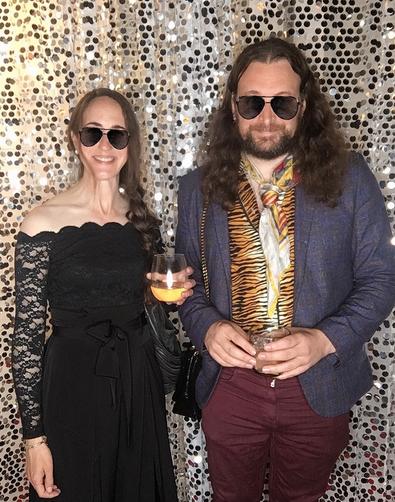
41
afrodisiac

Even as the sun beats down on me relentlessly, I refuse to give into the heat and enter one of the many identical barber shops I keep walking past. They all look the same. Thin, slightly faded wallpaper, one huge mirror covering half a wall (this would be impressive if they weren’t all so small), two leather chairs and calendars graced by various black celebrities spotting different haircuts. All I needed was two seconds to dismiss every barber shop I’ve refused to set foot in. I don’t want the cleanest shop, or the prettiest wallpaper. I don’t care if it’s Jamie Foxx, Obama or Will Smith on the calendars. What I need is really simple. I’m about to give up when I finally see it. The perfect barber shop for me. Empty, save for the barber and his tools of trade. I have no idea how I will react to seeing my hair fall to the floor for the first time and if for some reason my tears betray me, I’d rather the audience be limited.
The barber points to a black leather chair with tiny wheels facing a mirror. As I sit I allow myself one final glance at my hair. He wraps a clean white towel around my shoulders and asks me what I want. If I wasn’t pre-mourning my hair I’d giggle a little or at least blow air through my nose. What I want is to magically go back in time and stop myself from putting relaxer in my hair. I can’t be angry with the kinyozi for his phrasing. He couldn’t possibly have known that relaxing my hair for boarding school wouldn’t have made it any easier to take care of. What I’m here for, what I have been instructed to do, is trim my hair down to almost nothing. As I tell him, “trim it and leave only a little bit,” I can't help but notice the familiar sting of sadness starting to tap at my throat. The moment the words leave my lips I bite the flesh inside my cheeks and study my hands in my lap like my life depends on it. There are only so many knuckles and scars to look at but I’m determined to not raise my eyes until I have to.
43
davinmakokha
cottonballsforthelonelyfloor
I expected the razor to sound more awful. As my hair falls to the floor I try to imagine the Kinyozi’s face. Scrunched up in concentration or at ease performing the task mindlessly due to years of performing similar motions? The hair on the floor for now feels like a stranger’s. Too smooth, too straight, too silky. The only thing that looks familiar is the colour. So dark it puts the night and coal to shame. It’s a point of pride at this point. I hear the tinges of jealousy mixed in with admiration every time someone says, “Your hair is so black!” I have something desirable. People can look at me and find something attractive about me. “Is that short enough?” the barber pulls me back to reality. I am scared a boy will be staring back at me when I glance in the mirror. Afraid that without my hair as a shield, a distraction, my ugliness will finally be brought to everyone’s attention. But the barber doesn’t know all that and that somehow makes looking in the mirror easier. He stopped at the growth so there’s a mini afro left. My features are more prominent in a way that makes me want to curse whoever invented mirrors. I hope they are in the hotter tiers of hell. The mini afro still won’t do. “Shave off a bit more.” This time I watch. I want to say goodbye. This is hair I recognise. It's mine. I have watched hair dressers bite their lip before they even touch it and felt them warm up to it. It falls like tiny black cotton balls and I have to go back to biting the insides of my cheeks before I request to have them bagged so I can take them home. I hate my face, I hate my head, I hate how powerless I feel and I despise the entire world. When the barber is done cleaning up my head I press his money into his hand, thank him because it’s not really his fault I have turned into this ugly creature and practically flee his shop.
Logically, I know nobody cares about anyone in the streets. Unfortunately for me, however, my skin cannot stop tingling. I feel exposed and even though I am trying to convince myself otherwise, I cannot shake the feeling that everyone is staring and whispering around me. I feel that way for months. At school with other students, in church, at the market… Every time I have to go back to the barber I mourn. I grieve the loss of my beauty. My heart suffers over the thought that other girls do not consider me one of their own anymore. I torture myself over the loss of my shield. There is nothing to frame my face with. My veil is gone, leaving me feeling vulnerable and exposed. Until now my identity has been tied with my hair. Having hair made me feel like I had a right to claim femininity. I may not have been good at taking care of it but at least having it made me less awkward among girls. Without it I have very few things left to grasp at my femininity. I dwarf nearly every girl my age and my face is too sour. In the future it will be just hair but for now I grieve until I am empty.
By the time I can grow my hair again I have given up on being seen as feminine. Other than the fact that it takes too much to feel woman enough, I have forced myself to look at my face in the mirror so much I have decided it’s enough that I am just me for now and each day after. My hair’s blackness is at the bottom of my priorities as I experiment with different colours. At first, I was scared of losing my hair again but I figured then I could grow it back. Now that I have the choice I feel I could cut it without having to fight down tears. I like my bushy decent-sized afro but I have become a person who can live without it, thanks to the many times I allowed myself to grieve. Whatever version of my mane I have to live with, I am ready.■
44
noscrubs
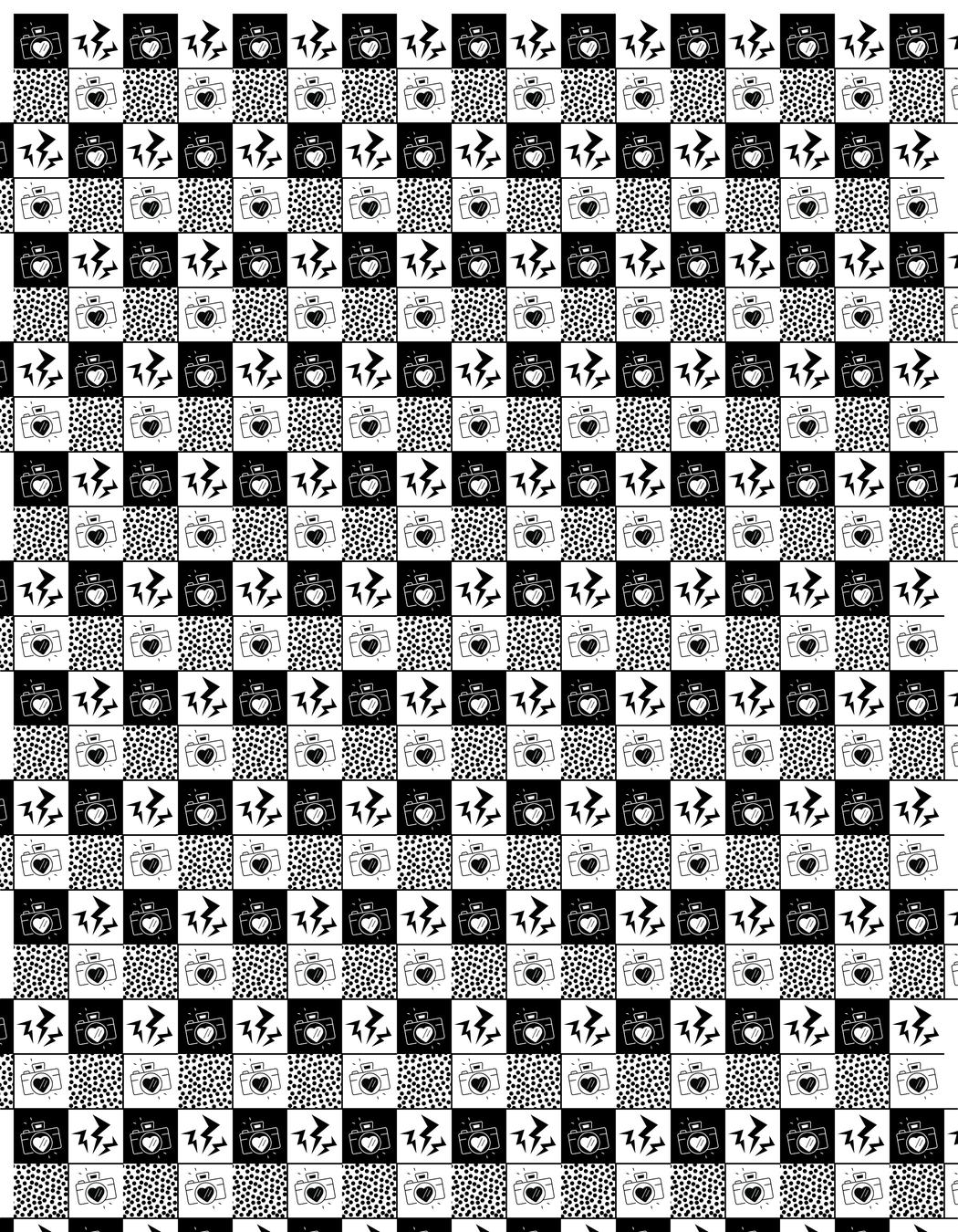
themaskasfashionaccessory dandy-liacco
In Metro Manila, masks are no longer required in most contexts. However, as Lolita, Ouji, and Aristocrat fashion enthusiast, I still like to incorporate masks into my outfits.
Lolita is a street fashion developed in Japan, which takes inspiration from Victorian and Rococo fashion, and utilizes plenty of accessories to create detailed, coordinated looks known as “coords.”
Ouji (also known as boystyle) is the masculine counterpart to Lolita. With shorts or pants rather than the bell-shaped or A-line skirts of Lolita, Oujis dress to evoke the look of a young prince. A more mature masculine look (such as the one in black photographed above) would fall under the Aristocrat J-fashion style.
One of the most important principles in this family of styles is coordination. The colors and motifs in a coord should play well with and complement each other, such that each individual element in an outfit looks like it belongs to the greater whole.
Through this approach, the mask is another instrument I can write a part for in the symphony of my outfit. So rather than interrupting the flow of the music, the mask harmonizes with the rest of the ensemble.
46
One of the things I enjoy about Lolita and related styles is how I can build my wardrobe over time, reusing clothes and accessories in new ensembles. As I add pieces to my collection, I can return to concepts and themes from coords that I enjoyed and tackle them again with more experience and skill. When it comes to accessories in Lolita, more is more. Going “ over the top,” or OTT with accessories is a valid way to wear Lolita.
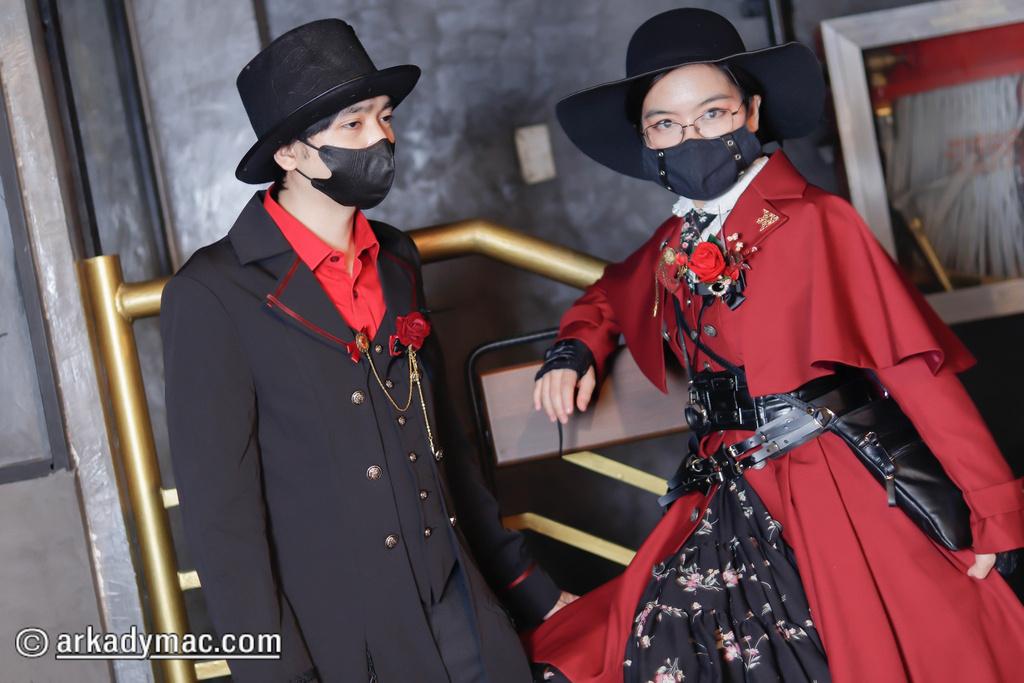
It’s also acceptable to find uses for accessories outside of their intended purpose. This mold-breaking use of accessories is such a staple in the community that designers in this space build versatility into their pieces.
For example, the rose corsage made by Filipino designer Fancy Moi has both a hair clip and a safety pin on the back. This allows me to wear it in my hair, pinned to my lapel or hat, or numerous other creative ways I may yet discover.
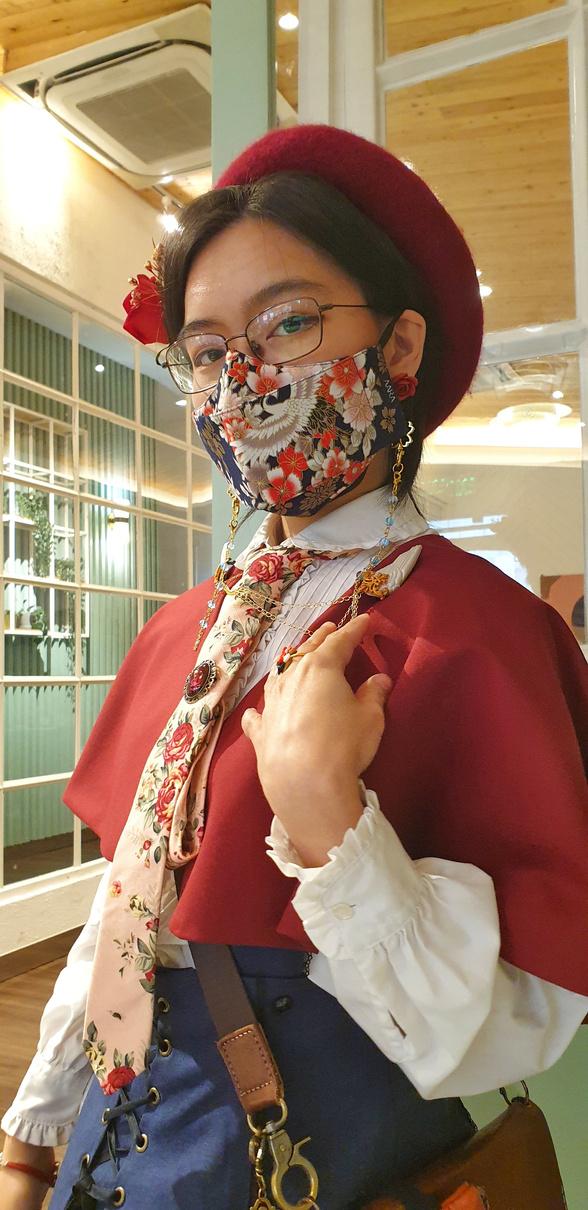
47
On the Metro Manila transit system, where masks are required, mask chains and mask cords are a common sight. They allow one to take off their mask without needing to stow it away.
I wanted to try incorporating mask chains into my coords. However, I couldn’t find ones that suited my aesthetic. So I decided to design my own.
I first started designing and selling jewelry back in 2015. I named my shop GleamTrove, in theme with the fantasyinspired designs of the shop’s offerings. I primarily sold my jewelry at pop-up events in Metro Manila, such as conventions and bazaars.
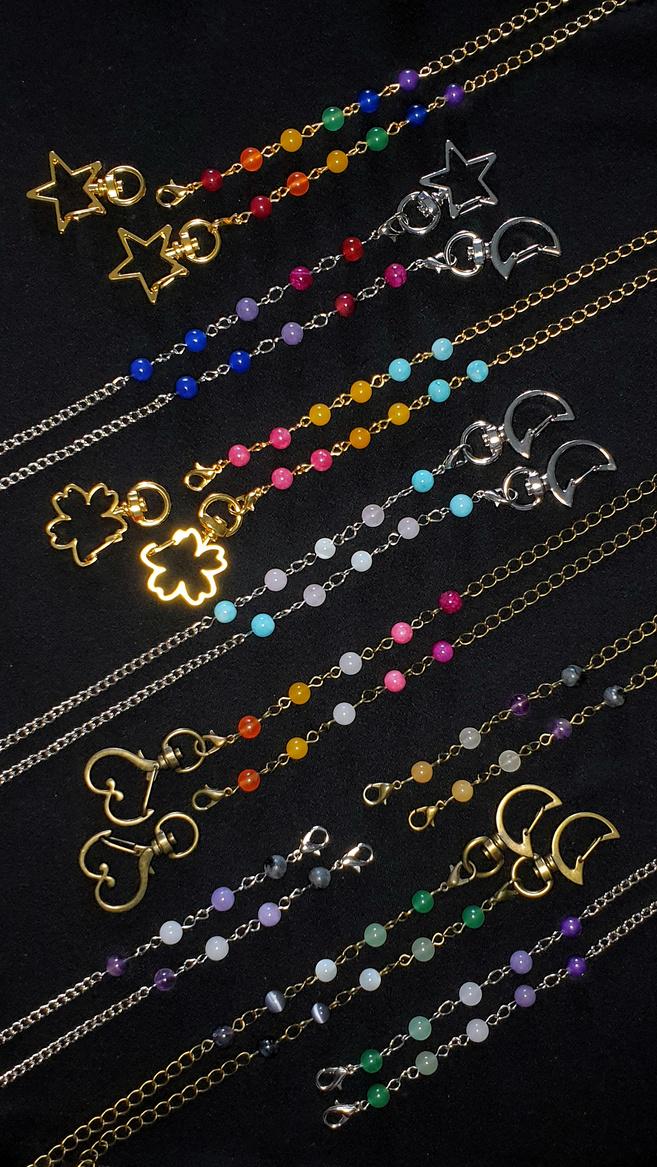
Since what inspired my personal fashion also inspired GleamTrove’s designs, I also found customers among my friends in the Philippine Gothic and Lolita community.
In 2020, when the pandemic began, GleamTrove went dormant. It wasn’t until conventions started happening again in 2022 that I began to revive my brand.
48
Themaskisanother instrumentIcanwritea partforinthesymphony ofmyoutfit.
These large clasps are detachable they connect to the mask chain at the smaller lobster claw clasps, and the mask chains can be used with just these smaller clasps. I also made designs in pride flag colors. As a nonbinary person myself, a mask chain in my pride flag’s colors was one of my first prototypes.
I’m hopeful about finding customers for my mask chains at the local Lolita fashion convention, Lace Up, and at Metro Manila Pride. I’m also making my mask chains available online, through GleamTrove’s Instagram (@gleamtrove).
Like a thoughtfully-chosen mask, a mask chain can add color and interest to an outfit. It can tie disparate elements together, or carry a motif. These accessories can be more than just practical necessities they can be objects of beauty, and avenues of creativity and self-expression.
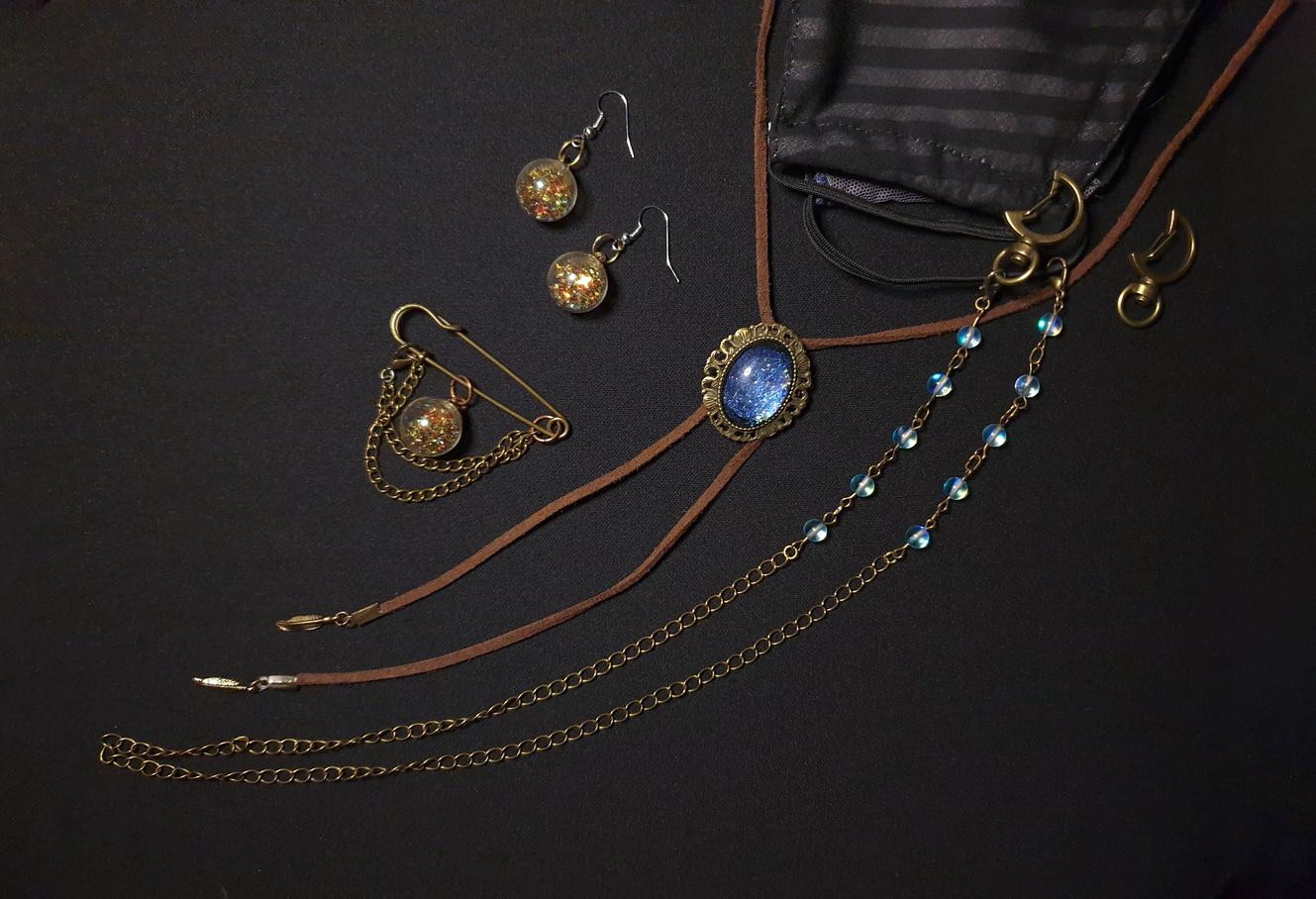
49
illustrationsbyjodavis-mcelligatt
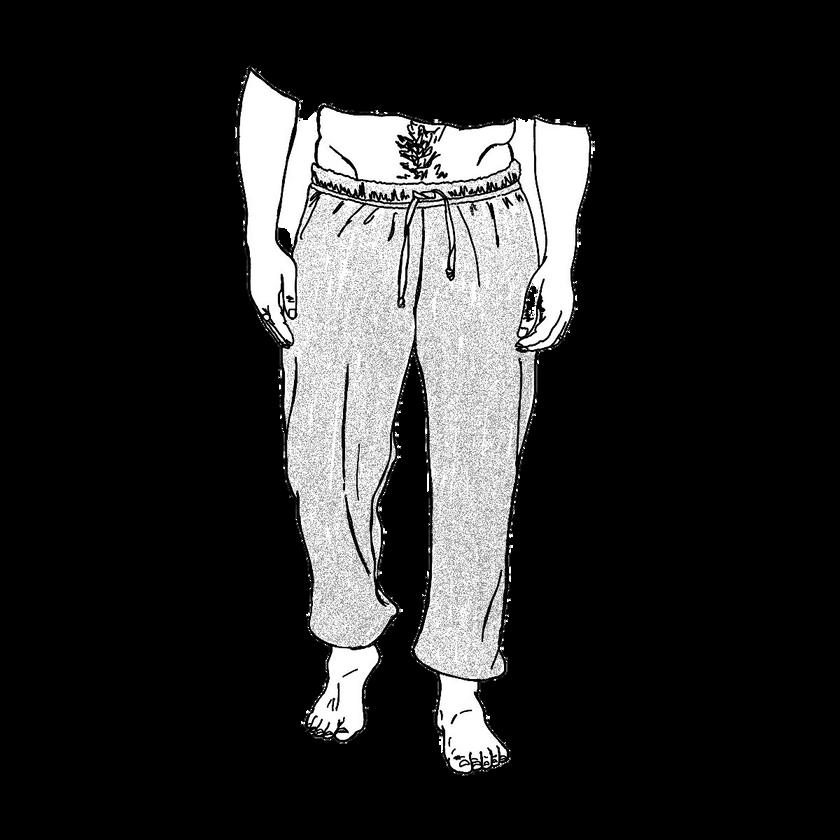
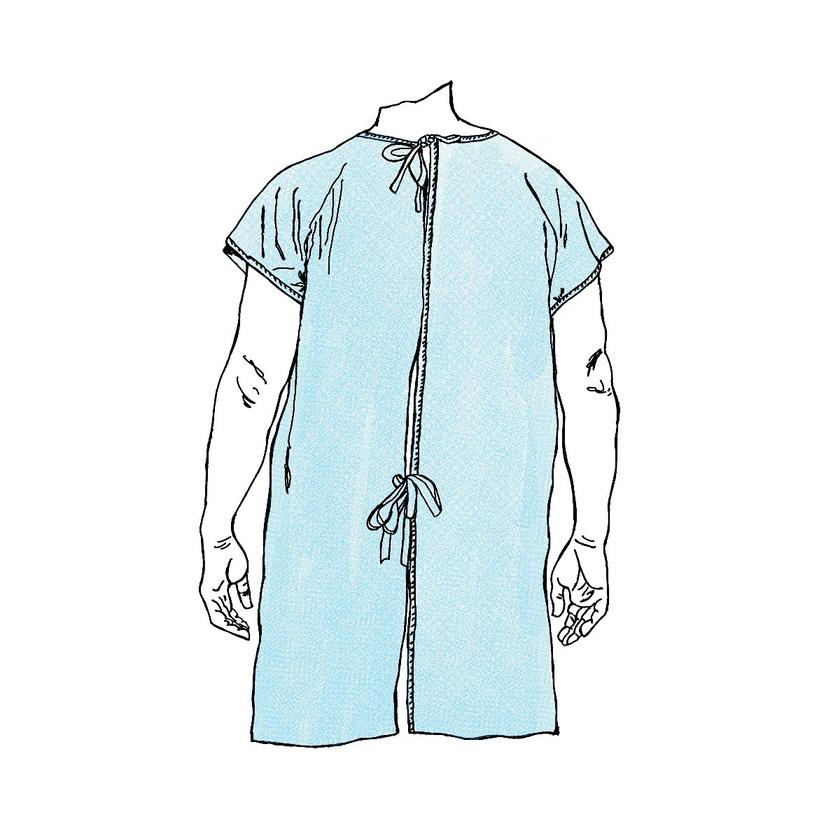
room448B ethanwood
Trigger Warning: This piece makes reference to suicide and suicidality.
For a brief, final moment, my sleeping body’s only companion is the dim, orange light filtering in through the tinted wall-length window from the parking lot four floors below. It faintly illuminates the pale blue walls: the one to my right fitted with a mounted TV a black window to nowhere, and the wall in front of me, with two separate shelf-like protrusions, one of which holds the sparse amounts of zipper-less, string-less clothing I was allowed and a paperback copy of Calypso by David Sedaris. On the tile floor beside my bed, Conversations with Friends by Sally Rooney rests—the cover curves slightly upward. From my peaceful corner on the left side of the room, I wasn’t able to see the large, wooden door, how it sits slightly ajar, or how it opens as three bodies enter one of them you.
Your entrance is loud enough this environment still new enough to wake me despite the 25mg of trazodone I’d been given earlier that night in a tiny, white paper cup. Two orderlies escort you in along with a rolling blood pressure monitor. My brain barely registers your stray “Don’t wanna wake him,” before one of the orderlies gently touches my shoulder, says, “We’re just bringing in your roommate. Try to go back to sleep.” They sit you on the bed, or rather, the big, blue brick bolted to the floor fitted with a thin white mattress, thin white sheets, and not-the-worst white pillows.
Framed by the fluorescent lighting forcing itself through the doorway, yet shadowed by the orderlies, your blood pressure is taken, the cuff loudly inflating, crinkling as it tightens around your arm. After a full day here, I’ve become familiar with the sound. It’s part of my new routine.
Through slit eyes, I can tell by your dark silhouette that you’re a grown-ass man. Not ideal. As the orderlies tend to you, I roll over onto my stomach, putting pressure on the shallow cuts on my left hip. They don’t sting as much as they did yesterday.
51
Thanks to the trazodone, it doesn’t take long for me to fall back to sleep. Thanks to whatever pain it is you’re feeling, it doesn’t take long for you to wake me up again when the scrubs come back in to give you some Tylenol. I fall into some semblance of slumber, but a part of me wakes every time you stir on the other side of the room. You’re a stranger in this space that was solely mine for almost 24 hours. But it’s not just your anonymity, your involuntary intrusion, that’s keeping me alert. It’s your masculinity.
When Chance, the super tall orderly with glasses, wakes me up, the sun is brightly shining through the window-wall. I look across the room to where you’re lying. Only a tuft of dark hair is visible, peeking out of the lump of white sheets. Chance crouches down and hands me two paper cups one pills, one water—as he tells me your name and asks me to notify anyone if I’m ever uncomfortable so they can make other arrangements. I nod, smile. Then he hands me a pen and paper and has me circle, between two options, what I want for breakfast, lunch, and dinner today.
After enjoying a splendid breakfast consisting of a soggy pancake, and an orange and apple juice that comes in what is essentially a pudding cup, I get my blood pressure taken and attend the first group therapy session of the day. Later, when I return to our room, hoping you’re still asleep. I push open the wooden door and step as silently as my grippy-socked feet can. I set a green folder containing papers full of exercises (identifying feelings, grounding, etc.) from group sessions on the floor beside my bed. I start to reach for the Rooney paperback but stop when I realize I need to pee. My only option is the toilet in
our poor excuse for a bathroom only a cheap, blue curtain separates it from the rest of the closet-sized space. This wouldn’t be a huge deal if it weren’t for the toilet’s ridiculously high-powered flush and the fact that I need you to stay asleep so I don’t have to interact with you. And yet: pee I must. I slip past the curtain lamenting the lack of one for the shower and piss as silently as I can, avoiding the water and hitting only the side of the bowl. Staring at the toilet, I debate whether to flush it, but instead do the next best thing and push the toilet’s handle down as slowly as I can, hoping against hope to reduce the sound. My ears are still met with a sonic expulsion of water. I hope to God you’re still unconscious.
I slip past the curtain again, and elect not to wash my hands because I’m not about to take another chance. The Rooney with its yellow cover lays on the white sheets. I’m about to grab it when you stir behind me, and the sound of your voice hits the base of my skull.
“Hey, sorry if I woke you up last night.”
My blood freezes. Not only do I now have to talk to you, I have to do so with the knowledge that you know I didn’t wash my hands after using the toilet. I grab the book and turn to see your face clearly for the first time. Your dark stubble has started to gray at your chin. You’re clutching the sheets around yourself, laying on your side, hands tucked under your chin, almost childlike. My hands thumb the pages of my book back and forth, back and forth. In the single second I look at you, I take note of your brown eyes, thick brows, and tan skin.
“Oh, don’t worry about it,” I say, eyes shifty, unable to maintain contact even in regular conversation with people I know.
52
***
You rub your face, and it’s then I see the gauze wrapped around your wrist. I avert my eyes and step to walk away, but you roll onto your back and ask, “What time is it?”
I’d check my phone and tell you exactly, but it’s sitting somewhere else in a manila envelope, along with my wallet probably in a drawer in some closet, filled with other peoples’ phones and wallets. That is, if they even had them when they came in.
“Uh, I think it’s close to like 10:30 or something.”
Thankfully at that precise moment, Chance comes in. So far, he’s one of my favorite scrubs. He’s kind and super-fucking-tall, not that that has any bearing on anything other than the shrunken feeling I get whenever he stands near me. It helps that I don’t find him particularly good-looking I surely wouldn’t feel as comfortable around him as I do if I did. He looks over at me and says, “Mind if you give us a second? Gotta go over some stuff with . ” I’m glad for the excuse to extricate myself from the situation. I say, “No problem,” and leave to find a place in the noisy common area where I can sit and read. Though I don’t want to be in the same room with a man I don’t know, I do quickly miss the haven of my our room. For the one day spent alone in that room, I felt safety comfort in the solitude of being new, a stranger, in this isolated world. I’d sat in our bright room almost all day yesterday where the sounds of the other people didn’t bother me. I could just sit, surrounded by the comforting light and white walls and just be. It was both a subtle and stark contrast from the bedroom I’d confined myself to before my admittance here. There was no roommate in the before-room. No blood pressure monitors. There were many
shelves of books to choose from, not just two. But even with headphones there was an endless drone in the before-room. The constant noise of Fox News but also of history and discomfort of forcibly being back in a house I’d left for the safety of college. Funny how an invisible thing can send someone back to the start can send the world into a panic. The before-room had green walls and one window, blinds and curtains always closed. It, too, had voices but those weren’t strange to me. They were engrained in my mind in the walls. Any effort to finish a semester of college in the before-room was always going to be a losing battle. But, for now, there’s no college, there’s no drone, there’s no noise, and there’s no before. There’s just now, and that now has been invaded by a unknown entity, expelling both the solitude and me out of our room. And right now, instead of our room, I see the purplish-red mess of hair that I know belongs to Oz, as he sits at one of the tables, drawing with the washable, nontoxic markers the staff keeps stocked for us.
At the moment, it seems like half of the little more than a dozen of us patients have chosen to stay in our rooms and watch TV, asking for help when the channel needed to be changed. The other half are either stationed at various tables or in one-onone sessions with therapists or psychiatrists. Oz and I are the only teenagers out of everyone. I’m 19, and he’s not far behind. As far as I can tell, the majority of the other patients are nice, some even welcoming. There’s even a kind of camaraderie between some of the patients. In the common area, we patients have three scintillating options for how to spend our free time: play cards, color, sit.
53
I plop myself down at the same table as Oz and we exchange heys. He keeps drawing, and I try my best to dive back into Rooney’s words. It’s not very long before you sit next to me in one of the huge, blue, too-heavyto-pick-up-but-easy-to-slide chairs. You’re still in a hospital gown, which piques my interest as to what exactly you were wearing when you were admitted … if anything.
“So, how long have you been here?,” you ask me, hands clutched in front of you on the table. I hesitantly look up from the pages of my book, which was already difficult to focus on given the nearconstant beeps and boops, nurses running back and forth, and TVs from other patients’ rooms. I notice Oz bring his arms closer to his body and dipping his head closer to the paper he’s coloring.
“Um, I got here early yesterday morning. Self-admitted.”
“Gotcha, gotcha.” You’re clearly still groggy. It’s now that I notice you chewing gum, even though I haven’t seen a hint of gum’s existence here. “Man, I was out of my head last night. I don’t really know what happened. I didn’t have any clothes on when they found me.”
“Oh … damn,” I say, because what the hell else was I going to say? Oz’s eyes go a little wider. His eyebrows arch. You don’t notice.
“Yeah. I need to call my brother. See if him and his husband can bring me some clothes.”
Oh … damn. Surprise registers on my face. “Mm yeah. Parents aren’t the biggest fans of having two gay sons, but they’re cooler about it now than they were. "
What an interesting development. In my 19 years of life, I’d never met an openly gay person who was significantly older than me, and I’d never been comfortable around anyone who was openly gay because I couldn’t, or wouldn’t, let myself follow suit.
“What about you? Are you ?” You’re cut off by the announcement of snack time, and I’ve never been happier to eat a bag of baked low-fat potato chips. But I’m still on guard now and, at the same time, I want to tell you everything. Maybe you can tell. I’m sure you can tell. It doesn’t help that in the light of the common room I can see your face better, with its defined jawline covered in that stubble my eyes keep coming back to. Even with the hospital gown, I realize a very unfortunate truth: You’re kinda hot. ***
By the afternoon of the next day, the unthinkable happens: I let myself sit in bed and read after our group session with you in the room. Yesterday, after getting some food and, more importantly coffee, in your system, your personality started to show. You weren’t skittish at all around the other patients, nor they around you because of your charming pseudo-retired surfer dude vibe. By proxy, I let myself be a bit more talkative, too, especially with Oz, whose guard slowly let down but not all the way. This morning, you even made a few of the orderlies chuckle by hustling other patients, myself included, for their coffee and sugar packets. At every group meeting and meal since your arrival, you, Oz, and I have sat together. My desire for solitude has been discharged, and I allow myself to feel contentment with companionship.
54
My ears perk up as the steady slapping of water against the bathroom tile stops, replaced by barely audible drips. I try to force my mind into the narrative on the pages before me, but my brain keeps pivoting to the notion of there being a naked man in close proximity to me. Earlier today your brother dropped off clothes for you, and I do my best to keep my eyes glued to my book as you pad over to the cubby where the paper bag sits. I notice the towel wrapped round your waist as you pick out your outfit. I’m doing my best to pretend you’re not there when you say, “Hey, Ethan.”
My eyes are still glued to the book when you say, “How does this look?” It’s not the clothes you’re asking me about. When I look up, my eyes land directly on your exposed dick. “Well, what do you think?” The thin white towel is on the floor in a semi-circle.
What I think is this is the first time I’ve seen a dick that wasn’t encased in my phone screen. This one is being presented squarely, directly to me, for my eyes only. So, what else could I say? “It’s okay.”
Your jaw drops and you laugh, incredulous. “Just okay? Damn, Ethan, you really know how to humble a guy.”
I feel my face turn redder than it surely already was. “Well, I mean. It’s not bad.” And it wasn’t. Not in the slightest. But how am I supposed to tell that to the middleaged man in the psych ward who just flashed me and sussed out the fact that I was also pretty acutely gay?
You stand in front of the mirror and say, “I think it’s pretty nice.” And I agree. I agree
because a man just showed an interest in me, the kind of interest I’ve been craving for years. You say it’s my turn. My blood boils underneath my skin. It ripples through my body and begs for air. For release. I hate my body and yet I expose it to you. Just because you’re gay and you said so. But maybe that’s not the whole truth. Desire contains multitudes after all.
“Not bad,” you say and start to put your clothes on. “I knew you were gay.” It’s my turn to scoff, to act like I don’t hate the fact that I must’ve been so obviously queer to you. But I think I hate that your clothes are back on even more. ***
A couple nights later, after you’ve shown your dick to me multiple times and told me about each time you jerked off in the shower or on the toilet, after you’ve told me about your life, the years you spent in California and how much you love David Sedaris, we lay there in silence a moment. It’s been at least 20 minutes since I was given my nightly meds. We are separate entities, mirroring each other in our beds. The door is all the way open, the fluorescent lights an invasive presence. After another infinite moment you get up, dressed in the gray sweats and white tee your brother and his husband brought you and gently push the door, almost close it. Now only a small sliver of those fluorescents seep in, wishing they were embodied so they could push back against the door.
The white tee is the first to come off. You toss it on your bed as you quietly step, step, step closer to my side of the room, my heartbeat quickening with each bare footfall. You’re right next to me. Your face is inches, centimeters away from mine. The mattress depresses underneath your right
55
palm as you plant it beside my head. Then your lips are on mine, your tongue slips in between, carrying the minty, chemical taste of your ever-present nicotine gum. You put the rest of your weight on top of me. We’re pressed against each other. The only layers between our skin are my clothes, the thin white sheet, and those gray sweats. They don’t stay between us a second longer. The anxiety of being discovered fuels the urgency. In seconds the sweats are around your ankles, your lips are on my neck and your okay dick is grinding repeatedly against my pelvis. It’s the best thing I’ve ever felt. Another man’s skin against mine. An intimate contact that’s only been alien, confined to my imagination. A physical desire that’s never been reciprocated, let alone attempted let alone discussed.
It’s the most terrifying thing I’ve ever felt. Between each thrust against my hip my mind is taken to that sliver of fluorescent light, waiting for it to expand, for some shadow to push that wooden door open and put an end to this ecstasy and gratify my fears. But there’s something lurking below the pleasure, below the fear. It’s emotionless. Analytical. It notices how animalistic, primal even, each thrust into my skin is. How each time you whisper oh, baby it’s just part of the routine, a script. My mind records every moment. How your moans intensify. How when you’re about to cum, you announce it and proceed to do so on my torso.
I wonder: what’s going through your head? How does it feel to be humping a closeted nineteen-year-old boy, twenty years younger than you, in the bedroom you share in a psych ward? Are there any emotions there? Guilt? Shame? Lust? Or is my body just another tool, an implement you’re using to get off?
But these are thoughts for another time another me. You immediately rush away and as quietly as you can roll into your bed because some higher power let us hear the footsteps before the beam of light becomes a flood and the shadow I feared materializes. It stands there, takes a few steps in, but never strays from the box of light on the floor. It doesn’t shut the door on its way out.
I can feel my heartbeat in my fingertips, in my toes and, well, something else that’s become increasingly hard to ignore.
You get up and walk to the bathroom, gently pushing the door to not quite shutting it again, as you do. I hear you pee, quickly followed by the super-powered flush, and then a towel is tossed on top of me, so I’m able to wipe you off my chest. I put the towel under my bed, and from your side of the room I hear you ask, “Are you still hard?” The truth is what it is.
“Um, yeah, yep. Definitely still hard.”
“Well … you gonna take care of that, or do you wanna come over here?”
My first thought is to just force myself to let the trazodone do its job and go to sleep. Better than risking getting caught again. Better than adding anything else I might regret later. My second thought: I did not just get dry humped for what was admittedly probably no more than thirty seconds (surprising considering your age) only to lie in bed having been used like a teenager’s sock.
So, I take a few butt-ass naked steps over to your bed and let you cradle me in the nook of your left arm. My boldness doesn’t last. I’m immediately terrified of being discovered. Of the shadow reappearing,
56
silhouetted in piercing, pale light. The longer I take, the more anxious I get. When the climax does finally come, there’s no satisfaction there. No catharsis. No time to lie in this other man’s arms and relish in the ecstasy of skin touching skin. As I get up and retrieve the towel from under my bed, you admonish me for taking so long, only barely joking. I put my clothes back on, and you ask me to give you the towel. I don’t really think to question why before you’ve folded it and stuffed it in your pillowcase. Perhaps there’s someone out there who would find this idea hot. I am not that person. At the moment though, I’m too tired to be grossed out. As soon as my head hits the pillow, I start to feel the trazodone. How it increases the weight of my eyelids ten-fold. How it erases any shame I might feel if I were to stay awake in this dark, dimly orange room, listening to the first man to intimately touch me snore.
A Fleetwood Mac song is playing as the three of us stand in a line against the barred balcony. The sun’s rays are columns on our faces. Other patients are in this cage with us, feeling the sunlight and the wind. The music is coming from the orderly’s phone behind us. We get to do this every other day, come out and request songs to listen to. Today, I managed to convince you to stop watching Atomic Blonde on the TV in our room and join Oz and I. With my fingers tapping the rhythm against the bars, I make a note to myself to write this song down on the sheet of paper I’m compiling a playlist on. So far, I’ve made three while here: one for an orderly, one for another patient who was discharged yesterday, and this one for Oz.
The song ends and, as we’re ushered back into our white-walled enclosure, one of the psychiatrists approaches us, and tells you
it’s time for your meeting. You go with him, while Oz and I find ourselves a table in the common room, specifically the one closest to the markers. Oz doodles what is supposed to be me as an anthropomorphic fox as I scan through the playlist, trying to think if I’ve left out any of my favorite songs.
Sitting there, we talk about school and how Oz wants to go back to college. We talk about our conservative families and how hard it’s going to be to have to be with them again. We talk about Adventure Time and music and everything else there is to chat about with your psych ward friends. I eventually trade my playlist for an intricate coloring sheet of a flower and our conversation lulls.
“Hey … um,” Oz starts. I look over at him. Behind glasses, his eyes are glued to the paper in front of him. He keeps drawing, coloring over the same spot. “Are you okay with ? Like he hasn’t tried to do anything to you, has he?”
In an instant, my body is a mess of nerves. His question shocks me, not only because I’m now terrified everyone here knows about everything you and I have done together here, but also because I’d come to see you, me and Oz as a kind of trio. We always sat together at group sessions and meals, and we’ve been able to laugh together in this place, too. Underneath that scared, defensive feeling is the worry that Oz may have been uncomfortable around you this whole time and I didn’t notice.
“I just. I don’t know,” Oz continues. “Some of the things he says to you just kinda make me uncomfortable, and I just wanted to check with you to make sure you’re okay and that he’s not doing anything that makes you feel uncomfortable.”
57
***
It’s true. Each day you’ve gotten more brazen. The way you look at me. The amount of innuendo you direct to me. The stray times you touch my leg under the table. Everything you do that sends a flutter down my spine is scary but also so wanted. Each time makes me wish I was with you anywhere that would allow me to hang onto you, safely. My response to Oz is almost immediate:
“Oh my gosh, no, no.” I force a laugh. “I know he’s kind of a lot sometimes, but really, he’s harmless.”
Oz looks up from his doodles and into my eyes.
“I really appreciate you checking in with me, though. Seriously.”
His eyes fall. “Yeah, of course.”
The two of us sit there in silence. A few minutes later you sit at the table, and Oz is taken to his therapy session. He goes wordlessly.
“Is Oz okay? She seemed down,” you ask. It makes me happy that you sound like you genuinely care. And yet.
“He,” I say. “And yeah. We were just talking about family stuff.”
After realizing your mistake, you apologize, and ask if I want to watch TV, but I decline. “I think I’m gonna read.” Maybe I shouldn’t want you the way I do. Maybe it’s not you I want at all but the feelings you unlock, those closeted, malnourished, and ultimately neglected feelings. Maybe I should be made uncomfortable by you. I guess, in a way I am. There is discomfort, and it’s fueled by insecurity, by self-hate,
and, of course, by the fact that a psych ward isn’t intended to be a place for two guys to make out. And yet, it’s the only place I’ve ever been able to act on, to validate, that feeling of longing that’s been more-or-less ever-present in my life. So maybe I should take advantage of the opportunity.
It’s my ninth day in this hospital. It’s my last day in this hospital.
It’s your and Oz’s last day, as well.
After our final breakfast together, while we wait for our clothes to come back from the laundry room, I kiss you, hard. This is the last chance I get, so I decide why not get cinematic with it? I lift my leg up to your waist, and you catch on immediately, grabbing it and the other leg as I raise it. Your strong arms hold my thighs as your nicotine-flavored saliva enters my mouth for the last time. I wish I could say this urge I felt to never leave this moment was motivated by anything romantic, pure, or good; that’s just not the case. What locks my lips to yours is desperation. What keeps my arms wrapped around you after you can’t hold my weight anymore is fear. The fear that this decently attractive middleaged man I met in the psych ward will be the only man who will ever desire me. The only man to touch me in the way I’ve always wanted. Worse, the fear that I’ll only ever feel wanted and safe to be such behind closed doors.
I don’t want to want you. I really don’t even want you to want me. I want to be wanted by a man I haven’t met yet, one who doesn’t make me feel used, one who makes me feel safe, one who isn’t two decades older than me. The one I haven’t met yet. And maybe won’t for years to come.
58
***
We hear someone walking in and separate. It’s Chance. He tells me it’s time for my last one-on-one therapy session. He looks at you and says, “Your ride should be here any minute, so make sure you’ve got all your stuff. Someone will come by with discharge paperwork soon.”
“Awesome. Thanks,” you say. That California accent coming through. Chance leaves, and when he’s out the door you wrap me in one last hug. It feels real.
I wish it didn’t.
This is the last moment we share together in Room 448B.
other part the one that prevails just smiles. You’ll never see this book again. At least, not this copy of it. I put the books in the paper bag, and a couple hours later, Chance tells me my parents are here. My heart drops. I check the paper bag once again just to make sure I have everything.
I don’t. In fact, in the bag there’s something that didn’t arrive here with me: a pair of men’s black athletic underwear. Missing: a pair of my own American Eagle underwear.
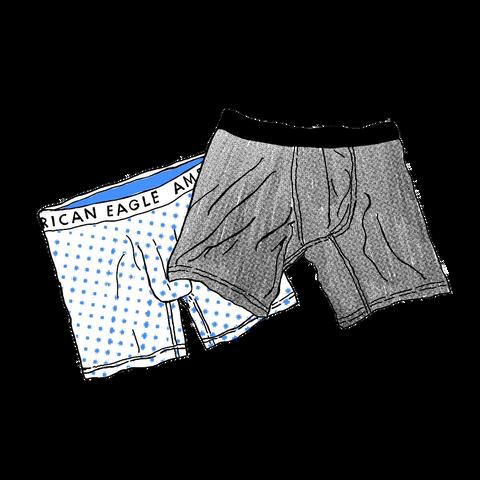
When I come back to the room after meeting with my assigned therapist, who has me recount my post-discharge game plan (get away from my parents’ house as soon as possible and stay at my friend’s house in Oklahoma), it is just as it was before you were there. The sun lights the pale, blue walls and the white tile floor. I make sure all of the clothes I brought with me are in the original brown paper bag I was given to put my dirty clothes in. Oz has already been discharged, too. I gave him the playlist and my Twitter username. He gave me the drawings he made of me and one of himself. They’re very queer, and I love them. I grab my two books off the shelf but pause when I notice Calypso has something wedged in it. Out falls a washable, purple Crayola marker. On the inside of the back cover, is your cell phone number and mailing address. Mail here when you’re done reading, reads the purple scrawl.
Part of me wants to kill you for using a purple fucking marker on my book. The
I scoff into this brown paper bag, my heartache about going home momentarily forgotten. You stole my underwear. You gave me a pair of yours. Is underwear trading a gay guy thing my closeted ass just didn’t know about? I place everything back in the bag and decide this is the only piece of our story I’ll tell. It’s too funny not to, and it’s the only piece of truth that feels safe, acceptable to share.
***
Isunderweartrading
agayguythingmy closetedassjustdidn't knowabout?
sewwhat
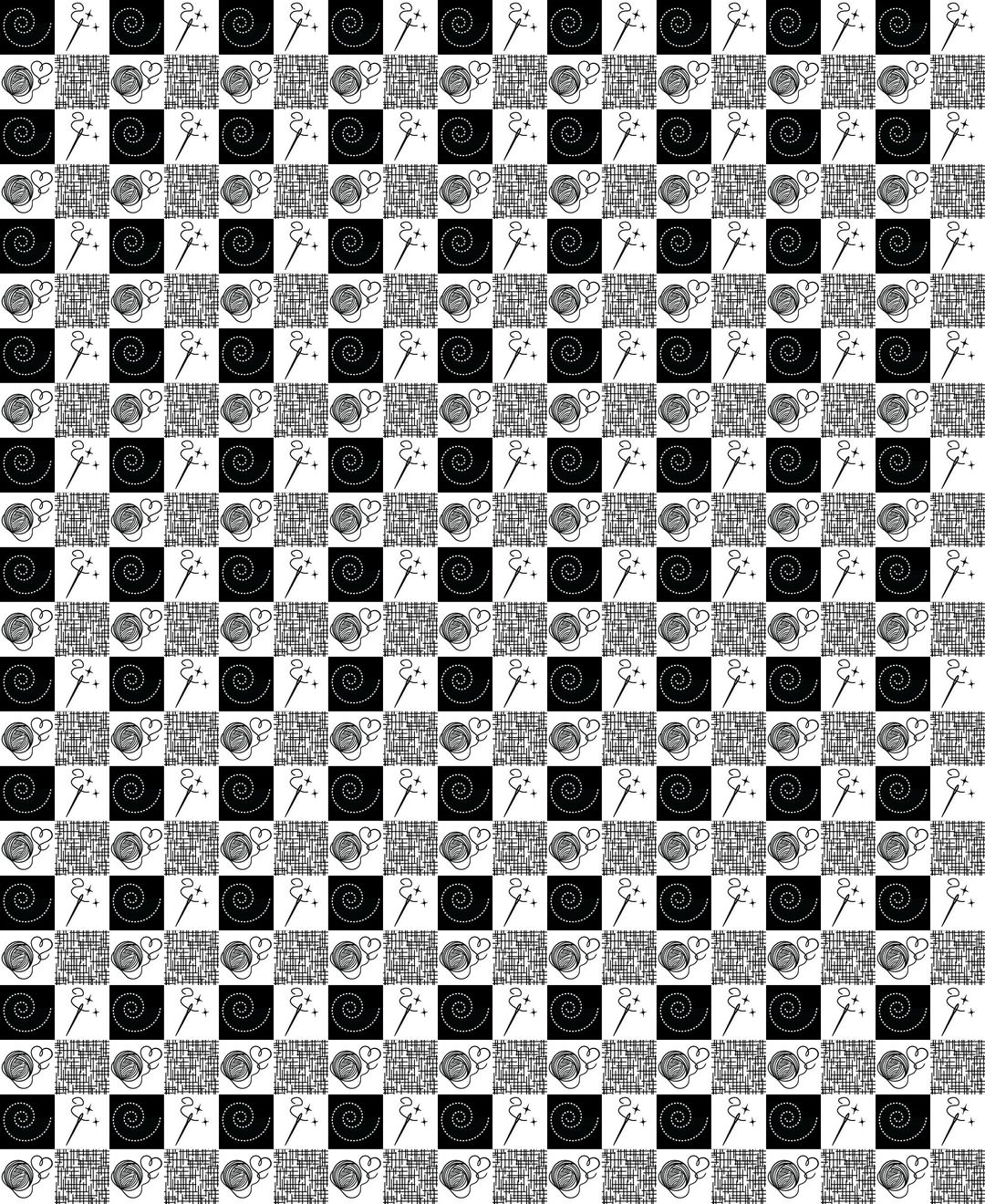
websspunbysmallcreatures laurensamblanet
on arrival, there are no spoons left. i woke without spoons just as i had for many weeks prior. on waking, stretch, rub magnesium oil on neck, meditate with ice hat on. in the shower, so dizzy i grasp at the wall and moan each time i move. pay no attention to the clothes i robe my body in. tend to cat, tend to pain. no spoons, no energy, just everything tilting and spinning, just bright pain on the left side. meals and outfits become as simple as i can make them.
on arrival, i’m in polar bear fleece pajama pants and a sweater. on arrival, my hair is disheveled, frizzing toward winter sun. on arrival, i forgot to look in the mirror and the mask acts doubly – to protect me and others from covid and to hide the blueberry remnants from the morning’s smoothie in my teeth. tend to pain, everything as simple as i can make it. winter is more vibrant than my life. i feel unanimated. no spoons, just bodily collapse.
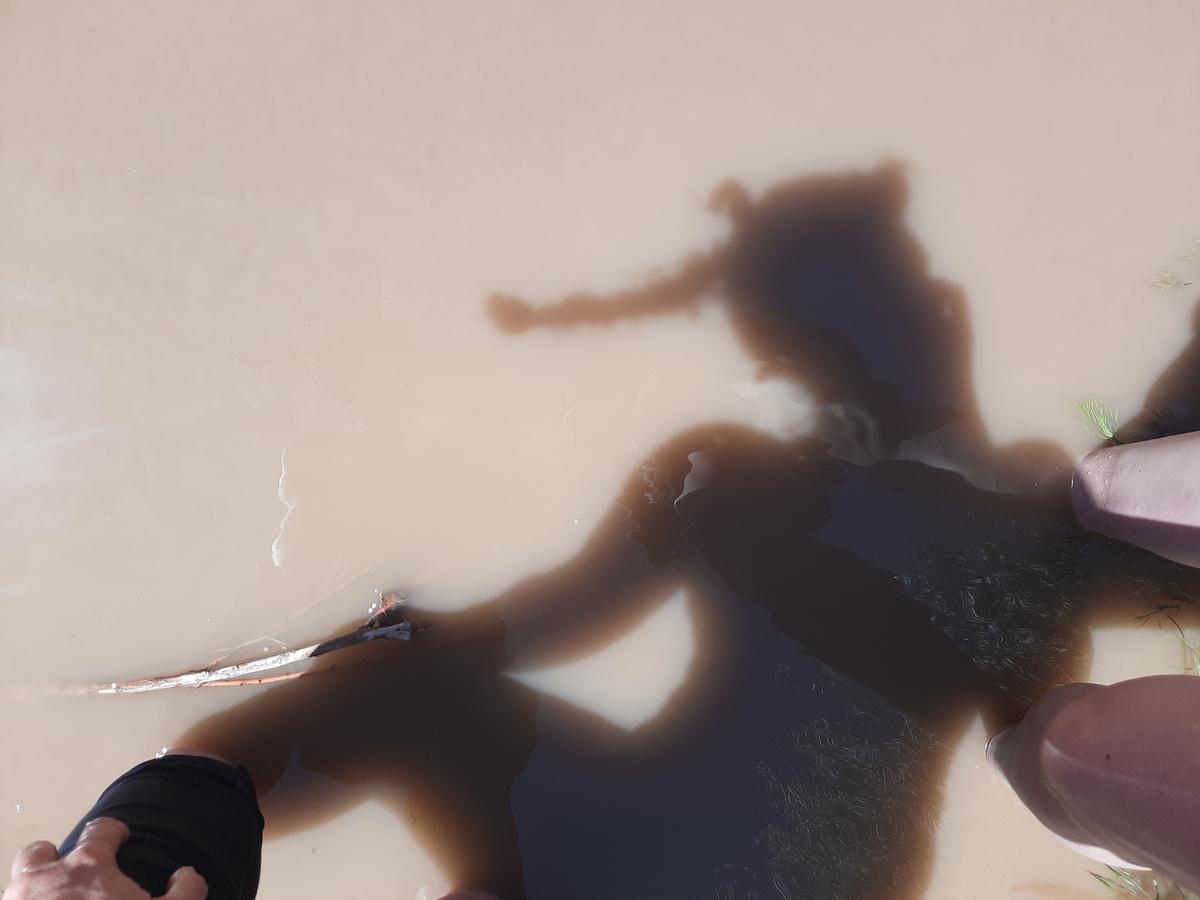
61
from doctor appointment to acupuncture to therapy to the grocery store. everywhere i go, i’m in disarray. everywhere i go, everything tilts and spins. sound cuts out in my ears and is replaced with a high-pitched hum, then the pulsing sound returns as if i can hear the blood moving through the veins in my ears. lights glare and amplify the nausea. pain on the left side glows a bright white that pounds like a hammer hitting my head over and over. i try to speak but aphasia grasps me – words form slowly and when mental thought hits air via throat and mouth, the words are not what i expected them to be. pressure builds in my ears, like being on an airplane but nonstop all day. i make it through a work meeting, send two emails, collapse onto the couch and try to find sleep through this neurological symptom soup.
in therapy, for nearly two years, i talk about my inability to accept this thing: chronic. just like with my queerness, i feel i’m not enough. i worry others will think, like with the rapes, that i made it up. or that i’m exaggerating. i struggle to take sick days from work. i struggle to simplify my life. i am aware that my illness is not as bad as what others live with. like with the rapes, how others have lived through more violent rapes. i am aware that my privilege makes tending to my illness easier than it is for so many others. i seek a cure – a reason why this is happening – a medication or treatment that will make the symptoms cease. at the same time, i’ve lost faith that any treatment could help when all the ones i’ve tried have failed. chronically, i have been told what happened to me is not that bad. chronically, i have felt like a child dealing with what is too terrifying, too much for any child to hold. chronically, i question my own experiences because of internalized biphobia, internalized ableism, internalized victim blaming.
in an all-day therapy session, i cry uncontrollably as my body begins a major collapse. unable to walk without my therapist lending me her shoulders, i cannot contain it any longer. i weep and tell her through tears and snot that i keep waiting to ask for help until it’s bad but it is bad already? at first, like a question. then certainty floods me and i cry harder. i am a child again, helpless in the face of what’s happening to my body without my consent, without any ability to control it.
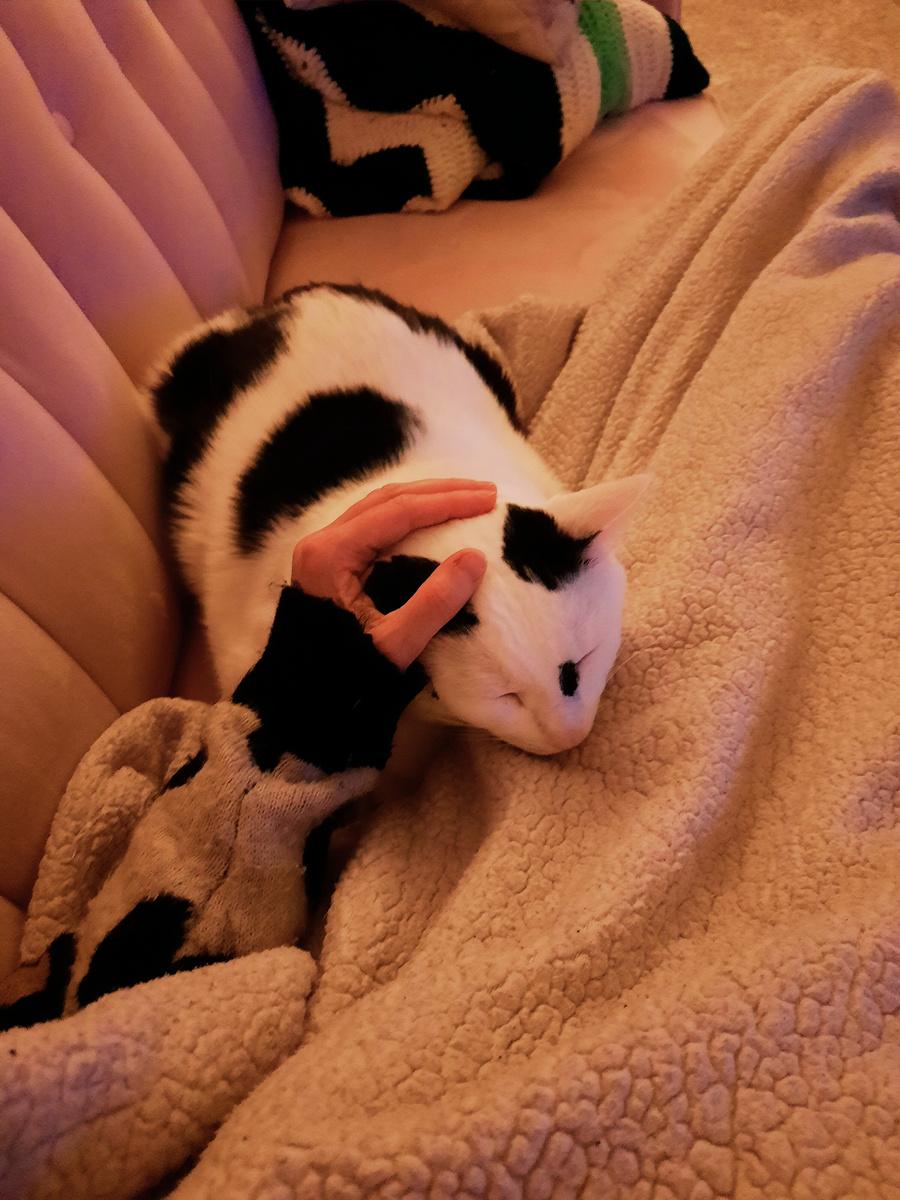
62
kiki sends me something on instagram about how we always ask if we trust our bodies but do we ever ask if our bodies trust us? i’m ripped open. my therapist asks if i’m willing to commit my life to my inner child who is in pain and it takes no time to know that, yes, i will be here for her til the end. but then i wonder what would happen if my therapist asks if i’m willing to commit my life to my inner chronically ill part or to my body. would i answer so quickly and with such dedication?
trauma is cycle and pain is a cycle and nothing is linear. i tell my therapist how much trying to accept my chronic illness feels like many years before when i tried to accept my ptsd. we’re back to what’s chronic. in his book losing music, john cotter writes, “i should have researched disability rights by now but i’m sick, not disabled: i can be cured.” i know where john is headed – this line comes early in the book, which at the time of writing this, i’ve only just started, but i know what’s happening because it’s also been happening to me. like john, i’ve begun the slow process of moving from i’m sick, i can be cured, to trying to accept that migraine disease is a chronic, disabling illness. and 2023, my most ill year yet, proves that the disease is certainly disabling. i see a post on instagram about how being chronically ill means a lot of waiting. that’s what it feels like – my life is on hold – i’ve simplified as much as i can – i’m afraid to do anything for fear of my symptoms worsening – i’m unanimated – i’m collapsing and waiting and afraid.
so finally, after much processing in therapy, i ask for help. ebs suggests on gchat that i read books by other chronically ill folks like frida kahlo. aubrie sends me cane suggestions and we mutually check in on each other and offer support through flare-ups. lily listens with such attentiveness and care as i tell her my fears for our upcoming trip to moab. my old acupuncturist offers to do a home treatment even though i live outside of the city she usually offers this service in. amy drops off freezer meals and magazines so i can make collages after seeing my facebook post about how flared-up my illness is right now. usama holds me tight through the pain, checks in on me throughout the day, and offers to drive me to doctor appointments in the summer once his semester ends. brittany is flexible with rescheduling or canceling our weekly writing time and always reminds me to rest and be gentle with myself. elizabeth sends me easy recipes over instagram and kiki sends me pain relief recommendations. christy texts to suggest i read virginia woolf’s on being ill. like in high school, social media and text messaging offer me deep support and community. then, i was bisexual in a biphobic environment and reeling from childhood trauma. i used technology as a way to find community and to keep in touch with friends when i felt most alone, most rejected. now, it’s the same thing. through these devices and platforms, i feel held. i learn more about my illness, about disability and ableism. i tell usama that i seem to be attracting other chronically ill folks to my workshop classes and i could not be more grateful for the gentle, supportive and vibrant community of disabled folks around me.
it is through this support that i feel something in me come alive again. i look in the mirror and admit it: chronic. but instead of turning away in grief, i go in closer to this thing, to what is chronic. i ask chronic how i can support her, how i can better tend to her. i ask my body the same. i commit myself to them.
63
i order the cane for stability when the vertigo and weakness are present, the tens unit for acute and preventative care, seabands for nausea, earplugs for noise sensitivity, the green light for photophobia. from my sick-couch, where i rest so much of the day, i watch project runway and on one episode, the designers must make garments that show the future of fashion and each team features one “body modification” like shoulder horns, chest feathers, scalloped backs. christian asks the designers if in the future, they would pay to have their bodies modified like this. i think about modifications and accommodations. how with cefaly, my tens unit, on my forehead, i look sci-fi, cyborg. walking with the cane, i am met with pity from some folks i encounter. what happened? oh, you need a cane now? as in, oh, things are that bad? but i don’t think of the cane as some major shift – this illness has been modifying my body for years, just invisibly. the cane isn’t pitiful – i now feel safer taking walks. the cane and the tens unit feel like extensions of me – another way of finding support as collapse continues.
my therapist notes that the color of the cane matches my shoes. i hadn’t consciously considered that when ordering it but her noting this and something i read act like a key that turns and i continue coming to life. i pick up the diary of frida kahlo. i look at images of frida online and then read carlos fuentes’ introduction to her diary and am not quite sure if i think his descriptions are ableist or if they are in fact just what my collapsing body and mind needed to read most:
the laces, the ribbons, the skirts, the rustling petticoats, the braids, the moonlike headdresses opening up her face like the wings of a dark butterfly: frida kahlo, showing us all that suffering could not wither, nor sickness stale, her infinite variety.
should we, as chronically ill and disabled folks, have to show anyone anything about suffering? should we have to be vibrant? should we be required not to stale? and yet, reading this, i look at my closet of bright clothes and i see my hair ribbons and bows, my earrings and my makeup which i have largely been ignoring for months. suddenly, i think of the way, in high school, i used clothing and makeup – both as a way to mask the darkness i felt internally and as a way to express my creativity, my queerness, the tiny bubbles of desire to stay alive that would rise in me.
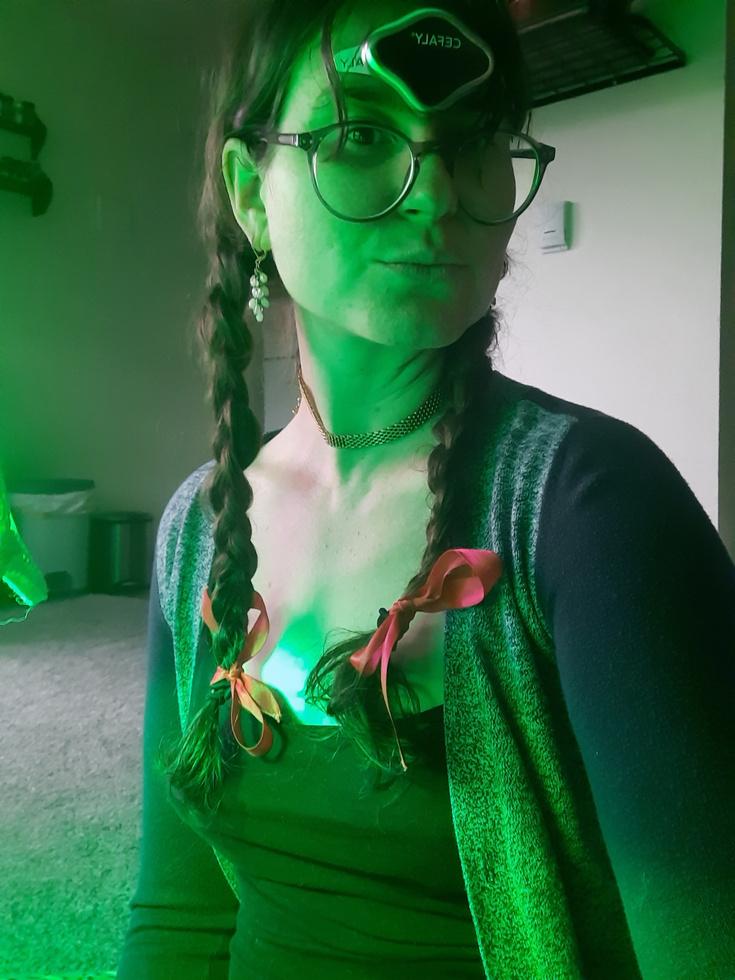
64
in a video i see on instagram, alok vaid-menon says something that strikes me, too, “these people would come up to me and they’d be like: why are you so dressed up, are you going somewhere, like is there an event? and it’s sad to me that people don’t see living as the event. i hate to break it to you, world, but you don’t have to wait for the party, you don’t have to wait for fashion week, you don’t have to wait for burning man, you get to have fun now, you get to be free now.” so all these pieces begin to fit inside the puzzle of me and what is chronic – the internet’s web of more support from afar, the accommodations and devices and aids, chronically ill and queer folks writing about the way fashion is another type of support or aid, and suddenly, i’m actually looking in my closet again, letting whimsy and play guide me as i create outfits that feel good on my body and that add vibrancy into what felt unanimated. this isn’t to say that i can do this everyday – so many days, my body cannot handle this act of play and on those days, we just rest. i remind myself that i don’t owe anyone, not even myself, forced vibrancy when it is not what i actually can handle or desire. but i begin to notice that the outfits build up a kind of deep care and add lightness to things when all feels dark, so i try to prioritize dressing up and adorning myself when i can.
the last time i was in moab, my body showed me the truth of my illness. i grew up in a hiking and backpacking family – i had been pushing my body to her limits in nature for many years and called that holy, brave. but the last time i was in moab, there was no pushing through. i had to turn around on the second day of a backpacking trip because aura took hold of me and i knew the pain and symptoms would follow soon. i’m afraid for my trip to moab with lily because i don’t know how to be in nature yet without pushing myself too hard and i’m not yet very good at asking for help and accommodations. but i feel so safe in friendship with lily and we talk several times about what the trip might look like due to my illness and i try to remember whatever happens, i will be held with love and care. we plan to take photos together and of each other, so i go thrifting before the trip to find more floral blouses to match the spring that’s just beginning to bud here in boulder.


65
soallthesepiecesbegintofit insidethepuzzleofmeand whatischronic-theinternet's webofmoresupportfrom afar,theaccommodationsand devicesandaids,chronicallyill andqueerfolkswritingabout thewayfashionisanothertype ofsupportoraid,and suddenly,i'mactuallylookingin myclosetagain,lettingwhimsy andplayguidemeasicreate outfitsthatfeelgoodonmy bodyandthataddvibrancy intowhatfeltunanimated.
on arrival, we are two femmes looking cute as hell, feeling safe and supported in a deep way. moab greets us with those massive, red sandstone rocks, with the muddy and everbeautiful colorado river, with the canyons that cut the landscape and render me small in the best possible way. there is a lavender superbloom on the way into canyonlands – the whole ground is purple. the cottonwoods are beginning to leaf and other small bushes and grasses paint the ground a vibrant green. lily and i communicate with clarity and gentleness throughout the trip. they lead me through internal family systems work when my inner child becomes fearful of my abandoning her on the trail. we cry together amidst the red rocks and hug each other tightly. we do breathwork and then we really listen to our bodies and turn around when the hike becomes too much. we rest all morning. we remind each other to drink water and eat snacks. we stand in awe of the arches, the canyons. we stand with our feet in the river, lily’s lilac shirt with billowing sleeves like a desert flower opening to the sun. we dressed up like this for the whole trip. i wear the floral shirts from the thrift store,
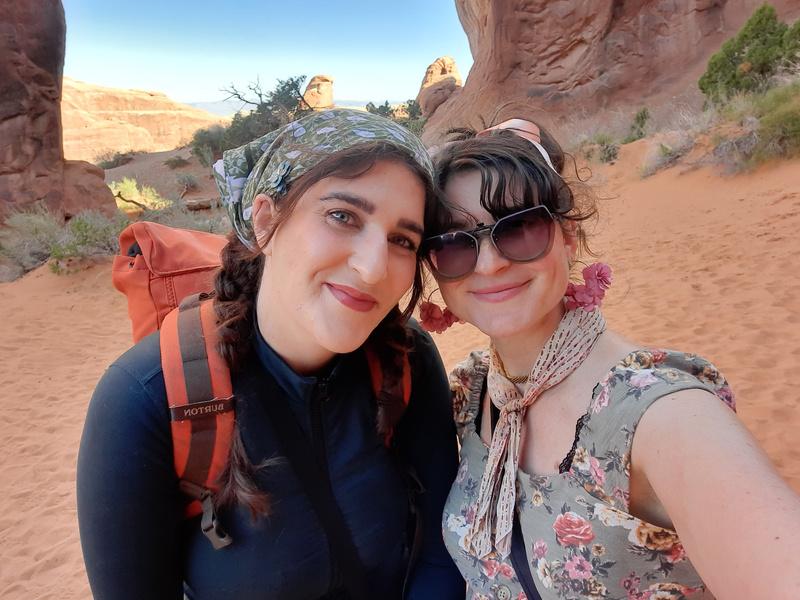
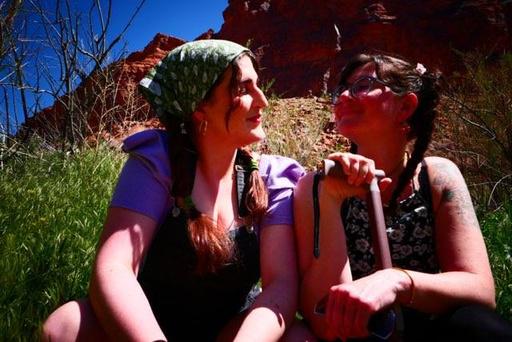
66
braid my hair into pigtails, wear butterfly clips and big pink, floral hoop earrings. we do our makeup. we do not make apologies for wanting to feel beautiful, we do not make apologies for needing rest. all we do is love each other and ourselves and this gorgeous landscape for four days.
when we stand with our feet in the river, it’s so cold that my feet become ice and the pain in my head seems to travel through them. my shadow is playful on the water, like peter pan, a little mischievous, reminding me of all the parts and life within me that are still alive, even if some days, they feel hidden. i feel like one of the lizards we watched, so tiny in this place where the rocks and canyons are so huge. here in the canyon, i feel my feet in the water and meditate on all who came before me – queer, disabled, healing from trauma; on the ecosystem of the desert – how such vibrant plants and creatures thrive here despite the harsh conditions; on the web of love and acceptance we can weave on this earth while we’re alive, if we choose to do so, if we turn away from hate; on how what once was small – first sand in the ocean – can come together due to the conditions surrounding and form into something bigger, bigger, massive; how even when conditions like wind and rain alter the landscape, it goes on, life continues.
we’re in the river and we’re not touching but i feel lily holding me, feel myself holding lily – the river is witnessing us, the rocks too. and even if we are so small, we were here, dressed like two flowers, vibrant and alive for this brief flutter of our lives and even as the landscape tilts and spins, i hold tight to my cane and i am nothing but grateful for my small life, for these webs of love and support that are anything but small.■
67
thisbarbieisaken giondavis
Austin Butler in Elvis. Ryan Gosling in The Nice Guys. Ryan Gosling in Drive. Ryan Gosling in the Barbie trailers. Nic Cage in Raising Arizona. Bruce Springsteen in the promo pictures for Born in the U.S.A. Johnny Knoxville in Jackass. Alan Jackson in the “Chattahoochee” music video.
1 month on T. 3 months on T. 6 months on T. 8 months on T. A year. A year and a half. She/they. They/them. He/they. He/him.
You taught yourself how to be a girl. Your mother didn’t want you to wear makeup or shave your legs or dress provocatively. She’s at the tail-end of the baby boomers, an educated hippie whose pride and joy is her knee-length red hair. She wears high waisted Levis and t-shirts and earrings. All your femininity you learned from your friends who sat you down in their bedrooms and held your face in their hands to put lipstick on you and tease you about how you struggled to keep your eyes closed as they scraped at them with a cheap eyeliner pencil from Target.
You learn that you love to look good. You love to be beautiful. You love wearing things that make people look at you, compliment you, talk to you. You learn to make friends this way, through your clothes and your curly red hair and your makeup. You attract other people like you. You attract people who want to be like you. You become the one putting makeup on others, painting their nails, lending them clothes. You love crop tops and short shorts and mini-dresses and high heels. You buy everything fast fashion because it’s cheap and easy and it feels like it’s all made for your thin, white, female body because it is and you love that feeling.
68
And then, you can’t remember why. Suddenly, everything you own feels excruciating. You stop looking in the mirror. You keep trying, hoping, praying you will push through this the way you had in childhood. You look at pictures of yourself as a tween with a pixie cut and cargo pants and t-shirts with bugs and birds on them. You try even harder. You buy more dresses, more makeup, higher heels.
And then, you get wasted again and pass out dangerously drunk in a bathroom in Memphis. You wake up knowing if you don’t do something, you are going to die.
When you get home, you get your hair cut into a long, shaggy mullet. You make a doctor’s appointment. You tell your therapist you are officially transitioning. You begin to lose your friends.
In all this, you have nothing to wear. You put away all your femme clothes but you don’t get rid of them. They feel like part of your body, like your breasts or your big hips, parts you love but don’t want anymore. You turn to your old standbys, ASOS and Fashion Nova, and order some men’s clothes. When you get them, you have a panic attack because nothing fits you. You are not a 6’0, wide-shouldered and narrow-hipped white man. The pants are too tight and the shirts are too big. Everything makes you look like a lumpy child in his older brother’s clothes.
Your boyfriend gives you some of his vintage cowboy shirts he doesn’t wear anymore. He takes you to thrift stores. You pick out some bland, boring pieces that feel as masculine coded as possible to you. What’s more manly than a brown shirt and jeans? What’s more masculine than clothes that look like nothing at all?
When you were a woman, you had given up on thrift stores for the most part. You wanted to look new, shiny, plastic, like an Instagram influencer. Now, you don’t know what you want to look like, but you know that assimilating into the crushing wall of elastic waistbands and slip-on shoes and blank t-shirts is not for you.
You had a lifetime of studying femininity. You have had about a year of figuring out masculine aesthetics. You’d thought about it before but never for yourself. You teach yourself how to use binding tape with the help of your friend Toni. It helps with wearing shirts that aren’t functioning just to cover up a bulky binder. You can wear tank tops again. You can wear button downs with the top few buttons unbuttoned. You can wear tighter t-shirts without worrying about binder lines.
Maybe part of the appeal of masculinity for some is the permission to not care about how you look. When you’re feminine, that isn’t something you’re generally “allowed” to do socially. But men can get away with anything and that is freeing. But not you. You still care so much. You hate the idea of looking boring but you also have no clue how you want to look.
You start making a list. It’s half a joke and half not. Male celebrities with t-boy swag. It starts with Austin Butler in Elvis, which you see three times in theaters. You are 9 months on T at this point. You want his effortless masculinity coupled with striking, powerful beauty. A lace polo shirt. A smooth leather jacket. Bell bottoms. A full lower lip. A long sideburn.
69
You make friends with the woman who works at the vintage clothing store downtown. You try on every shirt with a wide, 70s collar they have and you start buying them one at a time because that’s all you can afford. You find a few in Reno when you’re on tour. You grow out your sideburns. You wear flared Levis and a black beaded jacket to a Halloween party and everyone tells you you’re Elvis so you agree with them. A man you don’t know taps you on the chest with his hand to say goodbye. No one has ever done that before. It’s the first time you’ve passed so ubiquitously.
More than a man, you still want to be beautiful. You feel more beautiful than maybe you ever have before. It’s a metallic happiness. It’s chemical change. It’s your armpit becoming a stranger’s armpit. It’s making male friends who treat you like a man but in a good way. It’s being othered but less othered than you used to feel. The desire to smell yourself less. New soaps that all smell like car air fresheners. Taking a picture of yourself every day. Losing your hair. Losing your ass. Getting taller. The impish feeling of tricking someone when they call you sir or man or boss or buddy. Being a man in a group of men. Being a gay man in a group of gay men. The looseness that creeps into your life. The calm down in the depths of you that you didn’t know could exist. Chest hair. Stomach hair. Facial hair. Shaving your face in a motel bathroom. It’s so beautiful.
Masculine beauty comes with practice, just like anything else. You can’t be good at it when you’re new to it. You teach yourself to walk differently. You force yourself to stop doing vocal-fry. You teach yourself to phrase things differently, too. You are never going to know the effortlessness of cis men
but you didn’t know it as a cis woman either. This is a labor of love for your own life you’ve never had before.
There is the much more profound question behind “what do I wear?” which is “who am I?” Clothing, for better or worse, is a representation of ourselves for the world, one of the ways through which we assess each other quickly whether we know we’re doing it or not. We show each other where we’re from, where we’ve lived, what we like, our favorite colors, our moods, our music tastes, our sports teams, our professions, all in our outfits. Trying to figure out what to wear as a newly trans person is more than just finding clothes that fit: it’s trying to find a version of yourself that fits the world in the way you’ve always wanted.
At the end of the day, being a person among others will always be a performance. You will never really know how others see you versus how you see yourself. But, trust me, one day you’ll look in the mirror and realize you’re no longer a Ken in Barbie’s clothes. You’re just Ken. And that’s a good thing. ■
70
Tryingtofigureoutwhatto wearasanewlytransperson ismorethanjustfinding clothesthatfit:it'stryingto findaversionofyourselfthat fitstheworldintheway you 'vealwayswanted.
t-boyswag maxstone
Think timothée chalamet red carpet moment bright red sparkling backless pantsuit okay it’s like skinny twinkish straight maybe but it’s unclear
nails painted chipped a little not afraid to carry a cow print tote bag to the farmer’s market buy strawberries and little cakes
okay not straight def not poppers in my cross body bag with orange butterflies against ultramarine blue striped shirts and chelsea boots in touch with emotions cry a lot too much maybe vibe with the wives and girlfriends more than my brothers and cousins
I’m friends with the coolest girls ever bi boys on tinder say
I’m the best of both worlds makes me cringe
but maybe there’s some truth
71
used to be tall now on the short side of average bro tanks at the gym bc biceps don’t bother to hide my scars anymore
hard-earned shirtlessness
my brother sees a cute girl at the bar he wants to talk to but she likes me better sorry we gossip the rest of the night maybe I’ve got superpowers of insight and understanding nah just know what girls go through I can be anything ghost tattoo
late bloomer
blossoming in explosions of color
I am every shade of blue electric periwinkle
baby blue center of my aura
my arms open full wingspan stand up tall
I know butterflies are tired of carrying the weight of the transformation metaphor on their paper wings but it’s fitting here
72
73
I did cocoon and emerge as myself bleached my hair found my final truest form took flight later than most voice all crack-ly but cute.
glitterbeard pimhalka
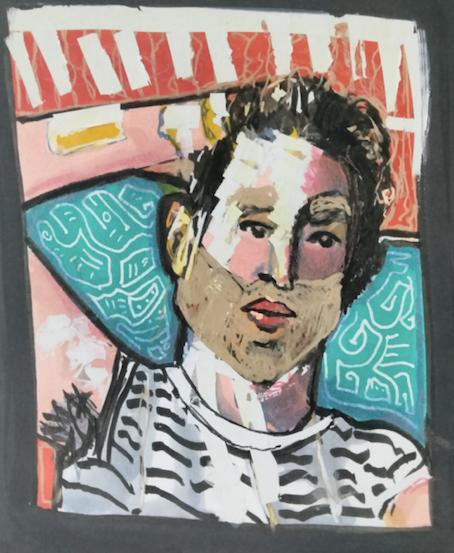
74
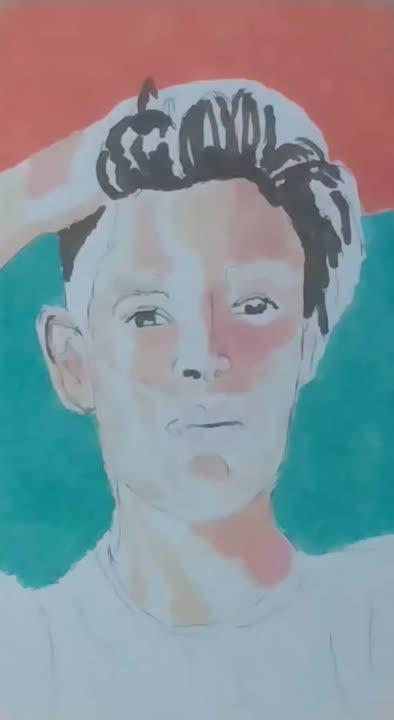
A Note from the Artist:
I have always conceived of my gender as DIY, a “grab whatever you have in the room to create a look for the kink event tonight or borrow for that interview” kind of aesthetic. There is a freedom in being able to go half a block down the street to a dollar store to buy a selection of glitters for a dollar to create beautiful fantastic facial hair, and then let my skin shed as I peel it away. At the time I was in a terrible place: the height of the pandemic, my marriage had fallen apart, I had recently gotten a concussion, had relapsed from a few months of sobriety, and I had just chosen a new name (Pim) that I hadn’t yet started to go by. I was very much going through the fire and creating glitter beards was a fast, affordable, and safe way for me to express my gender and celebrate in full queer fashion. This work documents my first glitter beard. Afterwards, I continued wearing them for Zoom events, and later as everyday wear at my next safe and stable home.
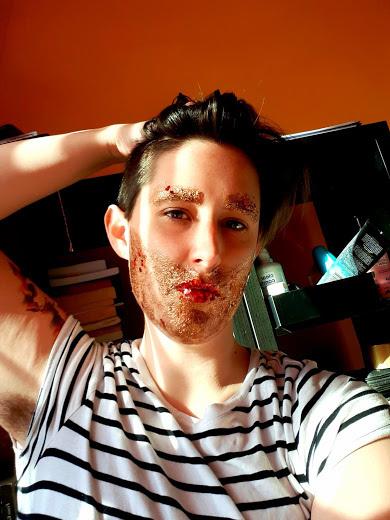
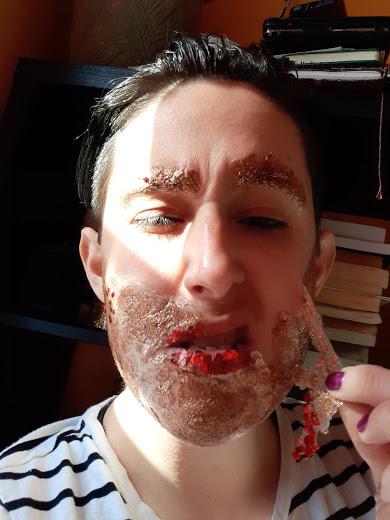
76
notwhatitseams
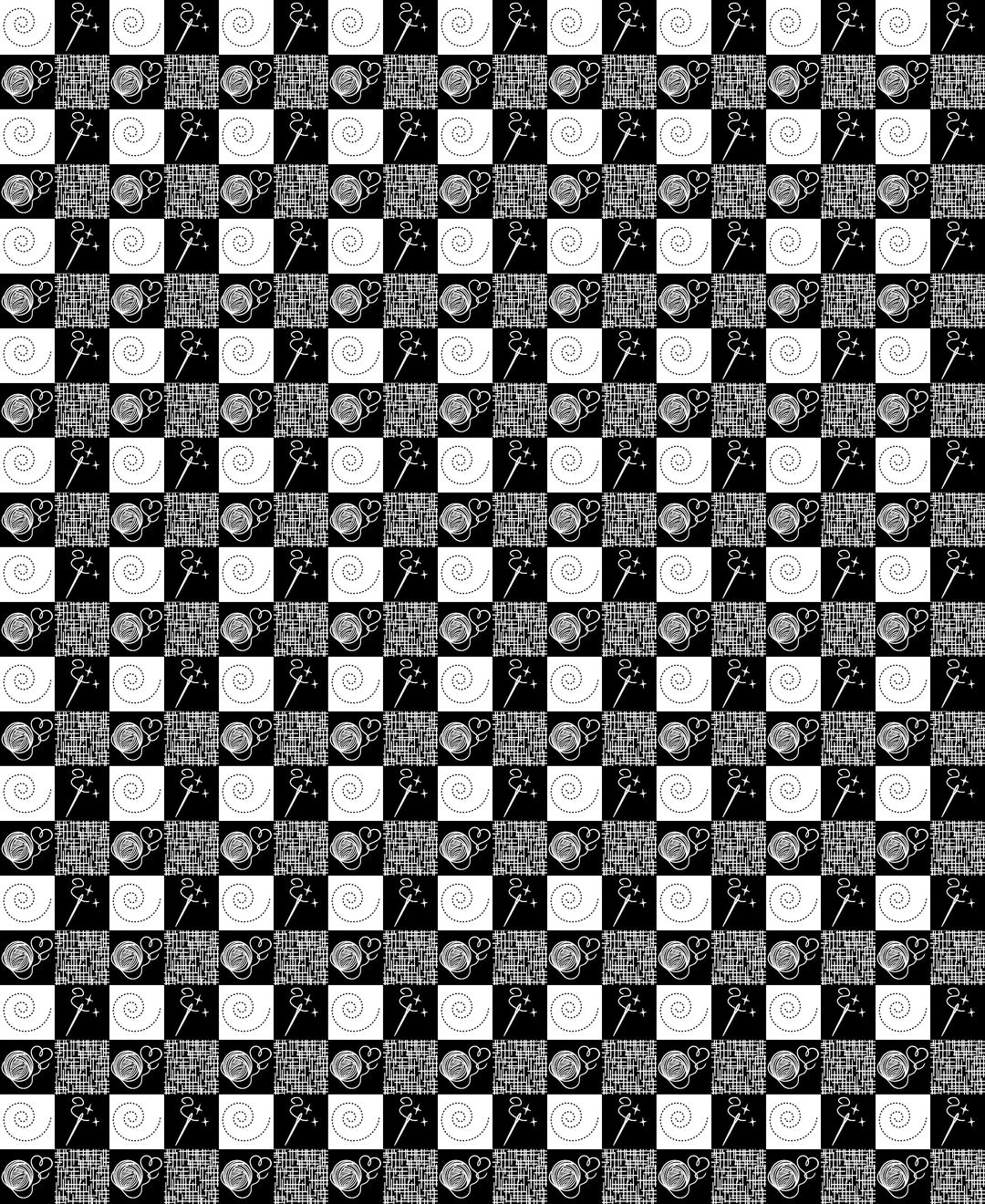
brodyparrishcraig
howglitterwasinvented
when I spit, I spell confetti in my cursive mirror house
everything I touch after the storm, it shines & stays for weeks.
You can never get me off your floor. I’m sweeping off your feet another asterisk leaned up against some heaven’s afterhours sign. a 90s skydancer,
see, I have broke a beacon from the sun to see you shimmer on past afternoon.
reflective tape along the binder’s dresser. I smell a sequin in this skinny dark.
a puckered lip to stall door marks the page of revelation: in the Walmart,
I broke the shine right off your wrist watch
& I flexed the face. I found a lake bed’s shimmer
in its silver. Ripped it off. a disco balled fist opening
to shrapnel when I dance or pray. glitter never leaves
There is no curfew for these hands
78
I’ve always felt lost in my own body. I never quite knew why. On most days, I still struggle to look in the mirror and smile back at my reflection. I’ve had body dysmorphia for as long as I can remember.
One of my earliest memories of my body dysmorphia was when I was eight years old. Like most Latinos, I grew up Catholic. My family wanted me to have a first communion. I studied every bead of the rosary and the prayers in English and Spanish. After passing all the written and auditory prayer tests, the day finally came that I had passed the first communion.
My mom and grandma were so excited to go dress shopping. They took me to the local Mexican clothing store. You know, the ones with the puffy-ass dresses. They got me a white headband, white lace socks, black shoes, and the poofiest white dress possible. The morning of, they took me to the salon to get my hair done in this ugly curly style drowned in hairspray. I remember going through the motions, wanting to be done with this.
After the church thing happened, the first thing I asked my mom was if I could take off the dress and immediately put on a Chicago Bears shirt, shorts, and gym shoes. We went out for pizza afterwards and I must have looked ridiculous in my church hair with a T-shirt and shorts. But I felt somewhat comfortable. This was the first event I remember this comfortable feeling vividly, and it wasn't the last.
The second time was dress shopping for prom. My aunt has always had this obsession with high school. I remember her talking about prom since my sophomore year. She took me to so many dress places and I hated every second of it. When I finally found a dress I could tolerate, I left the dressing room to show my aunt. She screamed happily and cried. This reaction sent me deeper into a hole. I just wanted to scream and cry out of sadness, but I wasn’t sure why…it’s just a dress, right?
79 @the.thrifted.gay
jfrausto
Thisfeelingofputtingon asuitthatIcanfinally bemyselfinsavedme.
I had no idea why my aunt felt so happy and reacted that way. I always wished I could feel that same emotion when putting clothes on. At the time, I never thought that was going to be a possibility for me.

After going off to college and finding my style, I discovered that feeling. That happycrying-and-screaming feeling. That feeling I thought would never be possible. It finally happened after 23 years when I bought a light pink suit. The suit jacket cropped perfectly at my waist. This gave my hips a more straight look to make me look more masculine. It was the first time the shoulders fit and I wasn’t swimming in a blazer. The cuffs stopped right at my wrist. The slacks were fitted right around my waist and were the perfect length to my ankles.
I wore the pink suit a couple of times. It was a beautiful moment to put this suit on for the first time and for it to fit me the way I wanted it to! I couldn’t put into words why this felt so right, until I got some friends together to put on an all queer fashion show called Dandy Dorothy. Dandy Dorothy was to represent all the beautiful sides of queerness. We had two other designers present their work. The last design of each collection was a showstopper: the look that leaves the audience in awe. I wanted to highlight this feeling when wearing this suit.
80
I wanted to tell a story with my collection. I’ve always considered myself to be a hopeless romantic. I wanted to celebrate my androgyny by marrying together my femininity and masculinity. I wanted my showstopper to represent my pure joy. That happy-screamingand-crying feeling. After not having worn the pink suit for a couple of years, I decided to upcycle it. I wanted to give a chance to other queer people to experience the beauty of this feeling. I told my sewing coach Blair Goldman (@blair.wears) that this would be my coming out as trans. She’s been the most supportive of my design journey and this process of becoming myself. We spent weeks cutting, measuring, sewing, and ironing a trans flag to stitch into the blazer. Then, we cut out 5-foot-long pink, blue, and white stripes. We sewed these stripes into the collar, creating a trans cape coming out of the suit. I wanted to visually describe the happy feeling I had when I first put on this suit. At the time, I didn’t understand I was trans. This feeling of putting on a suit that I can finally be myself in saved me.
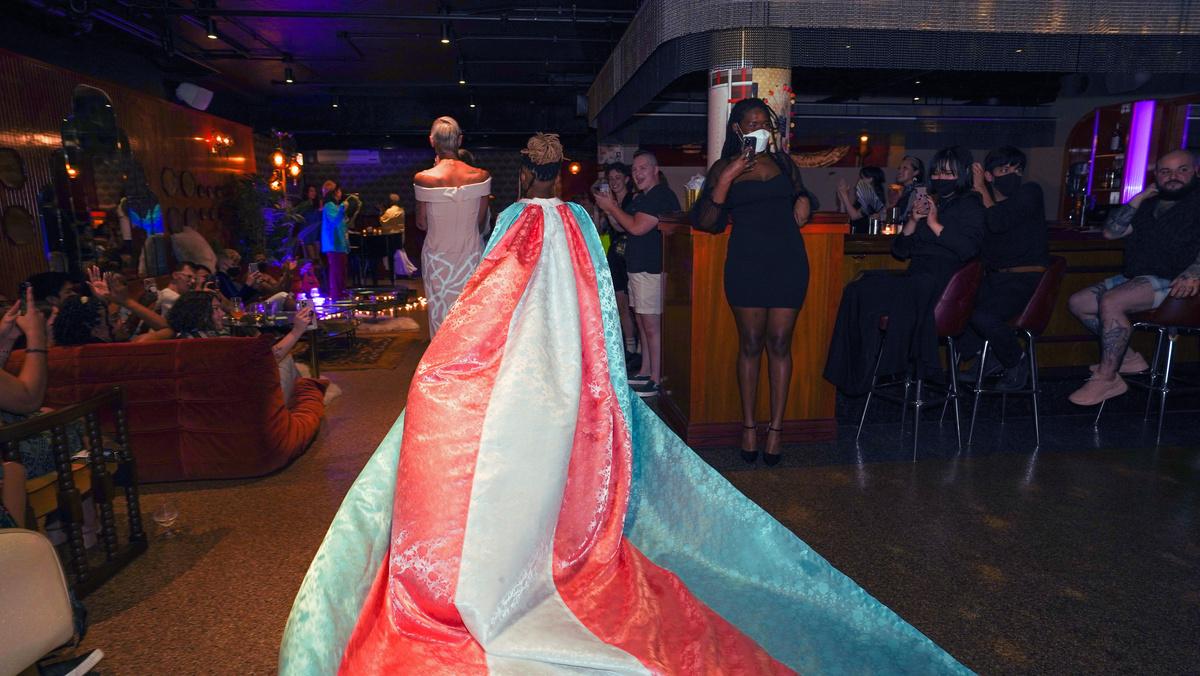
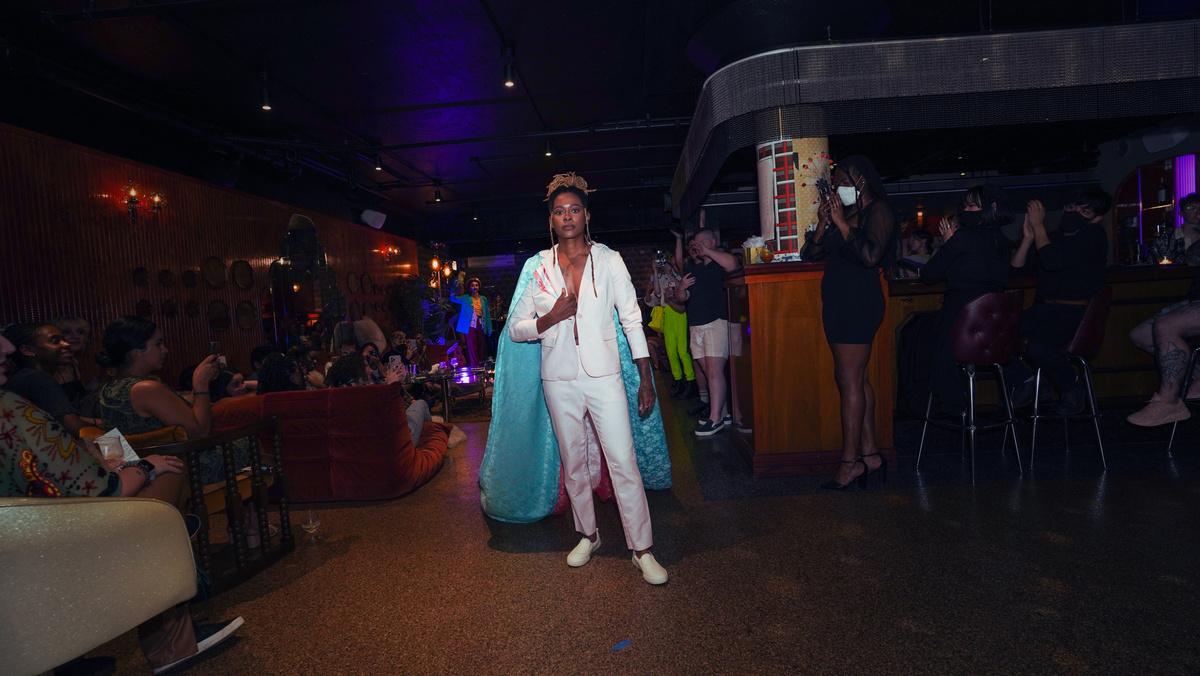
Queer people have very few safe spaces to be authentically ourselves. The one place we deserve to feel safe is in our own bodies. Oftentimes, I don’t feel safe in my own body, but styling and designing clothes to highlight the parts of my body I do love, and that I feel good in, gave me a new life. That’s what I strived for as a stylist with this project: to give a suit a new life, to style other queer people in this life-giving suit, to give others the same happy-screaming-and-crying feeling when they put it on. To be able to give others what I gave myself, that missing feeling.■
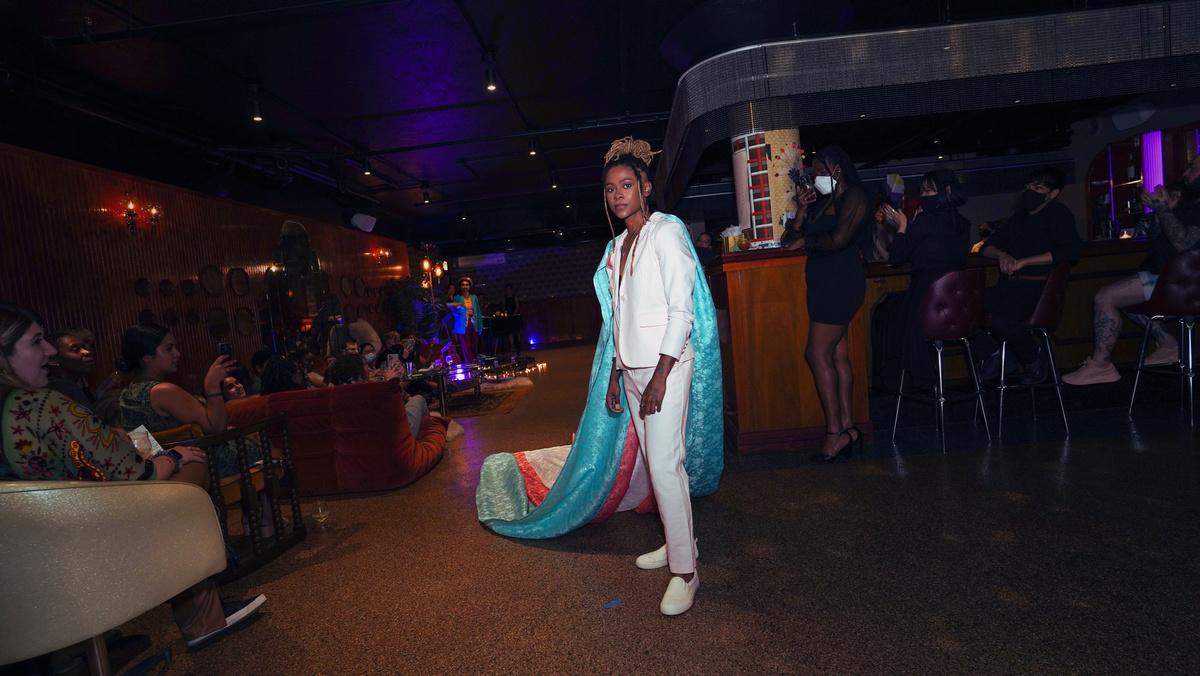
81
solemates
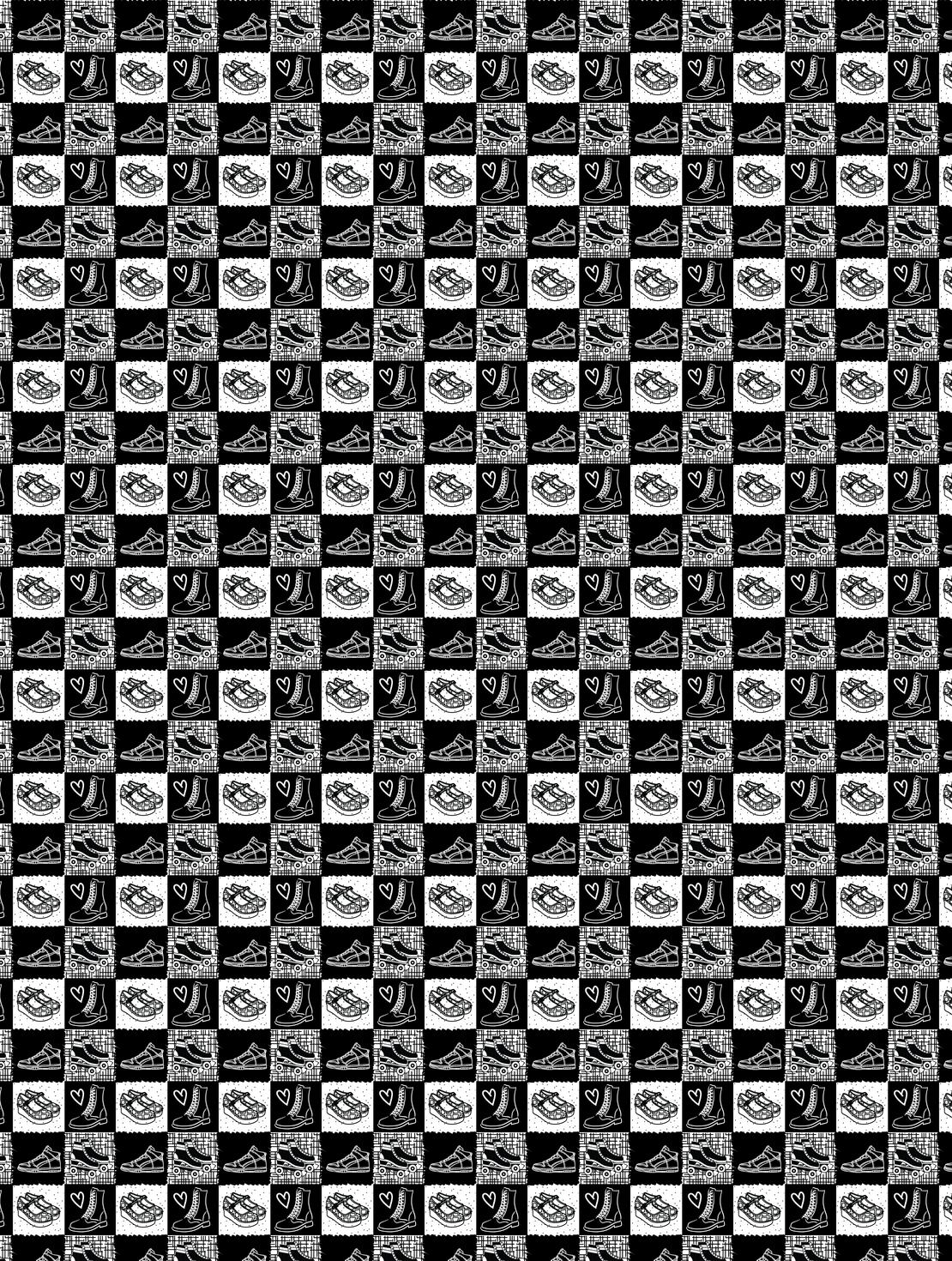
angelleyba
icrywhenirewatch rupaul’sdragraceseason9
for Kassandra but only in the finale when Sasha Velour and Shea Coulee go head to head in the iconic Whitney Houston “I Get So Emotional” lip sync and even though Sasha wins and will go on to take the crown they hold each other
for the longest five seconds ever felt through a screen because they understand
what it means to have a best friend and to find a sister and to love and to win and to lose and to lose pieces of what you’ve found when you
become the you that keeps winning long after the clicking of your sister’s heels fades behind the big curtain
leaving nothing but silky red rose petals on the stage and the intense roar of the live audience
clapping yelling crying embracing because they can’t bear to see it end
83
findingmyselfinmysneakers stephscott
When I look at photos from my childhood, I don’t remember being happy. But there’s one I keep returning to. One I look at with fondness. One that makes me smile. In fact, I recently pulled it from the album and hung it above my computer as a reminder that the kid in that photo is thrilled. I write for that kid. In the photo, I’m riding my bike one foot on the handlebars, the other on the frame—a trick I’d spent weeks trying to master. But it’s not the bike trick that makes me smile; it’s my shoes pink, high-top, knock-off Converse. My mom gave them to me for my birthday, and except for the color, I loved them. In fact, they quickly became my most prized possession.
The color was a compromise: my mom let me wear “boyish” shoes, but they had to be a “girl” color, lest anyone think I was actually a boy. So, I worked with what I had; what I was allowed. If I was only permitted to have pink Chucks, fine. But I’d make them mine, make them match me. And to do that, I had to break them.
I took to dragging the toes of my shoes against the asphalt to scuff them up while riding my bike. I sat in my room at night, smacking them on the floor and bending the tops back and forth until the edges frayed. I’d sit in the empty lot down the street and scrape them against the ground and grind gravel into the sides, trying to scrub the pink away.
It wasn’t an act of destruction, beating up these shoes I loved. It was liberation. With every drag in the dirt, every scuff of the cheap rubber sole, I peeled away a little bit of femininity. With every scrape, I revealed a hint of the real kid beneath.
84
Of course, I didn’t understand all this at the age of ten. I wasn’t making a conscious decision to declare my gender nonconformity. I was just trying to find a way to feel like myself the one buried deep inside the terrified kid whose insides coiled like a spring my feet were stuffed into stiff heels. The kid who choked on the oppressive fumes of unwanted home perms my mom gave me to ensure I “looked like a girl.” The kid who cried every Sunday morning when shoved into a church dress, then sat straight-backed in the pews, trying not to suffocate.
The kid who prayed at night to stop feeling broken and wrong.
I didn’t understand then what I was; I just knew I didn’t fit. I didn’t want to be a boy; I didn’t feel like I was in the wrong body. I just hated dressing like a girl. Hated looking like a girl.
In hindsight, I realize that it was mostly fear that drove my conservative religious mother to try to banish the queerness from me. But at the time, my appearance was a constant source of conflict between us. She, in her perfect makeup and always coiffed hair, and I, a tomboy who loathed all things feminine and just wanted to wear jeans, ringer tees, and baseball caps. But letting me pick my shoes was a compromise she was willing to make. The one way I was allowed autonomy and expression, and except for formal events, I was allowed to wear what I wanted on my feet. As a result, my feet became the one part of my body where I felt like me.
Sort of.
Because limitations still remained.
I was allowed high tops but couldn’t get the blue basketball shoes I wanted; I had to get white aerobics shoes with pink stripes. I got cross-trainers, but they were purple and turquoise (this was the 80s, after all). But then something miraculous happened. Sometime in the early to mid-90s, Adidas Sambas became all the rage, and everyone was wearing them, regardless of athletic status both boys and girls. Pretty girls, feminine girls. Girls who represented everything my mother wanted me to be. Girls who were everything I wasn’t.
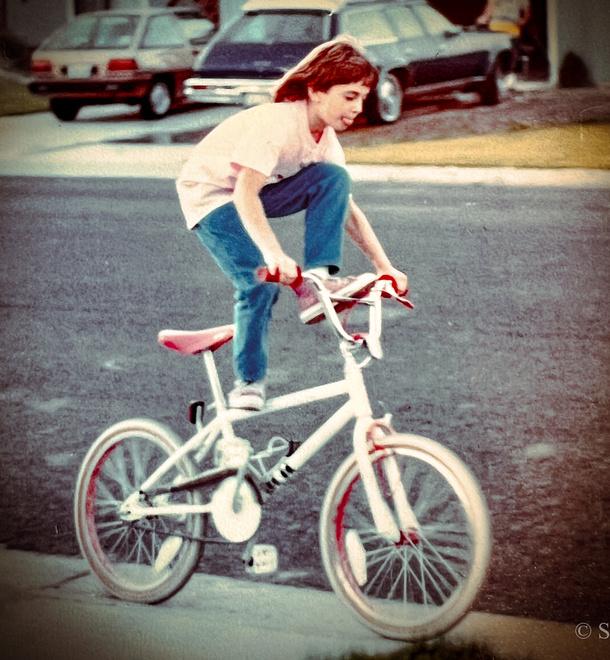
85
When I got the Sambas for Christmas, I cried. It wasn’t the first time I’d shed tears over clothes, but this was maybe the first time I wasn’t crying out of embarrassment or frustration by being pushed into an outfit that betrayed my personhood. This time, I was crying in relief. Because my parents gifting me those sneakers was like an acknowledgment of me the real me buried inside. Those sneakers were the beginning of my rebirth, and while my family opened their other gifts, I sat on the couch, curled up in my pajamas, holding those black shoes with three stripes in my lap. I held them to my nose and inhaled the warm scent of new leather. Slowly stroked the suede strip over the toe box. Traced my finger over the ridges and circles on the gum rubber sole. I laced and unlaced them as I debated how to wear them tongue flipped down or up.
Unlike with those pink Chucks so many years before, my Sambas were treated with reverence. I kept them high out of reach of my siblings and animals, lest they be scuffed or dirtied. I was practically vibrating when I finally put them on to wear to school, and as I tied my laces, I felt a piece of myself relax. Not all of me, but a piece. I carefully cuffed my jeans, so they sat just right on top of those three white stripes and stared down, a smile stretching across my face. Because when I looked down, I saw a glimmer of the person inside. Small, hidden deep inside the person I wished I could show the world was starting to emerge.
By the time I grew out of my Sambas, I had a part-time job and could get myself a new pair. From that point on, I no longer had to compromise with my shoes. And while I also tended to dress more masculine as I grew older, I only took it so far, unwilling or unready to deal with questions. Honestly, I wasn’t sure I had the answers, anyway.


But as my sneaker collection grew, so did my freedom to express my true self. The self that identifies as female but doesn’t feel comfortable looking it. The self that knew I didn’t fit cis-gendered societal norms but also knew I wasn’t trans. I was somewhere in the middle of a binary I didn’t understand or have the vocabulary to express.
It seems like such a silly thing finding oneself in their shoes. But every time I laced up my sneakers, I felt that hidden, fear-laden part in my chest open a little more, allowing me to breathe a little deeper. Every time I slipped on a pair of sneakers, it was like I was being reborn.
While there were times I still wore feminine clothes as I hadn’t quite managed to buck conventions entirely, my shoes remained the one constant where I was myself. I even wore sneakers on my wedding day white Adidas with baby blue stripes my something new and blue. My mom picked my dress, and because she was paying, I didn’t want to fight when she picked something I didn’t like.
86
back and forth for the entirety of the ceremony not because I was nervous about getting married, but because an entire church full of people was staring at me as I stood up front, draped in white silk and lace.
I sometimes wonder what it would have felt like to wear what I felt comfortable in instead of acquiescing to the norm and my mother’s expectations. But at the time, unaware and perhaps unwilling to resist, wearing soccer shoes under my wedding dress felt like a coup. I let them put me in skirts, and a bustle, and a veil that sprouted off the top of my head like an organza fountain. I tried to keep the tears inside as they painted my lips deep red and
extended my lashes with dark mascara. My hair was swept up and pinned on my head with a thin, floral circlet, and my pale shoulders and chest splotched red from embarrassment at my décolletage on full display, thanks to a strapless bodice I didn’t want.
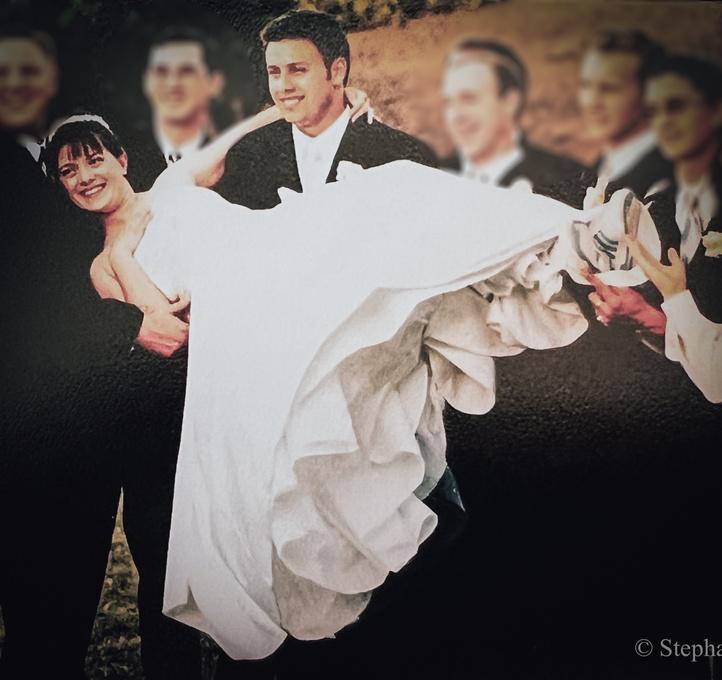
87
Itwasn'tanactof destruction,beatingup theseshoesIloved.Itwas liberation.Witheverydrag inthedirt,everyscuffof thecheaprubbersole,I peeledawayalittlebitof femininity.Withevery scrape,Irevealedahintof therealkidbeneath.
But underneath a nest of tulle and cotton petticoats, my feet stood cocooned inside soft leather on gum rubber soles. So, I wiggled my toes in my cushioned cotton socks and centered myself, lifting my smiling eyes to my spouse. Despite what I looked like, I was still marrying the person I loved. And I was doing it in sneakers. Hidden beneath a costume of femininity and tradition, I was still there. I was still me. So, every time someone complimented me about how pretty I looked in a dress, I’d thank them, then lift my skirts and grin. “But look at my shoes!” I’d say with glee.
It took me another decade and a half to come out as queer years after my mother passed away. Now that I’m in my 40s, I have a better understanding of who and what I am. As I embrace more of my true identity and match my outward appearance to who I am inside, I breathe easier. When I look up at the picture of that ten-year-old girl riding her bike in pink high-top Chucks, I smile. I’d love to show her the neckties in my drawer and the short fade haircut I wear. But mostly, I’d love to show her that shelf full of sneakers in my closet. I think she’d be thrilled.■
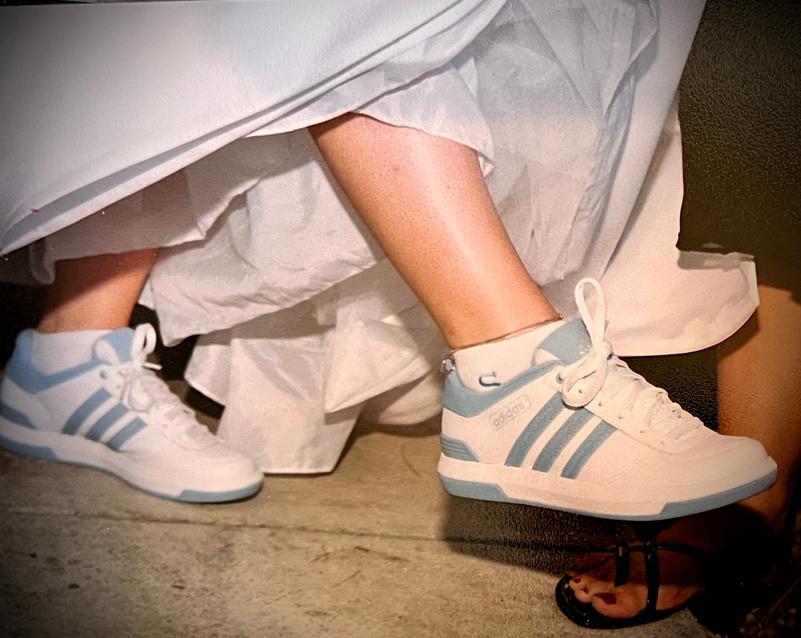
88
triplethread(s)
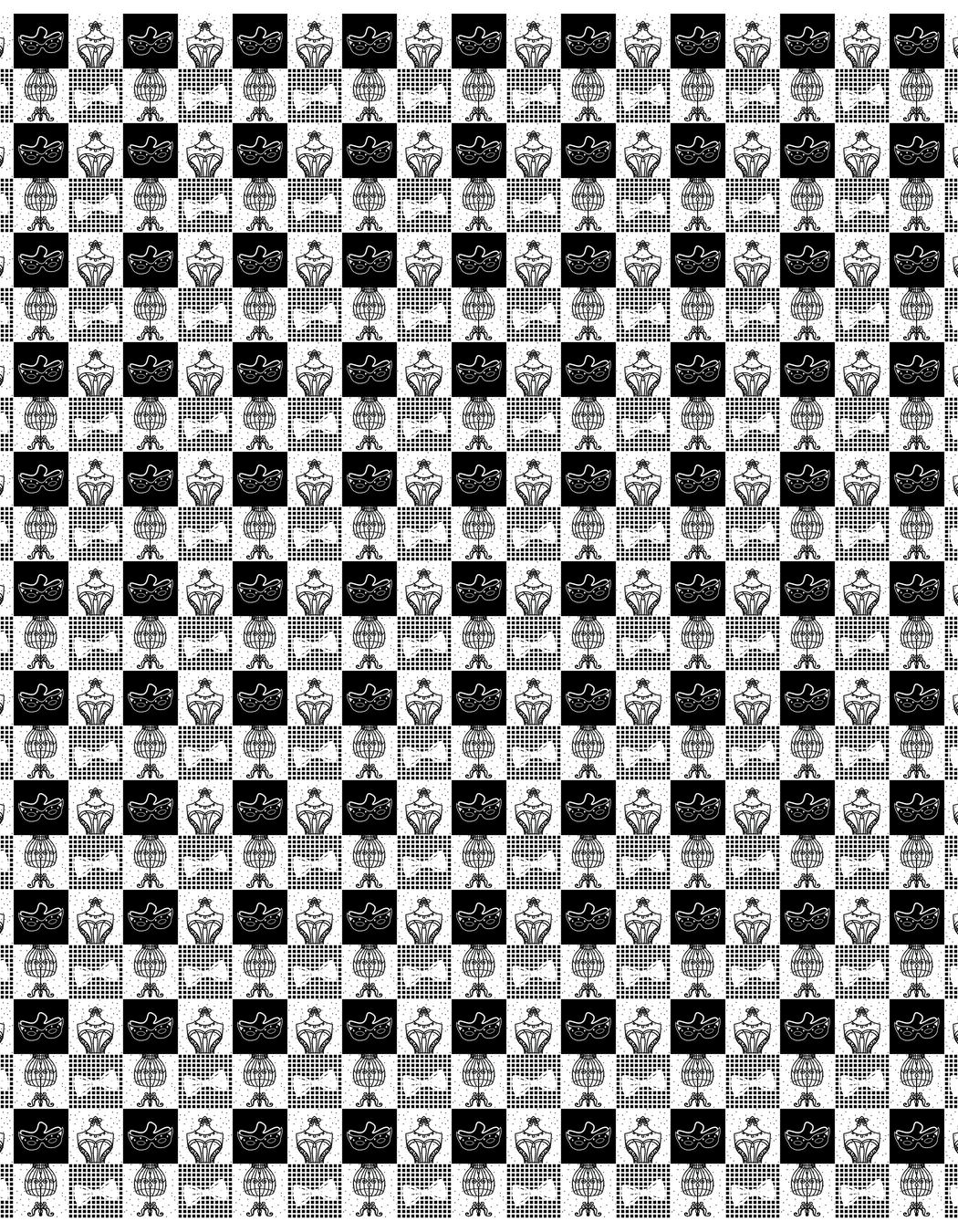
alisonlubar
femmedragon
Oh Nemesis imprint– you squeeze into jeans and find something of silk to drape on top like piped buttercream, a décolleté dusted with sparkling minerality, put your femme-drag-on
again. That’s the only way to add fire to your roar. Check out your ass in the mirror then throw your clean hair over your shoulder, head tilted down. Wink. The mirror winks back.
You are both St. George and the Dragon. You are just the one reading the picture book, ready to wobble in a velvet stacked-heel boot, and keep your mascara waterproof
for just this reason. Besides, you know how to pretty-cry, still, and hold your breath all night. It’s just like passing a graveyard.
Resurrect the only way you’ve learned to stay powerful, and if not powerful, safe, and if not safe, then at least pretty enough that they let you go, or at least still stop for you at the crosswalk. Keep the wings and flames under a cashmere cardigan for when you really need them.
90
myhuntfortranstasticweddingattire j.d.gevry
There was nothing for me.
I squeezed my eyelids together; tried to place myself in a sharp suit at the end of a long aisle at the end of a long courtship at the end of a long transition. I saw myself walking down the aisle in this suit, next to (but comfortably far from) my old-school mechanic dad looking awkward in the only suit jacket he owned and a tie he never wears, purchased circa 1985. I felt my sparkle crack; my veracity wither. All the guests did, in some way, even under their own desired beliefs that this was ‘appropriate’ and ‘correct,’ given how she/he Frankensteined his/her body.
I squeezed my eyelids together, trying to place myself in a long ivory gown: lacey top laying smoothly over my flat mastectomied chest, skirt flowing as I walked, eye glitter sliding into my beard on my sun-pressed face. I felt like a trans drag queen bride who’d been unable to escape the predetermined destiny of that throne. I saw my dad in his suit looking both happier and less comfortable than I’d seen since my first puberty, when I began to wear makeup and shave my legs as well-behaved women do. I envisioned him walking beside me knowing he’d always wanted a son knowing this is not what he’d had in mind when making that request to God in the year of his tie’s manufacture. I saw the Catholic disgust ooze from the rows of chairs I cared. I did not care. I wanted to not care.
91
“canihelpyoufindanything?”:
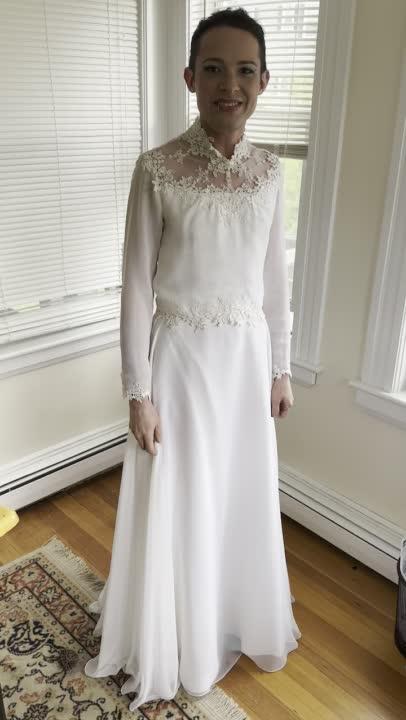
There was nothing for me.
Lace bridal tops basically didn’t exist. Thinking perhaps I could turn a dress into two pieces, I searched rows and rows of dresses in shops filled with onl women; serpentine sales associates pressing their faces into the glass door my transitional home this confused wedding attire turmoil, trying to see what furniture lay still disassembled inside. I needed a screwdriver. They ha hammers. And no one had a floor plan
I tried on one. I tried on too many. I drowned inside princess ball gowns an waddled in mermaids and flowed in aframes and blasted through some trumpets. Sweetheart necklines surfacing sourheart memories of the fatty lumps I cried nights over to destroy, compressed my lungs in the daytime just to get through, sold my body in exchange for freedom from. W darts thrown, impossible to remove, there was too much space for gratefull abandoned pieces; no space for remarkably still-present me. I couldn’t bear to shave my beard during these days; keep the pendulum centered.
Still nothing for me.
I longed for a flowing skirt to float around me as I approached my love in procession, cut our cake, greeted our guests. Intricate ivory lace patterns in not-too-femme top, delicately complimenting my lightly made-up fac its sheer, lace-framed open back held together with a long line of self-covere ivory shank buttons grazing my spine, snug in their rouleau loops. Pearl earrings and lip studs; maybe
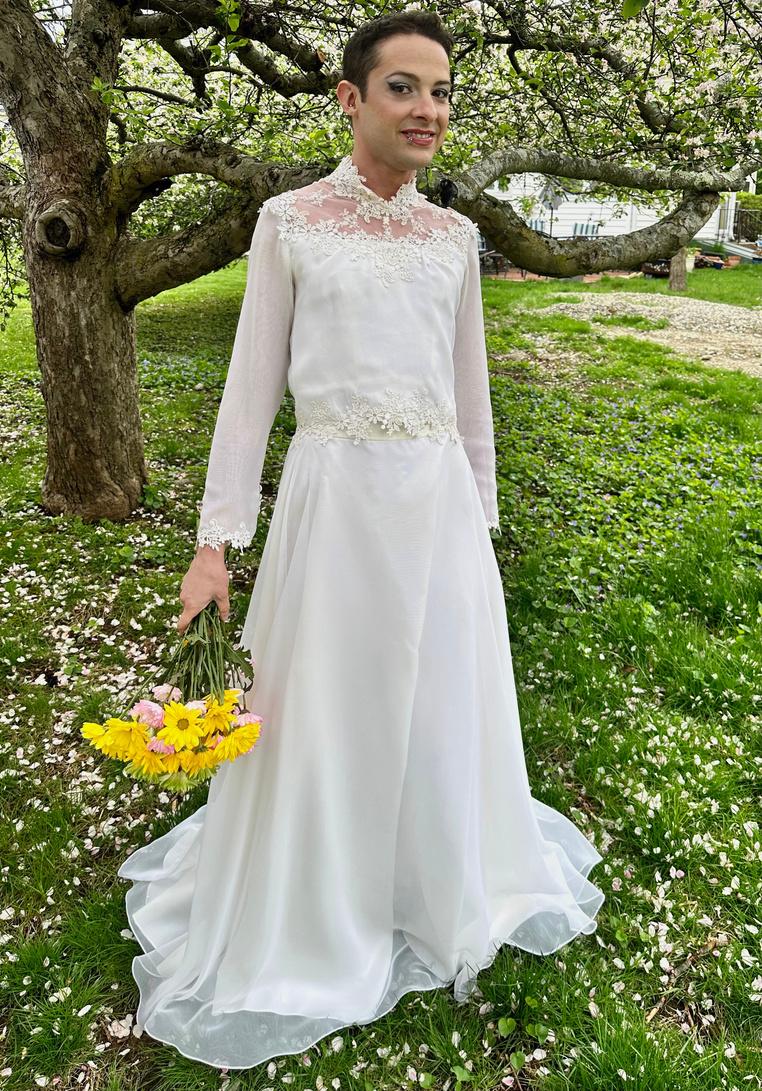
93
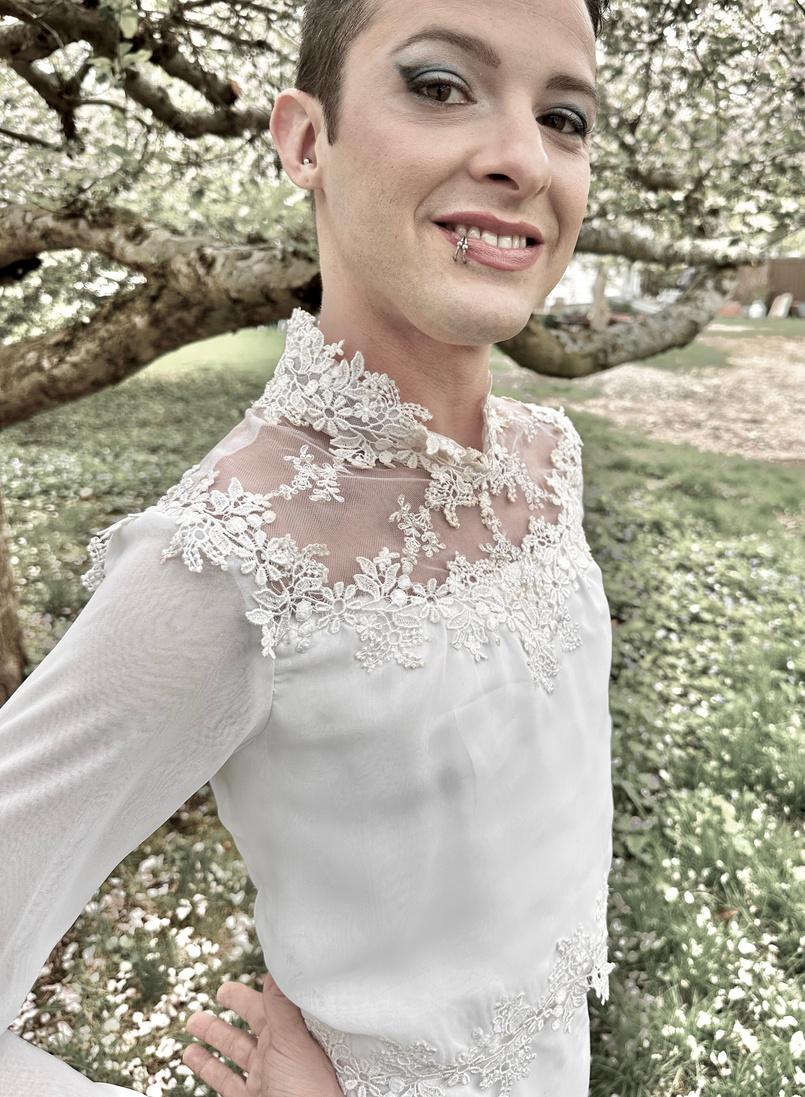
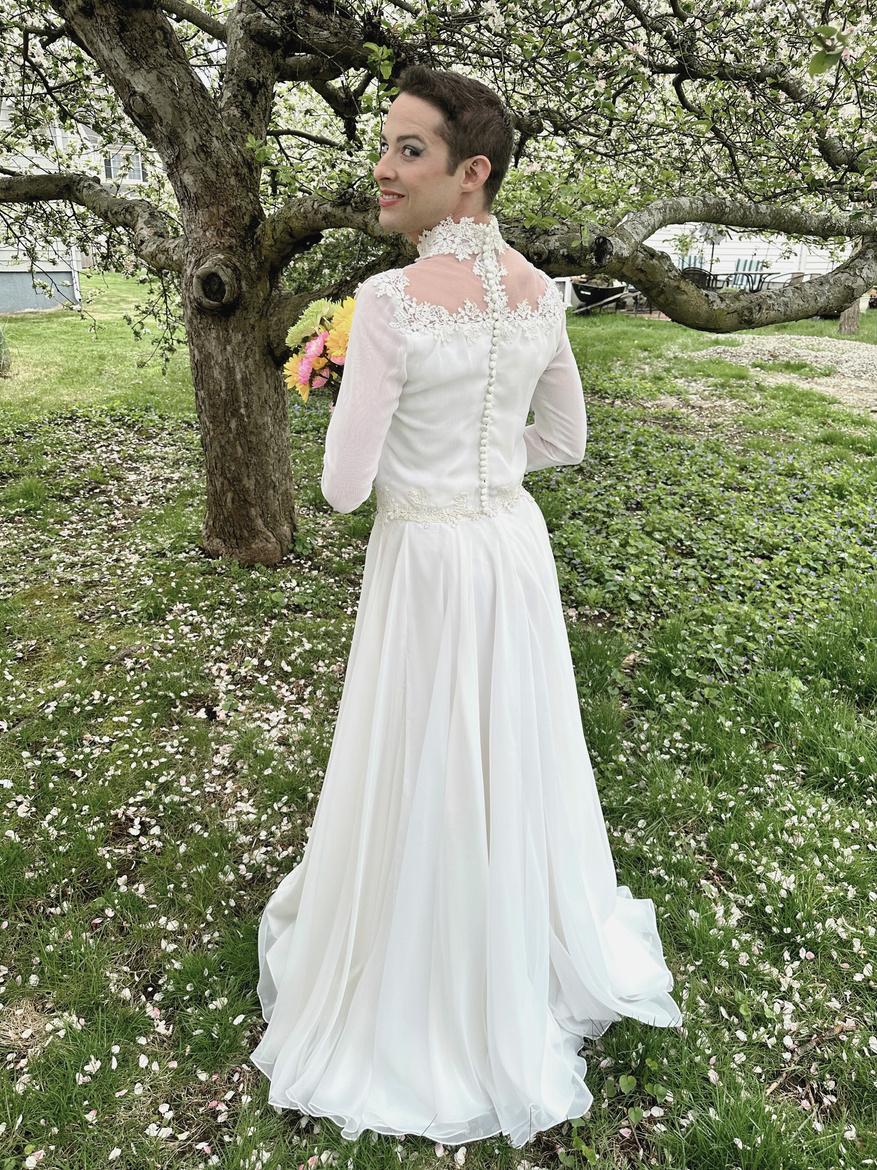
94
DidIgenuinelyexperience thisoutfitasnotaligning withmygenderidentity?
Inthecontextofoneofthe simultaneouslymost importanteventsofmy lifeandheavilysocially gendered,thesewerenot easyquestions.
rhinestones centered within because sparkle. is. my. jam. I dreamed of dainty ivory low-platform sandals; practical for the grass and being on my feet for a few hours, but cute none-the-less. And who doesn’t love a fashionable pragmatist?
I was shocked when my mother offered her gown to me. She said she’d never wear it again anyway, so who cares if I take it and alter it? I tried it on. It fit. Poofy 80’s sleeves, a beautiful ivory chiffon skirt that was perfection, high lace collar… I wanted to do it; wanted to try. I went to a small bridal alteration shop owned by a middleaged Armenian woman, completely unphased by my gender a fear I’d had when trying to select where to go. After turning the dress into two pieces, depoofing the sleeves, flattening the chest, and sewing lace from the veil onto the newly-created bottom edge of the top, the transformation was complete. But I itched under the imagined eyes of people who would see a woman with a beard in
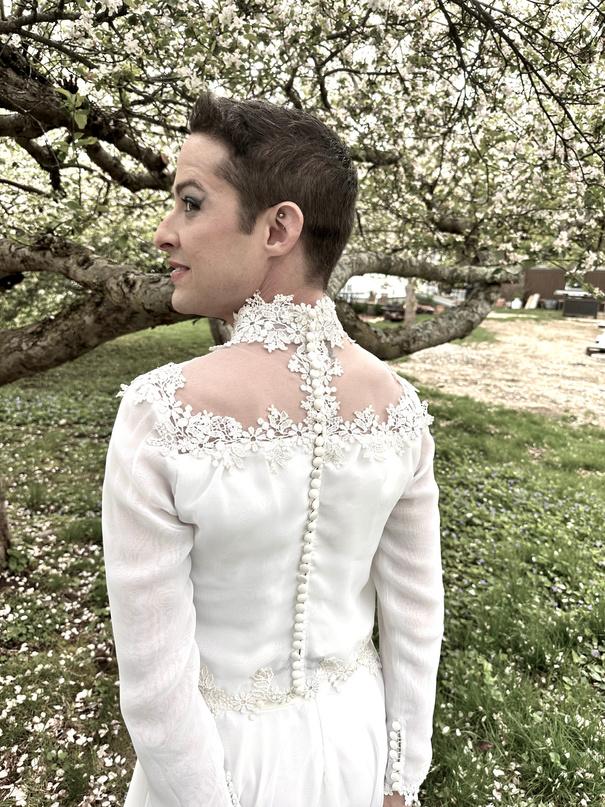
a dress. Standing in the light of genderacceptance and euphoria fostered within me through the grace of the trans and non-binary community, I tossed that discomfort aside and still… it wasn’t right for me. Was I hanging on to internalized anti-trans messages, scared or embarrassed of what others would think?
Did I genuinely experience this outfit as not aligning with my gender identity? In the context of one of the simultaneously most important events of my life and heavily socially gendered, these were not easy questions. Yet regardless of the “why,” the outcome was the same.
So onward Thrift shops. Retail stores. Bridal shops. Online… everywhere online. The skirts were too close to dresses when paired with a lace top. The ivory of a skirt was impossible to match with the ivory of a top. The tops had darts in the bust that couldn’t be altered. I was devastated I’d wasted my friend’s money and made alterations to my mother’s wedding dress that I now knew I’d never wear. Nothing was right Nothing was fixable.
There was nothing for me.
95
So I created it. I felt like I had to choose bet together they merged into a wedding gown were just soft and lilac enough to feel both g p y nervousness in finding someone to create a wedding top for a non-binary person, I found a Slovakian bridalwear designer on Etsy. I looked at lace designs; emails filled with photo after photo of various kinds of lace. I adore lace; I never wanted to see lace again. I got the full back of buttons I longed for, the open back framed with lace, a curved neckline with thick straps that didn’t feel too feminine for me. I sent her my measurements. She did not believe me. I re-measured, telling her I was a “small man,” went back and forth; I sent her pictures. She reluctantly accepted them as fact.
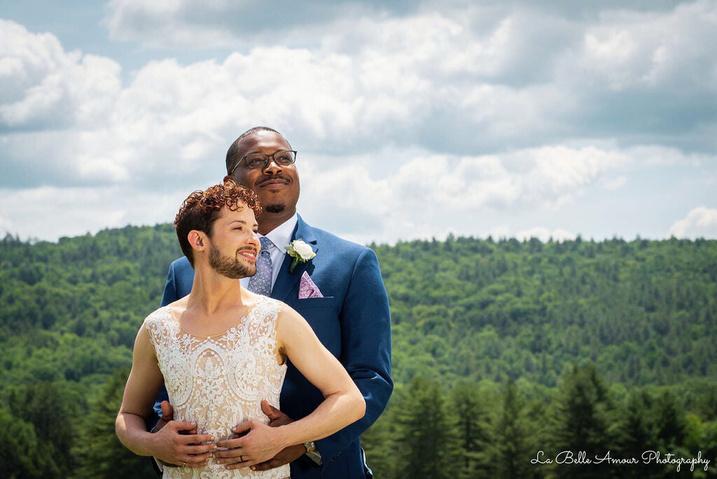
Pearl lip and ear studs, white wedge sandals, and my very dear, deceased grandmother’s borrowed ring: the finishing touches. Standing in the mirror adorned in all the components of this outfit that took more than a year to come to life I at last felt like I’d found my vision amid the cishetcentrism of the wedding industry, and married my foreverlove feeling uncompromised, unafraid, and completely myself.■

96
features
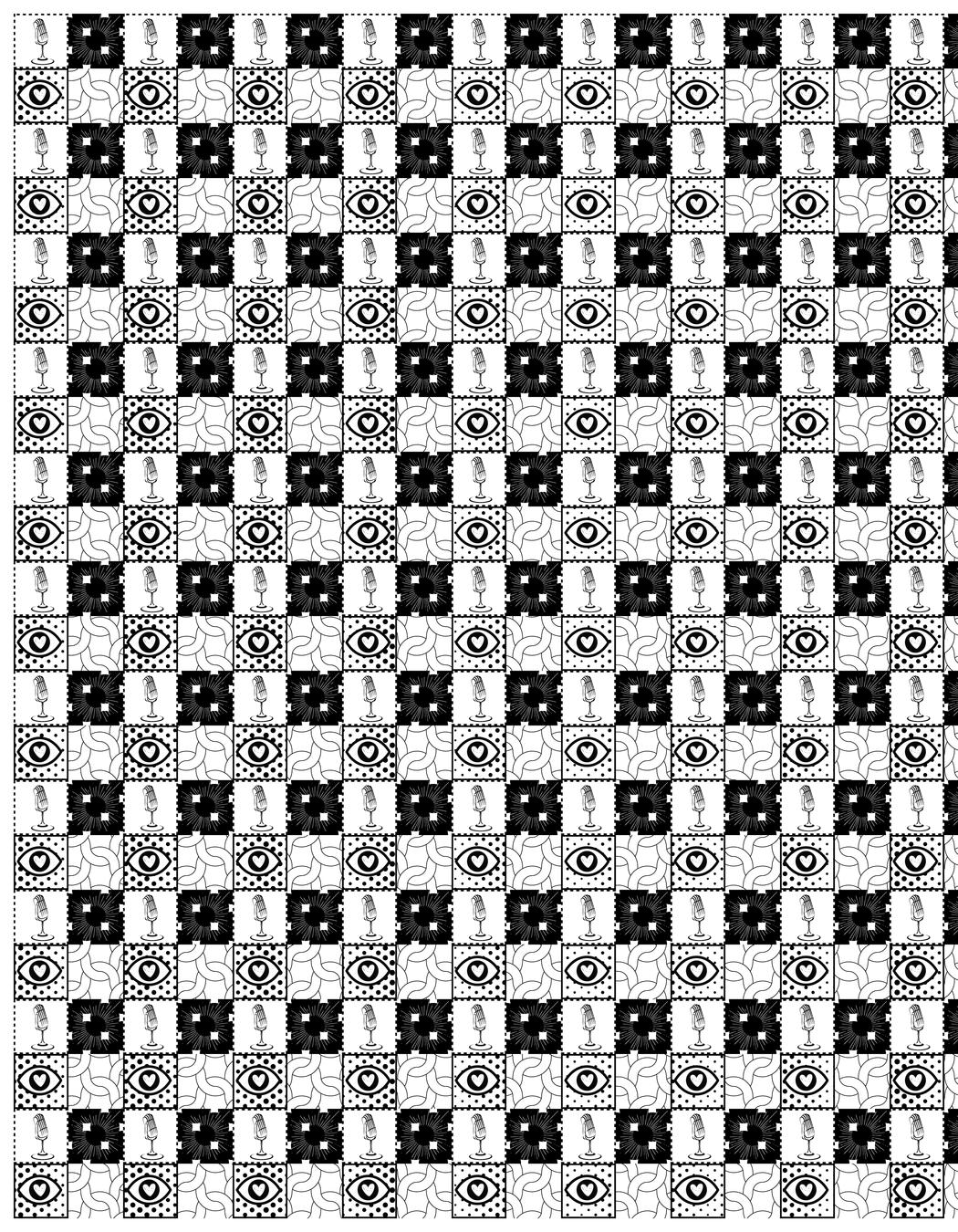

blackisthecolor
When I think of my true love’s hair, whether it could be the shag that falls over their eyes like fringe off a leather jacket, or if it could be the long waves that flow down their back like a spilled ink bottle, it’s always a rich, evening black.
I would love to see how their hair stands out against every pillowcase or against every stucco-covered wall.
How it could guide my eyes up to the vintage chandelier with arms coiled like their twists, or down to the violets they planted to match their highlights.
I kept this space a dull white when I first moved in. I thought scuff marks and nicotine stains would be all the color I’d allow in my home.
But when I started thinking of how I could share this home with my true love, I started to think of how their color could freshen all the coats.
How I could finally find someone who loved my dishwater brown hair as much as I loved their black licorice braids.
I’m finally ready to find that person’s beautiful black and see it against every wall. I just need to let him or her come inside.
98
alexcarrigan
river
barefeetonthebalustrade
i waited for you for months i looked at your form and fell enamoured i pointed my fat toes delicately/to slip through the lips of the window; my lids slammed on grit when i realized the frame had closed, plastic sills sliding past my skinned cartilage // next time, i hummed. next time // i twirled in my dress made from patches of grass made of patches of passed, endless fluttering and bloating and rippling and turning and smiling and tiptoes, raised arms, elbows fall and sparkly things discordant jingle and slammed stopped into an airless wind; i see you again. sliding open. ~ I peek close, my thumbs stroking the glass to find it faked moss, I don’t recognize you at all. ~ i lift my bare calf to climb in anyway then ‘member we’re supposed to dress for the occasion. ~ i press my face my thumbs against the double panes and scan the closet. what boring clothes are this? why was i excited for your shopping racks to spin round again? i can’t wear my prom dress, these torn boots, this starched long stocking braids to marble krystal camouflage tessellation. | if i try to step through this window will i trip on the tasteful attire and what's the use of blood in everyones’ steps? but when i lean my head dejectedly against the turf | i see a sequin peak ‘round the jackets, with feathers and beads and plastic cat ears tucked feral, springs twitching. ~ this, i remember. this is the dance i came for. ~
99
beaded my mothers brooch the christmas book on the shelf the passage in the world encyclopedia wooden strands tucked behind my ear the bears we slid down the stairs evening curtain drawers, I swirl my skirt
my fathers watch the tiller in the yard the strains of buddy holly in the night fishing line filling out my hair the trees I couldn’t climb wee hour folders, I practice my tie
bushes trimmed till roots will die for rocking chairs and counters flowers plucked for potpourri deserts dry stems to sliced paper
roots and leaves make wicker baskets time and you make me showers come, we reappear you and time make me
100
maggiechirdo
likebones,likeskin: goldenshovelafterkimaddonizio
Went to the library and donated the school dance dresses I’ll never don again. Hope the next to wear them is hotter, happier. Hope they wear it (their heart) on all my sleeves like hand-me-downs without any closet full of bones, 2 a.m. selfies with the skirt hiked up like tomorrow they’ll still be the same them under their skin,
101
florals?forspring?groundbreaking.
Well, actually… in spring the florals are literally breaking ground.
That something has been done before is no case not to do it again.
We never say what we mean out loud to mean woman ice queens with snow white, moon white hair. Too busy muscling through the dirt in this slithering season for the mere chance to feel something straining, upturned.
102
intricateritualsfortouch
Hello Kitty tattoos coat the arms of the woman cutting my hair and I can’t help but love her. To love is to trust I’ve put my most precious asset in her care, take her warning seriously: New Orleans is very busy followed up with Spiritually, I mean. Tourists and crowds never bothered me and I try immensely not to bother the dead, only reach out to a few in the cold hours of morning. Groggily think of my Uncle Ross or Dickinson or the last Russian princesses and every dog I’ve ever known. Why question the dead when I can let them play with my hair instead? Do not shout, do not demand proof, only sit still a head in sure hands.
103
billcunningham’sghostleadsme
into the park / Central Park not some obscure / off-the-beaten path park / keeps it obvious / but I’m so thick with grief
Final exams loom / I am a cheap coat / ten tonnes of coffee his stride outpaces mine / an incredible clip His bike stolen / again / His uniform: blue chore jacket, khakis / a perfect disguise for standing out.
I record this following / create video evidence. Proof of only moderate insanity / I delete it.
For a final project in a course called Walking the City I build a tour around Bill’s best known haunts / so a ghost was anticipated / but I can’t keep pace / could never keep pace.
Any time I hear / devout artist / sad lapsed catholic / no family contact / my hand twitches over the big red button labelled GAY / but he’s gone / caught crying in a single interview / and gone now
Whatever he has to show me is out there still / I must believe this.
104
selkiestatisticaloutliers
To find what was stolen and stay anyway will make me a poor representative of my kind. How warm I once was! How foolish I’ll be known!
There’s another who never had hers stolen gave it freely to a human woman who in turn chopped off her heavy hair to join her half the year at sea.
We make mothers myths when mothers leave their children. Conjure spells, rituals, restrictions. Make reclamation a crime. Make nonsense of departure. Whole worlds sprung up to keep mommy away.
Now, the men among my kind are said to never have theirs taken. Instead they lure lovers to the deep. But I’ve met too many washed-up half-men to go on accepting that.
By the salted dawn I look you over and decide to stay. No child tying me, no moral obligation, only my coat on a hook in your closet, my miraculous ankles intertwined with yours. When you wake whatever we have lurches forward on equal footing.
105
theotherside hollygenovese
A Note from the Artist:
For me, resurrection is chaos and this piece illustrates “the other side,” the upside down tropical paradise with murderous cats and bleeding teddy bears. Where toys and pets and pencils and paradise are unsafe, are distorted. Where, maybe, we actually live. But the other side is leaching into the present, the dead (be it the skeleton or the ghosts of women writers haunting), Jonathan Van Ness, it is impossible to escape. It is a chance for the dead to be resurrected, to become the undead, as Jonathan exasperatedly claims space as the living, sighing while wearing a ball gown and glitter and a cape. How can queer bodies claim space, claim time, in the midst of the end of the world?
106

kingsandnotgirls gabemontesanti
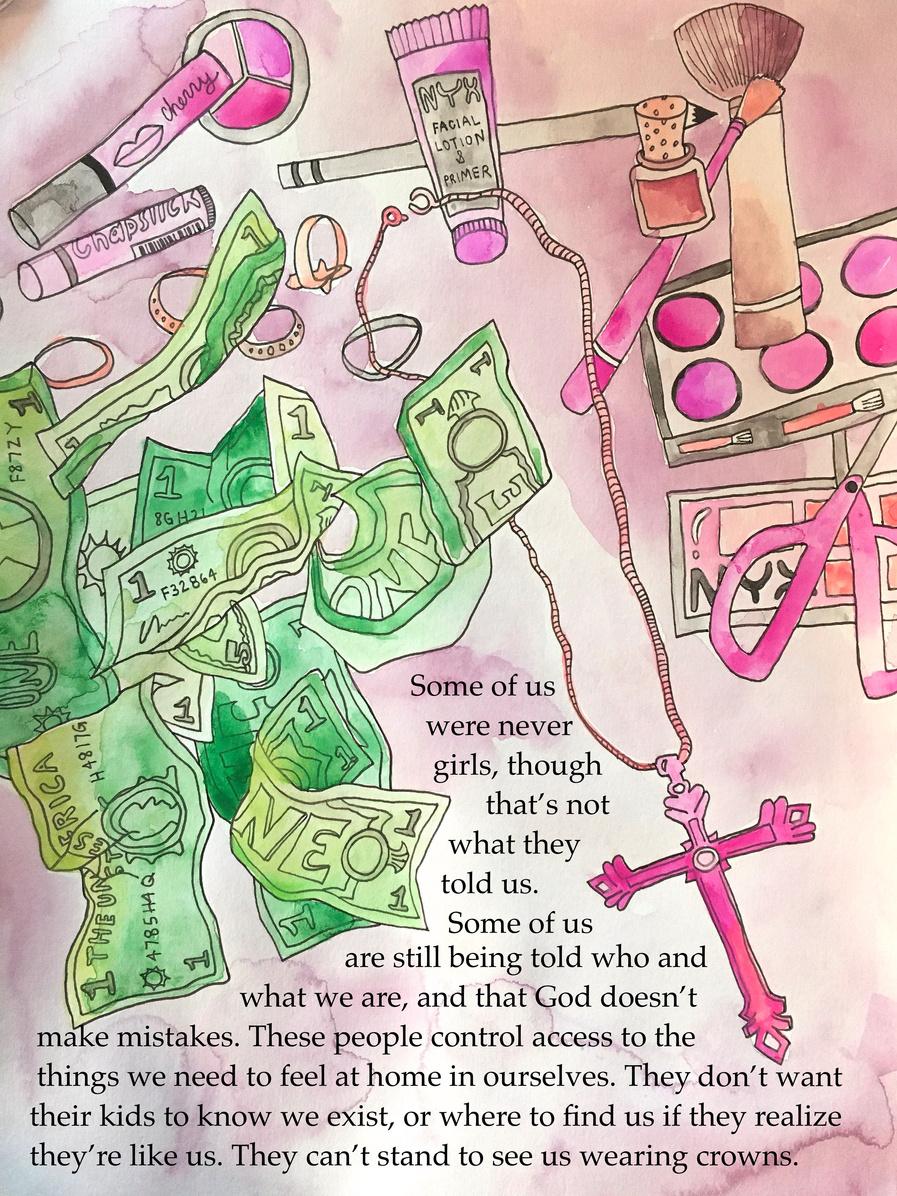
108
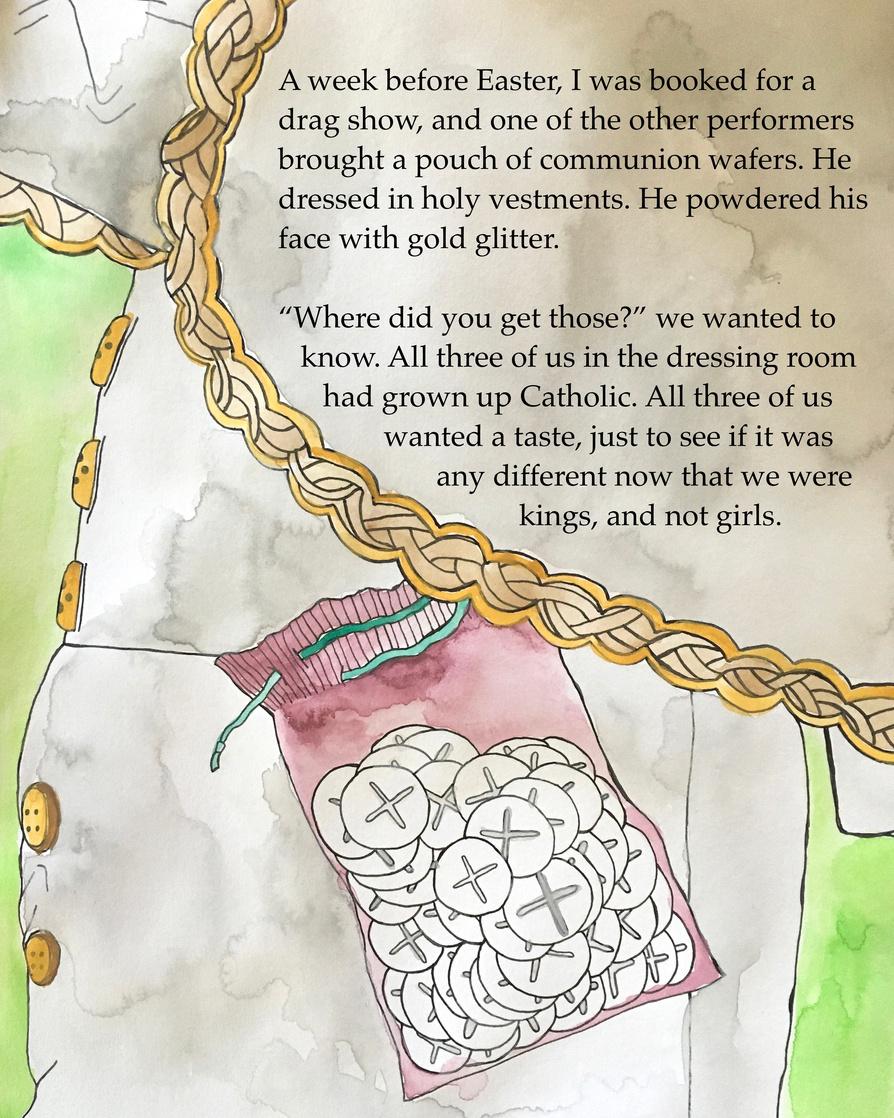
109
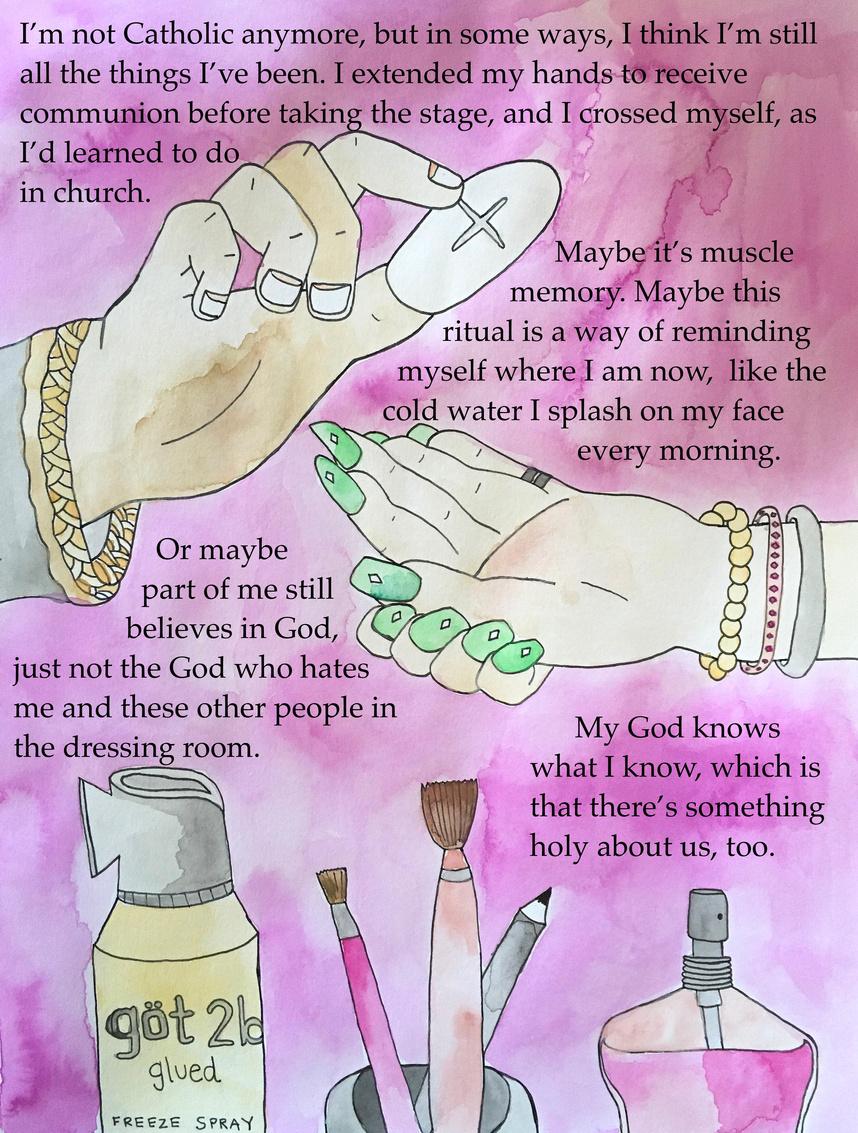
110
thegender-affirmingcloset, aflashprimer alisonlubar
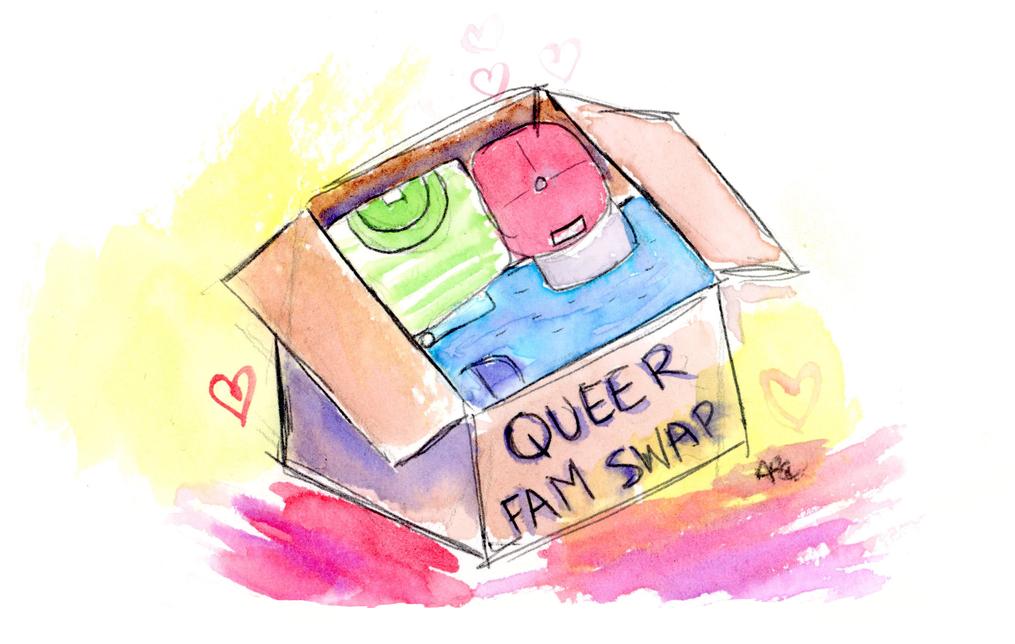
We have three piles: keep & fold, sewing projects, and queer clothing swap. E & I are three weeks post-elopement-party, and I feel a rush of relief at never having to wear a white dress ever again. Or maybe never even wear a dress again.
As a self-proclaimed “themme,” I feel both the tension and liberation of nonbinary identity in a femme-presenting form (for the moment). I love florals. Anything with a goth nod. Something waist-cinching, with boning, lace, & velvet. But a part of me feels confined by my former gloomcookie self–I had a decade of preppy aspirations while I began my career and felt trapped in not only gender norms, but a kind of compulsory femininity and “woman-ness.” E, on the other hand, is the surfer-boi 90s Leo-lookalike of my dreams. All golden retriever.
111
E holds up a black buttondown with tiny white and blue flowers, tucks up the bottom to crop it, and shrugs. We aren’t a lesbian couple whose UHauling doubled our closets–we have little crossover in aesthetics, but revel in sharing when it feels affirming. Recently, they used a gold & pearl hair pin of mine as a tie clip. I’ll borrow a flannel and tie it in the front, atop a lacey pastel bralette.

We eloped in July, taking four friends of ours to California’s redwoods and subsequently the shoreline, in my birth state. Traversing coasts has been one of the many binaries I felt bisected by–not to mention gender identity and race. I wore another white dress, and a tulle cape with pearls; E wore a white suit from Bindle & Keep, and a wave-printed shirt. In my femme-drag, on that day, I still felt like myself, lashes and all. But I still wondered if I chose what I wore because it was expected of me–were we still playing into some comphet binary?
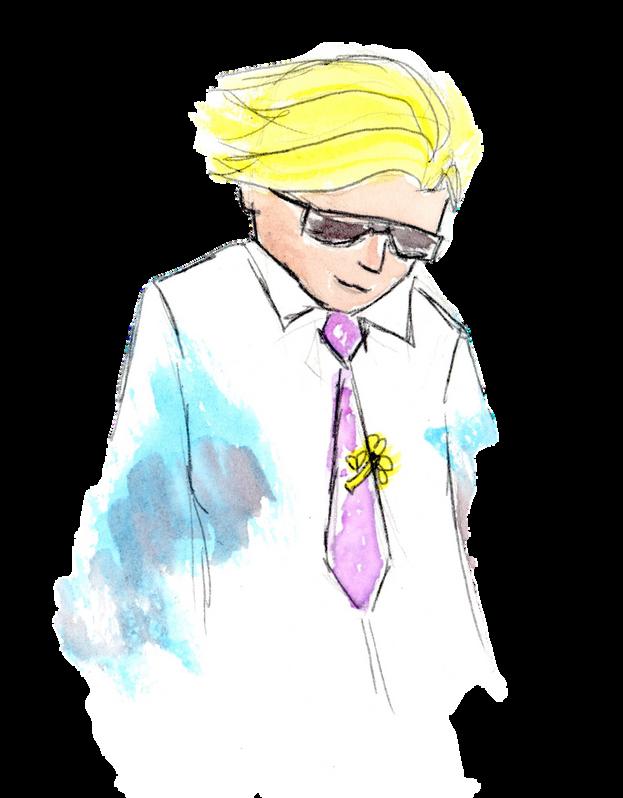
112
Creating a gender-affirming closet is principled on the moment, a Polaroid of self & aura, with an attention to what the day (or evening) might bring. Platform Converse and motorcycle boots for a night of dancing in the gayborhood. A tie-dyed twill jumpsuit with black mesh turtleneck underneath for a chilly poetry reading. Our best REI-dad vibes in olive & taupe & clay for a nature march with the dogs. Cutting off the sleeves of all of my t-shirts, or E learning to tailor the perfect jorts.

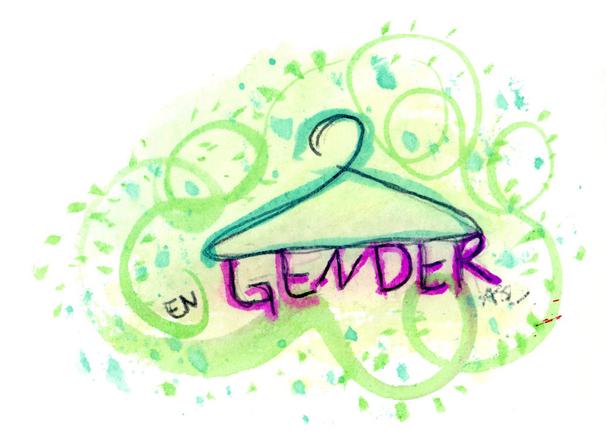
We describe our love as sunshine-from-the-inside-out, and that blooming and glowing is the basis of all sartorial choices. When I feel like I have nothing to wear, or that nothing looks good, or I’m catatonic on the bathroom floor in another half-buttoned ill-fitting flouncy something from a past life, they’ll just ask me, “What feels good to wear today?” It means dressing to match the inside, the weather, the stars, or even just how I feel after breakfast.
How can what we wear meet the needs of the moment? The more I ask this question, the more in tune I become with myself, affirmed and grounded. And even if I choose to one day wear a white dress again, for a vow renewal or anniversary, or just because, I know that I never have to masquerade as, or be anything, that I’m not. ■
113
Inmyfemme-drag,onthat day,Istillfeltlikemyself, lashesandall.ButIstill wonderedifIchosewhatI worebecauseitwasexpected ofme—werewestillplaying intosomecomphetbinary?
luckygirl claraotto
During a driving lesson, my aunt told me that growing up my mother always had a boyfriend. Hungover, I maneuvered the car through the winding roads of my hometown.
My aunt was the oldest, my mother the middle child. My aunt a softball player, my mother a gymnast. My aunt a redhead, my mother a brunette.
Before it got bad, people said my mother was the life of the party, the life of any party.
I inherited this from her and then disavowed it.
I arrange rows of pink objects on my desk: a glass candle holder, lip gloss, two flower-shaped hair clips, a tin of translucent powder, a single earring shaped like a cat, a mechanical keyboard, and a matching mouse.
For most of my adult life, I have understood myself as the object of desire rather than the subject.
Amelia talks about Transgender History, about how Susan Stryker writes about the power of being the object, of how this is related to claiming otherhood.
Lucky girl syndrome is the latest interpretation of the “law of assumption.” It’s the idea that when we act as though what we want is already our reality –and believe it – then we are rewarded with the things we most desire in life.
Pink textures: bumpy, dull, sharp, scratchy, sandy, silky.
Before going to a Taylor Swift-themed night at a club, I joke that I have to be non-monogamous because I’m such a slut. A friend gasps and then says, Don’t call yourself that.
114
Romantically, I have loved two people. Platonically, I have loved fourteen.
I have been lucky.
When I say love I mean soul-shaking.
My mother had a type of beauty that was obvious and I was born my father’s double.
All my life, I have been told I have been lucky, that tragedy builds character.
A video: a woman in a robe walks down a hallway and then jumps on the bed of another woman. The caption: “When I realize I haven’t annoyed my sister with every single thought I have had in the past twenty-four hours.” I consider sending it to Amelia but she doesn’t have Instagram or TikTok and sending a link via text is too much work.
My aunt lost a soul-shaking friendship. They lived down the street from each other. Her friend would ride horses past my aunt’s house and my aunt would pretend not to hear the hoof steps, wouldn’t look out the window.
What if she had?
Shades of pink: baby, ballet, barbie, cotton candy, champagne, orchid.
My mother always told me, “You can choose your friends, not your family.” I chose Amelia outside a hole-in-the-wall bar where they served cocktails in bags in a city known for having beautiful women, hot summers, and excellent plastic surgeons.
When my aunt moved out of the house down the street from her soulshaker she wasn’t (still isn’t) talking to me or my mother so I don’t know if they reconciled.
Amelia and I met every Thursday night at a café on the second story of an office building. It looked out over the heart of my neighbourhood. We ordered affogatos and I talked about how I hated my job. Neither of us wanted to be like the teachers who had been here for a decade, the people who get trashed at foreigner bars every weekend. A future that only goes in one direction.
We had our hands on the wall, feeling for hinges.
Pink materials: clay, cotton, resin, spandex, porcelain.
115
From the ages of twelve to eighteen, I was catcalled each time I left the house. Usually by grown men, usually in trucks.
On the internet, the younger generation talks about sleeping with men as an act of self-harm and I think yes. And then maybe the kids will be all right.
As of one week ago, I have slept with as many non-men as I have men. I hate saying non-men, but gender-specificity is such a mouthful.
Like my father, I have a penchant for women with dark hair. Unlike my father, I’m meticulous, detail-oriented, would never set foot on a pair of skis, a snowboard, or an ATV.
Pink is an arbitrary classification of colour meaning that it is just desaturated shades of other colours.
I was born without a lot of choices poor and girl and worse and smalltown and single-mothered and this and that and the rest of it. But I have been lucky. I mean it. I have had more options than any woman in my family has ever had.
My aunt ran a nursery, always had her hands in the earth claimed her fibromyalgia was cured with evening primrose oil but had trouble remembering the names of the plants she loved.
If you cut the past, what colour does it bleed?
I show Amelia the bite mark on my thigh and she says, “Good work.”
What I like about being an object is the absence of thought. What I like about submission is not having to make a choice. The more responsibility in my life, the more choices I have.
Pink dream: windchimes by the front door, a crab-apple tree in the front yard, brambles of blackberries along the fence.
People who know me now say it’s not luck, but from a young age, I knew to run my hands along the walls, knew the difference between the hinges of a trap and a jib door. How did I know?
When I was leaving for university, my aunt wanted me to take her old plates with me. Heavy ceramic, midnight blue. I didn't have room.
Why all the pink? Why all the sparkles? What use does a kid in the middle of nowhere whose mother is struggling to pay the rent have for porcelain? For pink? The world will say that kid needs to learn to be tough.
116
I never learned. I fall in love seven times a day.
(Not the soul-shaking kind.)
In her SUV, my aunt said she was surprised I didn't end up an addict and then took me to a used electronics store to buy a laptop that I could take to university. Later, when I turned the computer on, there were still photos of the last owner, an older woman looking into a camera like she wasn’t expecting to see herself. My aunt put her hand on my shoulder as we left the store, told me to always save my receipts.
I think she thought she could save me.
Wrapped in a pink satin house robe, I sit in front of my bedroom mirror and take nudes, adjusting the robe to reveal more thigh, more breast.
Pink body: The skin beneath my fingernails, areolas, labia minora, clitoris, lungs, intestines, brain, bladder. But beyond the biological pink, the pink that matters, the pink that finds pink out in the world, I don’t know where those pinks live. Maybe in the heart but the heart is usually, unarguably, red (saturated pink).
What use is being saved if there’s no glitter? No sparkles? No pink? What use is being saved if desire becomes a contract?
The door that led out of my hometown wasn’t shiny. It led to places that felt like the wrong direction. At times, I had to double back, make imperfect choices. There were moments of compromise that felt like failure, but all along the way there were friends slipping rhinestones into my pockets, sending sequins in the mail, pushing tulips into my buttonholes.
Pink present: kissing friends hello and goodbye, my cats in the garden stomping through wildflowers, pictures of bruises in a hidden album on my phone (pink in the places where they’re healing), handmade chapbooks annihilated with glitter and scented glue, the road outside the house I rent thick with cherry blossom petals each spring.
117
abouttheartists
Michelle Zacarias is an award-winning writer and adjunct instructor at USC’s Annenberg School for Communication and Journalism. Born and raised in Chicago, Michelle currently resides in Southern California. As a queer disabled Latina she is passionate about issues surrounding accessibility, abolition and topics impacting marginalized communities. She has previously written for Teen Vogue, CALO News, The Triibe, City Bureau, People’s World, and more. In 2018, Michelle was awarded the Saul Miller Excellence in Journalism Award and in 2020 she was inducted into Chicago’s LGBT Hall of Fame for her contributions to the field. She obtained her bachelor’s degree in English and Philosophy at the University of Illinois in Urbana-Champaign and her Masters in Studies of Law from USC Gould School of Law.
Nick Van Zanten (they/them) is a nonbinary artist born in Chicago and now based in Brooklyn. They received their BFA from Pratt Institute and their MFA from the University of Illinois at Chicago. Their work has been shown throughout the United States, and been written about in Art in America.
Marta “Elena” Cortez-Neavel (she/her/they/them) is a queer, neurodivergent, MexicanAmerican artist, designer, and activist based in Austin, Texas. Her work focuses primarily on disability, gender, and size inclusion in fashion and the creative industries. Elena is the creative director and lead designer of Abilitee Adaptive Wear, and the founder of Futurekind Studio, an inclusive creative home for other marginalized artists.
SG Huerta is a queer Xicanx writer from Dallas. They are the poetry editor of Abode Press and author of the chapbooks The Things We Bring with Us (Headmistress Press 2021) and Last Stop (Defunkt Magazine 2023). Their work has appeared in The Offing, Split Lip Magazine, Infrarrealista Review, and elsewhere. SG lives in Texas with their partner and two cats. Find them at sghuertawriting.com or tweeting @sg poetry.
Alison Lubar teaches high school English by day and yoga by night. They are a queer, nonbinary, mixed-race femme whose life work (aside from wordsmithing) has evolved into bringing mindfulness practices, and sometimes even poetry, to young people. Their work has been nominated for both the Pushcart & Best of the Net, and they’re the author of four chapbooks: Philosophers Know Nothing About Love (Thirty West Publishing House, 2022), queer feast (Bottlecap Press, 2022), sweet euphemism (CLASH!, 2023), and It Skips a Generation (Stanchion, 2023). You can find out more at alisonlubar.com or on Twitter @theoriginalison.
118
Ashish Kumar Singh (he/him) is a queer Indian poet whose work has appeared in Passages North, Chestnut Review, Fourteen Poems, Foglifter, Banshee and elsewhere. Currently, he serves as an editorial assistant at Visual Verse and a poetry reader at ANMLY.
Cara Pleym could tell you many things about herself, most of which are true but few that would make sense. Her work is often uncomfortably, brutally honest and interrogates trauma in a way which might not be completely healthy. The poetry is melancholy and angry but tells the story of evolving identity and the ever-present spectrum of mental health.
Aubry Threlkeld (they) grew up in and around Charleston, SC and currently live in Boston, MA with their spouse Erik and two cats, Mia and Boris. They identify as a white person of Roma(ni) descent, queer, and genderqueer. Their writing is typically autoethnographic and/or ekphrastic and centers on mental illness, disability, and 2SLGBTQIA issues. They have poetry featured in Stone to Stone: A North American Romani Women’s Anthology (Propertius) and a recent memoir in Tinfoil Hats: Stories by Mad People in an Insane World (Autonomous Press). They grew up with their grandmother and mother speaking Angloromani, playing cards, and laughing whenever possible.
Erik Fuhrer is a queer, nonbinary poet, playwright, and scarf tie aficionado whose fashion sense is part Buffy Summers, part Blanche Devereux, and part the lion from The Wizard of Oz. Their most recent book, Gellar Studies (Spuyten Duyvil, 2023) hailed as “exceptionally delectable and devastating” by Addie Tsai, creatively engages with the work of icon Sarah Michelle Gellar to unfold personal narratives of queer trauma. Erik is also the author of 6 additional books of poetry and one play. Their memoir, My Buffed Up Life, which features Buffy the Vampire Slayer as a fictional interlocutor is forthcoming in 2024 from Spuyten Duyvil Press. A combination of My Little Pony and watching Sarah Michelle Gellar chew the scenery in All My Children, and everything since, solidified their queerness at a young age. Their Tenderheart Bear obsession may or may not be over.
Davin Makokha writes fiction and non-fiction drawing from Queer and African experiences featuring thought provoking anecdotes, dazzling multi-cultural references, and strong relationships. She promises to pull heart strings, offer a few laughs, and share tidbits of relatable experiences.
Dan Dy-Liacco (they/them) is an illustrator, graphic designer, and jewelry crafter with ADHD from the Philippines.They co-created the award-winning comic “Flow”, published in the anthology Komiks Cum Laude. Their map illustrations have appeared in the fantasy novels Astrid’s Apostle and Daughters of Astrid. Their illustration
“Welcome to Wonderland: Tea Time”, winner of the 2022 Welcome to Wonderland JFashion Art Competition, will feature in the upcoming volume of Lolita fashion magazine Lolita Memoires. They can be found online under the handle @DrawnByDandy. Their jewelry shop can be found under the handle @GleamTrove.
119
Ethan Wood is a recent graduate from University of North Texas with a BA in English/Creative Writing. His writing has also appeared in Volume 22 of North Texas Review and NTR Online. His personal essay “Lapse” was nominated for the 2022 Norton’s Writer’s Prize. He currently lives in Denton, Texas with his cat, Ollie. You can find him on Instagram @ethantw00.
lauren samblanet is a hybrid writer who cross-pollinates with other forms of making & other makers of forms. her book, like a dog, is forthcoming from punctum books. some of her writing has been published in a shadow map: an anthology by survivors of sexual assault, fence, dreginald, entropy, bedfellows, the tiny, crab fat magazine, and aglimpseof. she facilitates workshops through reinventing creative process.
Max Stone is a poet from Reno, Nevada. He has an MFA in poetry and a BA in English with a minor in Book Arts and Publication from the University of Nevada, Reno. He was born and raised in Reno but has lived in various other places including New York City, where he played soccer at Queens College. Max is passionate about building the literary community in Reno, he frequently organizes poetry readings and he worked with Nevada Humanities to plan the 2022 Literary Crawl. He is the author of two chapbooks: The Bisexual Lighting Makes Everyone Beautiful (Ghost City Press, forthcoming Summer 2023) and Temporary Preparations (Bottlecap Press, 2023). His writing has appeared in & Change, fifth wheel press, Bender Zine, Night Coffee Lit, Black Moon Magazine, The Meadow, Caustic Frolic, Sandpiper, and elsewhere.
Gion Davis is a trans poet from Española, New Mexico where he grew up on a sheep ranch. His writing has been featured in HAD, MAYDAY Magazine, Sprung Formal, and others. His debut collection Too Much (2022) was selected by Chen Chen for the 2021 Ghost Peach Press Prize. Gion can be found on Instagram @starkstateofmind & on Twitter @gheeontoast.
Pim Halka (ze/zir or he/him) is a visual artist with connections to the ancestral lands of the Monacan Nation (Lynchburg, VA, USA) and Pataxó (Salvador, Bahia, Brasil). Ze are committed to creating community artwork. Collaborating to build youth mural projects, an anti-racist sewing circle, intergenerational storytelling program and free online art learning communities to name a few. Ze have traditionally created using paint and am currently playing with mixed media and animation. Zir work is inspired by divine intervention, moments of supreme clarity, and spontaneous creation.
Brody Parrish Craig is the author of Boyish, the winner of the 2019 Omnidawn Poetry Chapbook Contest, and editor of TWANG, a regional collection of trans, gender nonconforming & nonbinary creators. Their first book, The Patient is An Unreliable Historian, is forthcoming from Omnidawn in 2024. Find more on their work at brodyparrishcraig.com.
J Frausto (they/them, he/him) is a Mexican/Puerto Rican Chicago native who identifies as queer. They found their style through their gender expression that led to being an androgynous thrift stylist. After styling people who identified as queer they realized there is a need to bridge the gap to make clothes gender affirming.
120
Angel Leyba is a queer, Latinx writer and creative from South Bay San Diego currently located in Oakland. They received their BA in English from UC Berkeley where they also served as the Managing Editor of Berkeley Poetry Review. Her words have appeared in Honey Literary, Perhappened Mag, and Soft Quarterly. You can find them on Twitter @xspacebar.
Steph Scott (she/her) is a queer writer and former middle and high school English teacher. She holds an MFA in Creative Writing Young Adult Literature and believes all stories should have an element of hope, no matter how dark. Her novel Come Back Alive was recently longlisted for the Voyage Literary “Love & War” contest, and her poem, “Bacon,” is published on SadGirlsClub.org. She lives in the Pacific Northwest with her spouse, their teenager, and two dogs too big for their house. She is represented by Lizz Nagle at Victress Literary and can be found at skscottwriter.com and on Twitter and Instagram as @skscottwriter.
J.D. Gevry (they/them; he/him; fae/faer) is an emerging poet from Vermont whose writing is heavily influenced by their experiences as a queer, polyamorous, non-binary and trans person with a disability. Their work has appeared or is forthcoming in several journals, including The Write Launch, Spillwords, and Lit Shark. J.D. is currently on the long-list for the 2023 erbacce-prize. Fae has a bachelor's degree in human sexuality and Master of Public Health, focused on sexual health and LGBTQ+ community wellness. They reside in Massachusetts with their husband and several slowly dying plants.
Alex Carrigan (he/him) is a Pushcart-nominated editor, poet, and critic from Virginia. He is the author of May All Our Pain Be Champagne: A Collection of Real Housewives Twitter Poetry (Alien Buddha Press, 2022), and Now Let's Get Brunch: A Collection of RuPaul's Drag Race Twitter Poetry (Querencia Press, forthcoming 2023). He has had fiction, poetry, and literary reviews published in Quail Bell Magazine, Lambda Literary Review, Barrelhouse, Sage Cigarettes (Best of the Net Nominee, 2023), Stories About Penises (Guts Publishing, 2019), and more. For more information, visit carriganak.wordpress.com or follow him on Twitter @carriganak.
River (they/them) is a queer poet. They have fabulously queer children and a cat who does all the magnificently cat things that cats do.
Maggie Chirdo (she/her(s)) is a writer from a humid slice of southeast Texas. Her poetry and journalism appears in Texas Observer, Entropy Magazine, Bitch Media, Little Blue Marble, and elsewhere. If Twitter still exists, come chat with her about fashion and the queer southern gothic @maggiechirdo.
Gabe Montesanti is the author of the roller derby memoir, BRACE FOR IMPACT (2022). Her work has been published in HuffPost, LitHub, Creative Nonfiction Magazine, Electric Literature, and Brevity. Her essay, “The Worldwide Roller Derby Convention” was recognized as a notable essay in The Best American Essays 2020.
121
Holly Genovese (they/them) is a non-binary neurodivergent Austin-based writer, artist, content creator, and very tired Ph.D. Candidate in American Studies at UT Austin. Their visual art is primarily collage, mixed media, and acrylics and they served as art director for the 2021 issue of PubLab and have shown their work at the Da-Vinci Art Alliance in Philadelphia. Their writing has been published all over the internet and you can find out more at holly-genovese.com.
Clara Otto (she/they) is a queer writer living on the unceded traditional territories of the xʷməθkʷəyəm (Musqueam), Sḵwxwú7mesh (Squamish), and səlilwətaɬ (TsleilWaututh) Nations. Their writing has appeared in The Ex-Puritan, Plenitude Magazine, Foglifter and elsewhere. When not writing, they are scouring thrift stores for pottery and drinking bubble tea. Find them on social media: @claraotto411.
121
abouttheteam
Addie Tsai (founder & co-editor in chief, features, fat + furious) (any/all) is a queer nonbinary artist and writer of color who teaches creative writing at William & Mary. He received her Master of Fine Arts from the MFA Program for Writers at Warren Wilson College and their PhD in Dance from Texas Woman's University. They also teach in Goddard College's MFA Program in Interdisciplinary Arts and Regis University’s Mile High MFA Program in Creative Writing. Addie collaborated with Dominic Walsh Dance Theater on Victor Frankenstein and Camille Claudel, among others. Addie is the author of Dear Twin and Unwieldy Creatures, which is a Shirley Jackson Awards finalist for Best Novel. She is the Senior Prose Acquisitions Editor for Abode Press, Fiction co-Editor and Editor of Features & Reviews at Anomaly, and contributing writer at Spectrum South. Find them on Twitter @addiebrook and Instagram @addieisunwieldy.
Sarah Sheppeck (co-editor in chief, the glow up, the mane attraction, afrodisiac) (she/they) is a graduate of U.C. Riverside’s Palm Desert Low-Residency MFA program in Creative Writing and Writing for the Performing Arts. She earned her Bachelor of Arts degree in English from the University of Rochester and her Master’s in Secondary Education and Curriculum from the University of Nevada, Las Vegas. Born and raised in upstate New York with stints in Las Vegas, Los Angeles, and the woods of northern Maine, she is now back in her home state with her pit mix, Chloe. Find her on Twitter: @EpicSheppeck.
jj rowan (sew what, not what it seams) (they/them) is a queer nonbinary writer and dancer working in a web of fusion-based movement practices, diary, correspondence & collaboration, intuitive ritual, traveling scraps of paper, and, most recently, in a treehouse in a little wooded corner of New Hampshire. Their chapbook, a simple verb, is available from Bloof Books. Find them at www.jayjayrowan.com and on Instagram: @stepswritely.
122
Jen St. Jude (solemates, (get your) thread in the game)
(she/they/mx) is the managing director at Chicago Review of Books, and has work in Gigantic Sequins, The Rumpus, and Catapult. She is the author of debut YA novel, If Tomorrow Doesn't Come. Find them on Twitter: @jenstjude.
Kirin Khan (triple thread(s))
(she/her) is a writer living in Amsterdam, the Netherlands who calls Albuquerque, New Mexico her hometown, and Peshawar, Pakistan her homeland. She is grateful for fellowships from PEN America Emerging Voices, SF Writers Grotto, AWP's Writer to Writer program, and SJSU's Steinbeck Fellowship, and residencies from the Vermont Studio Center and Tin House. Her essay “Tight” was nominated by Nat. Brut for a 2018 Pushcart Prize. Her work has appeared in Corporeal Khora, The Margins, Your Impossible Voice, 7x7.LA and elsewhere. Find her on Twitter: @kirinjaan, and her work at kirinkhan.com.
Sky Cubacub (cancel & gretel)
(they/them) is a non-binary disabled Filipinx queer from Chicago, IL. Rebirth Garments is their clothing line for the full spectrum of gender, size and ability. They maintain the notion of Radical Visibility, a celebratory movement based on unapologetically flaunting our bodies through the use of bright colors, exuberant fabrics, and innovative designs. Sky was named 2018 Chicagoan of the Year by the Chicago Tribune and was a 2019/2020 Kennedy Center Citizen Artist and a Disability Futures Fellow. Rebirth Garments has been featured in Teen Vogue, Nylon, Playboy, the New York Times and many more! Find them on Instagram, TikTok and Twitter @rebirthgarments.
Jo Davis-McElligatt (no scrubs)
(she/her) is queer Black woman and mama to the best kid ever. She is an Assistant Professor of Black Literary and Cultural Studies and affiliated faculty in Women’s and Gender Studies at the University of North Texas, where she teaches graduate and undergraduate courses in Black studies, comics studies, and southern studies. She is the co-editor of three collections: Narratives of Marginalized Identities in Higher Education: Inside and Outside the Academy; Narrating History, Home, and Nation: Critical Essays on Edwidge Danticat; and BOOM! @*#&! Splat: Comics and Violence. She is currently writing her first monograph, Black and Immigrant: The New African Diaspora in American Literature after 1965. Find her on Twitter: @jcdmce.
123
Michelle Zacarias
Nick Van Zanten
Marta Elena Cortez-Neavel
SG Huerta
Ashish Kumar Singh
Cara Pleym
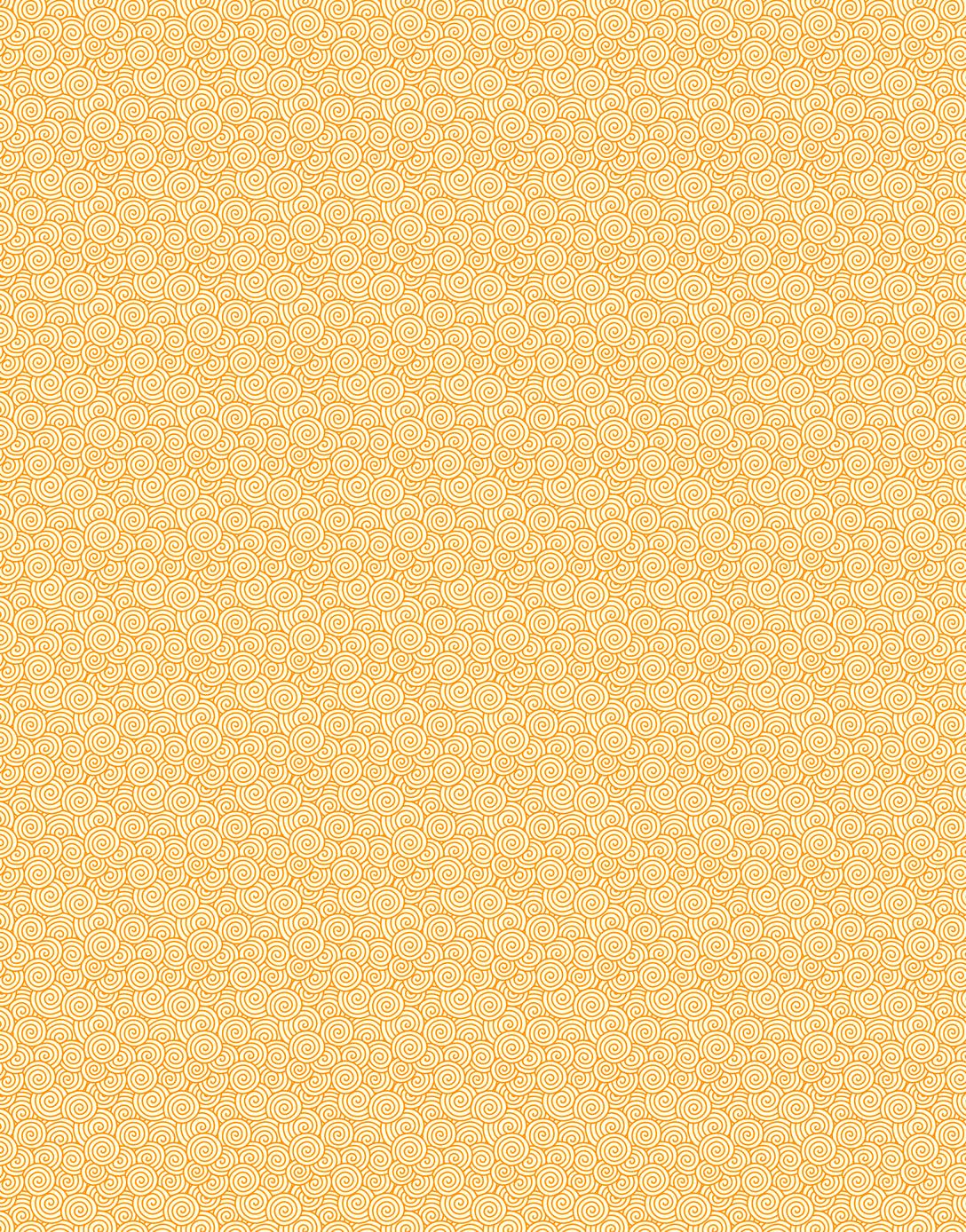
Aubry Threlkeld
Erik Fuhrer
Davin Makokha
Ethan Wood
lauren samblanet
Dan Dy-Liacco
Max Stone
Gion Davis
Pim Halka
Brody Parrish Craig
J Frausto
Angel Leyba
Steph Scott
J.D. Gevry
Alex Carrigan
River
Maggie Chirdo
Gabe Montesanti
Holly Genovese
Alison Lubar
Clara Otto
justfemmeanddandy.com
inthisissue










































































